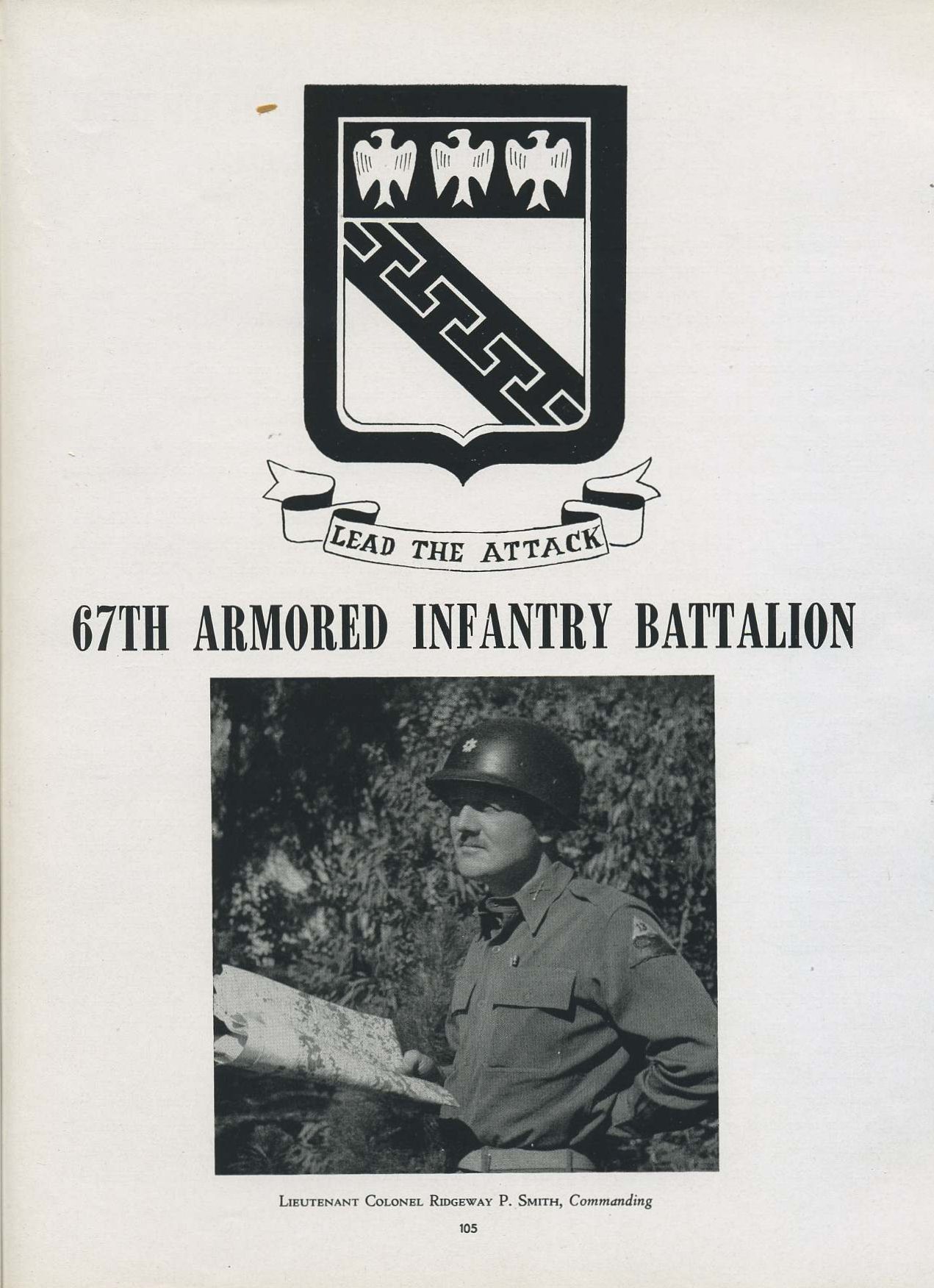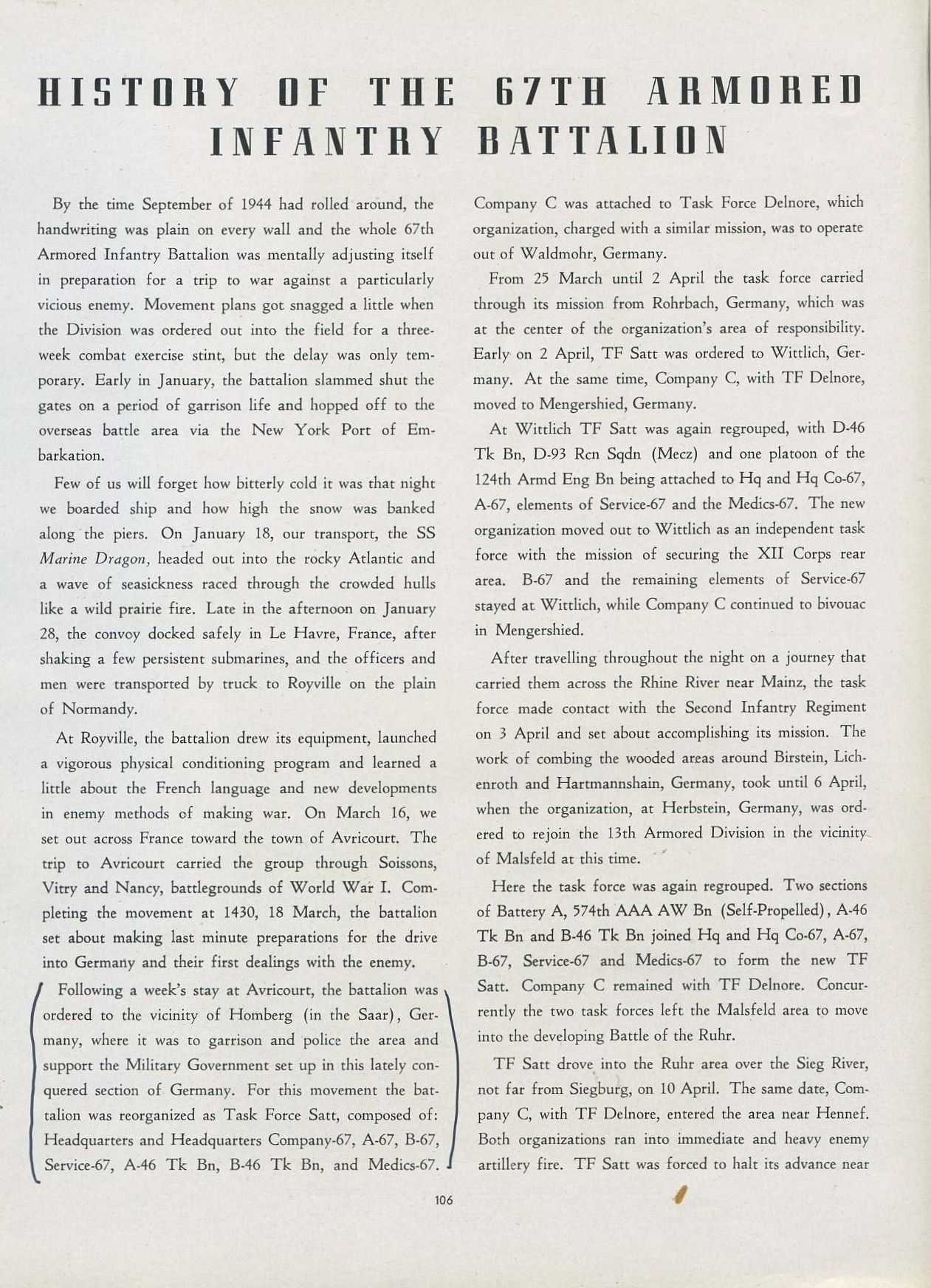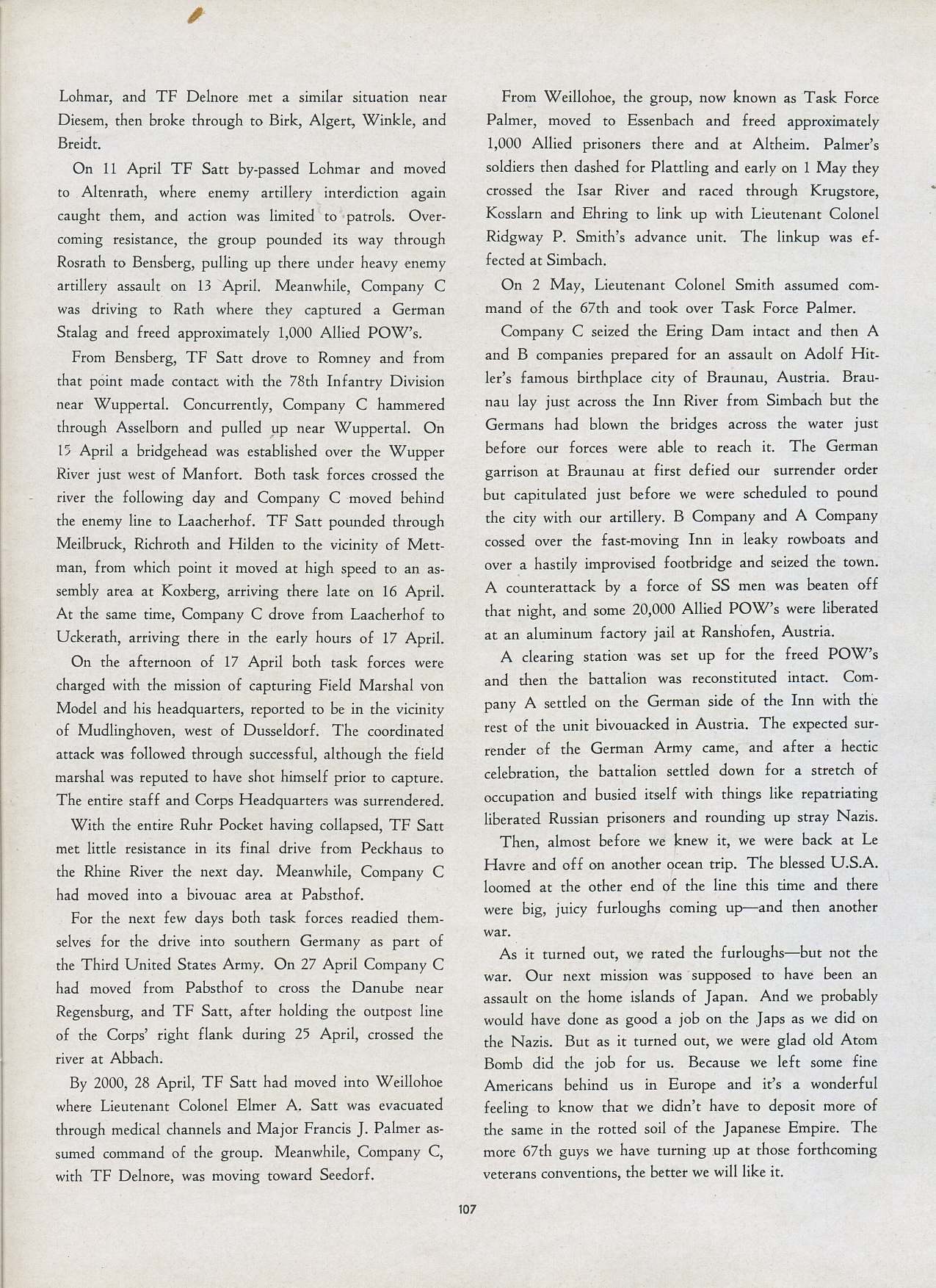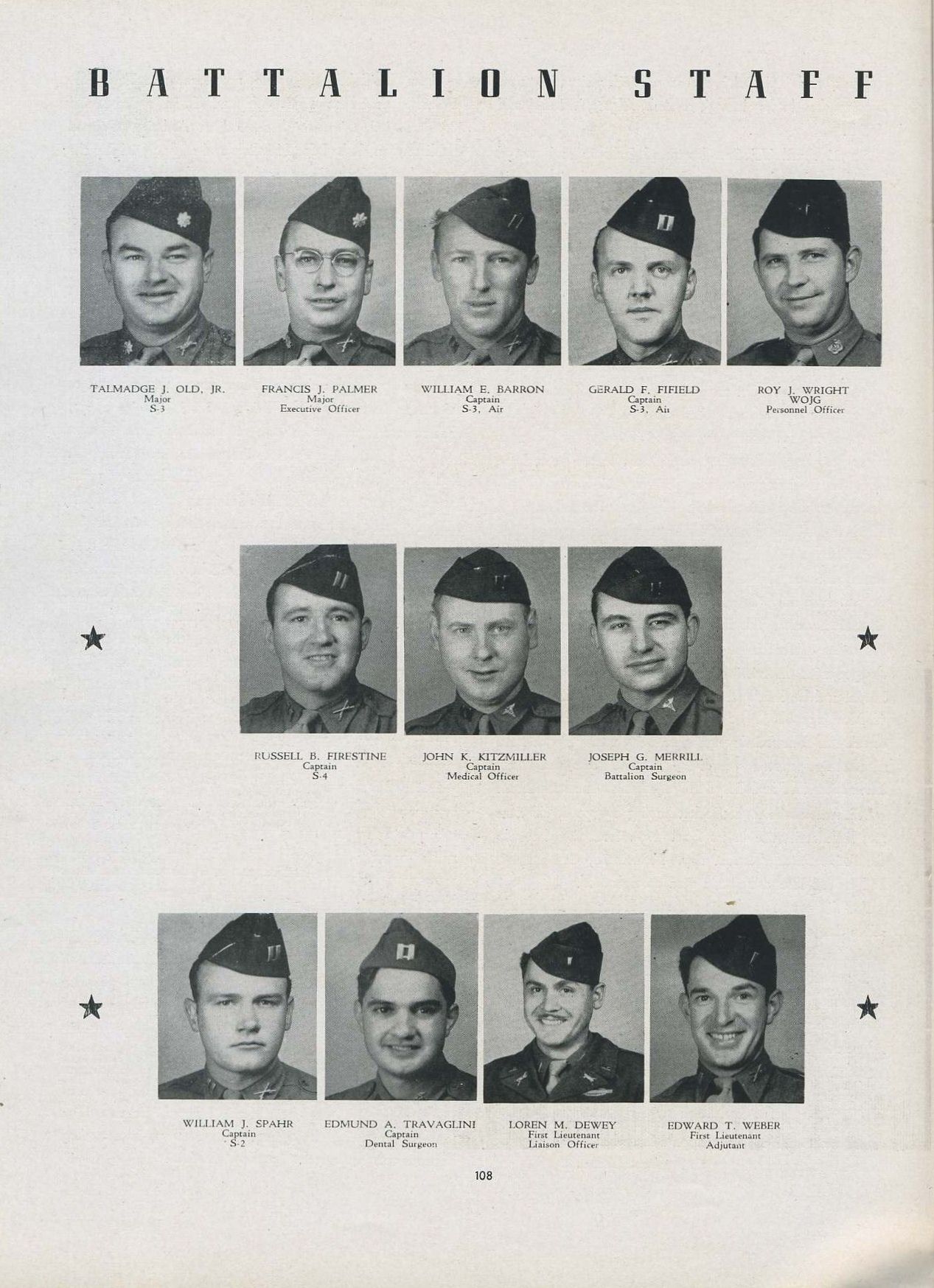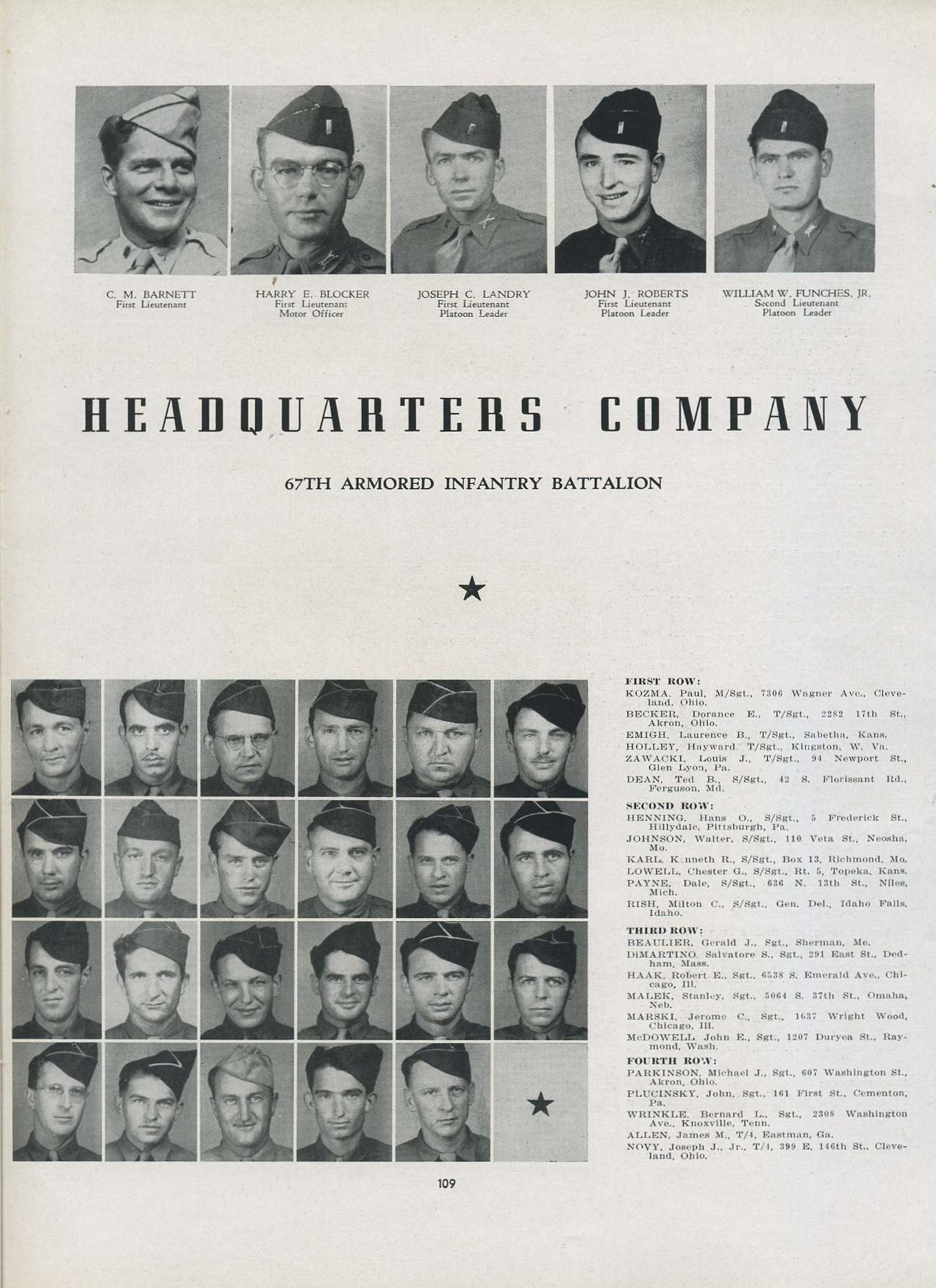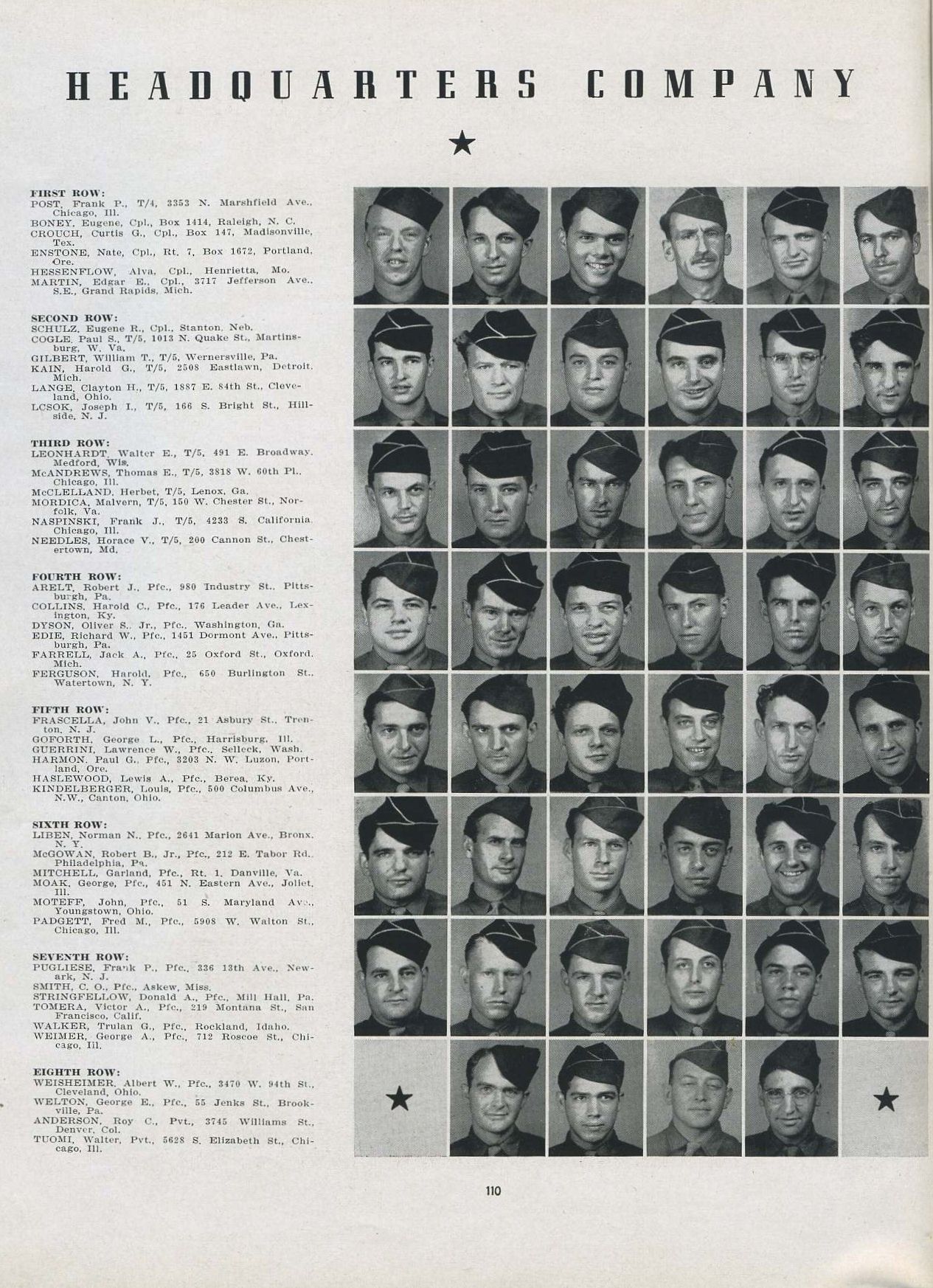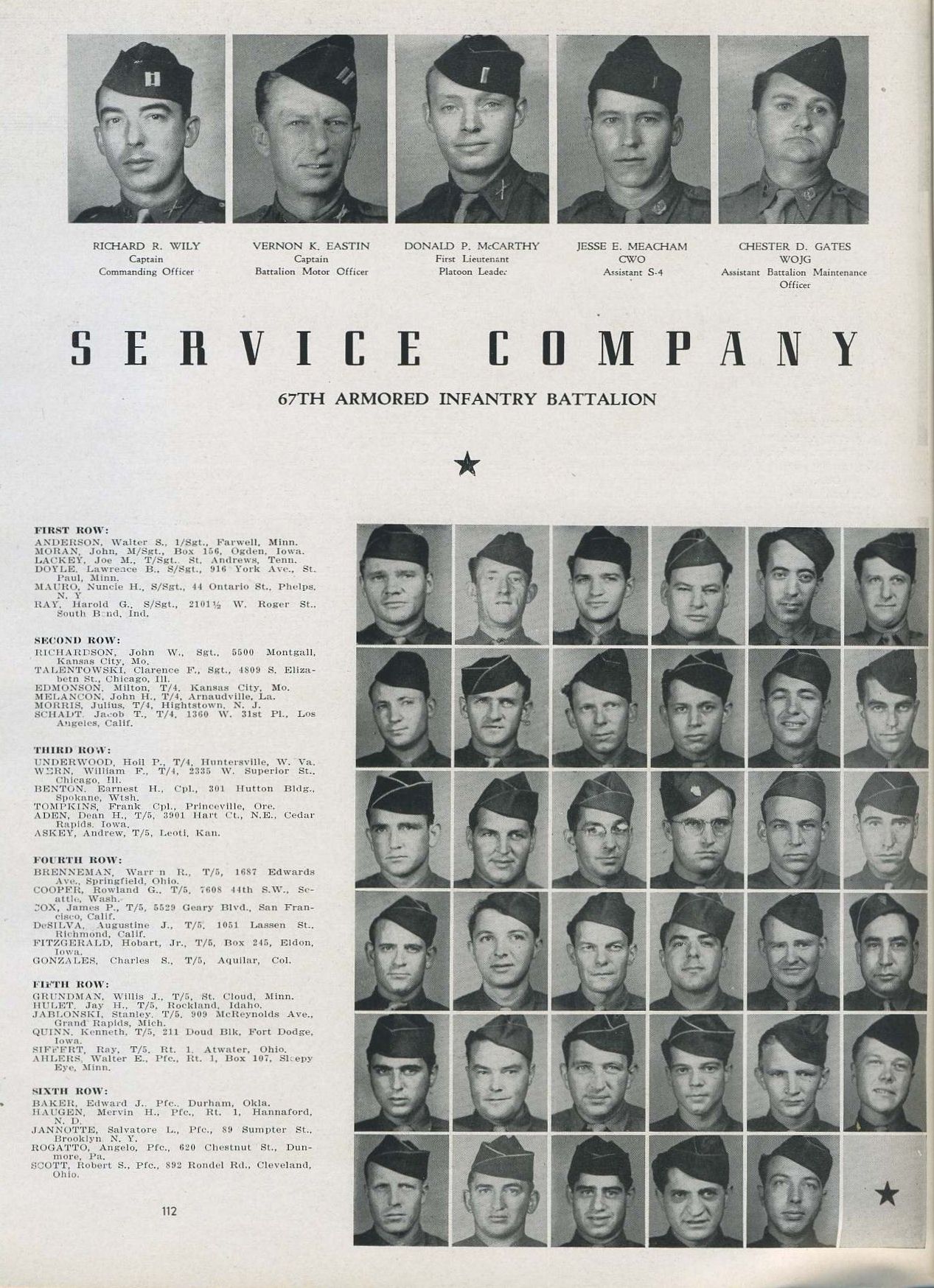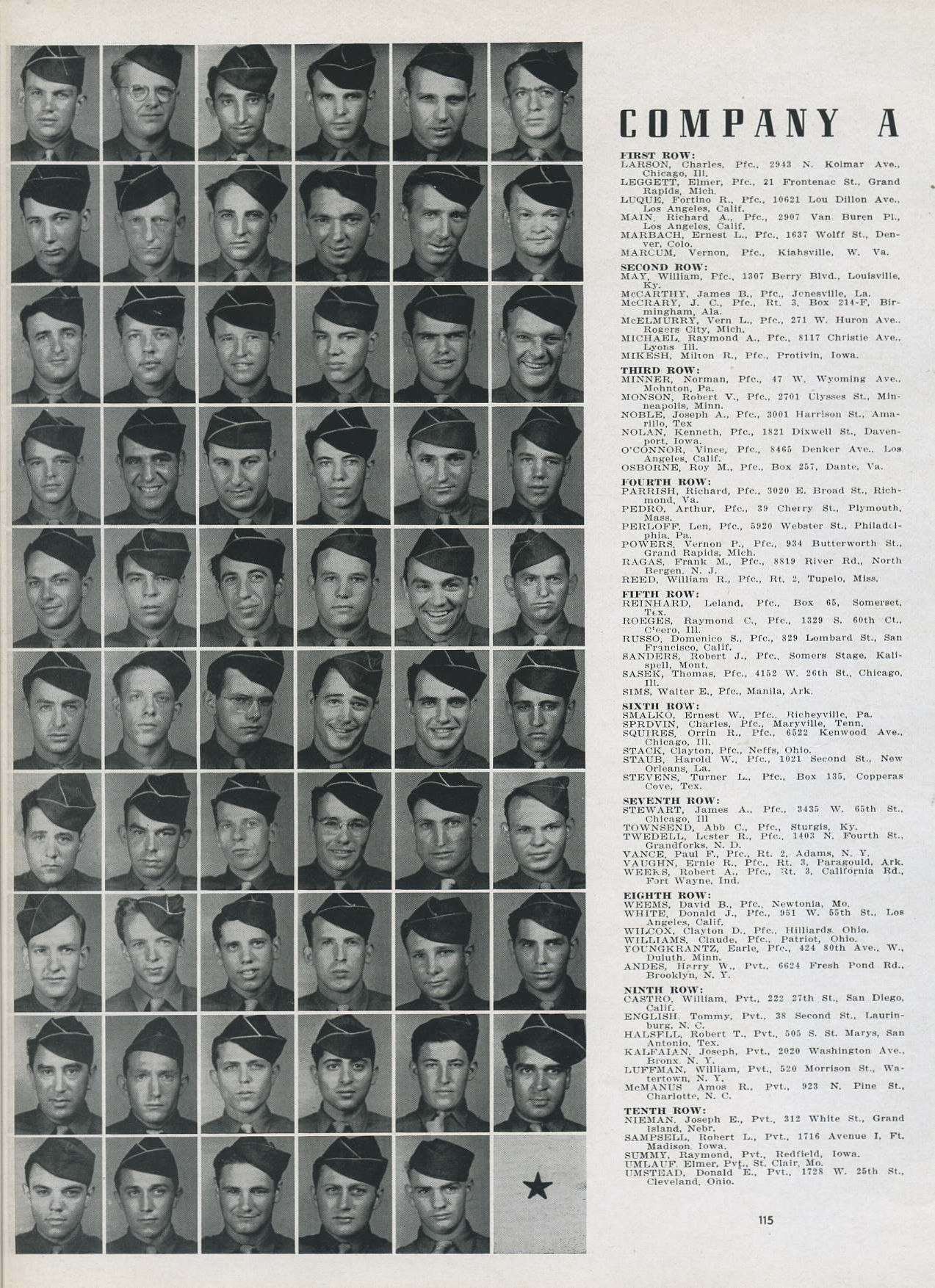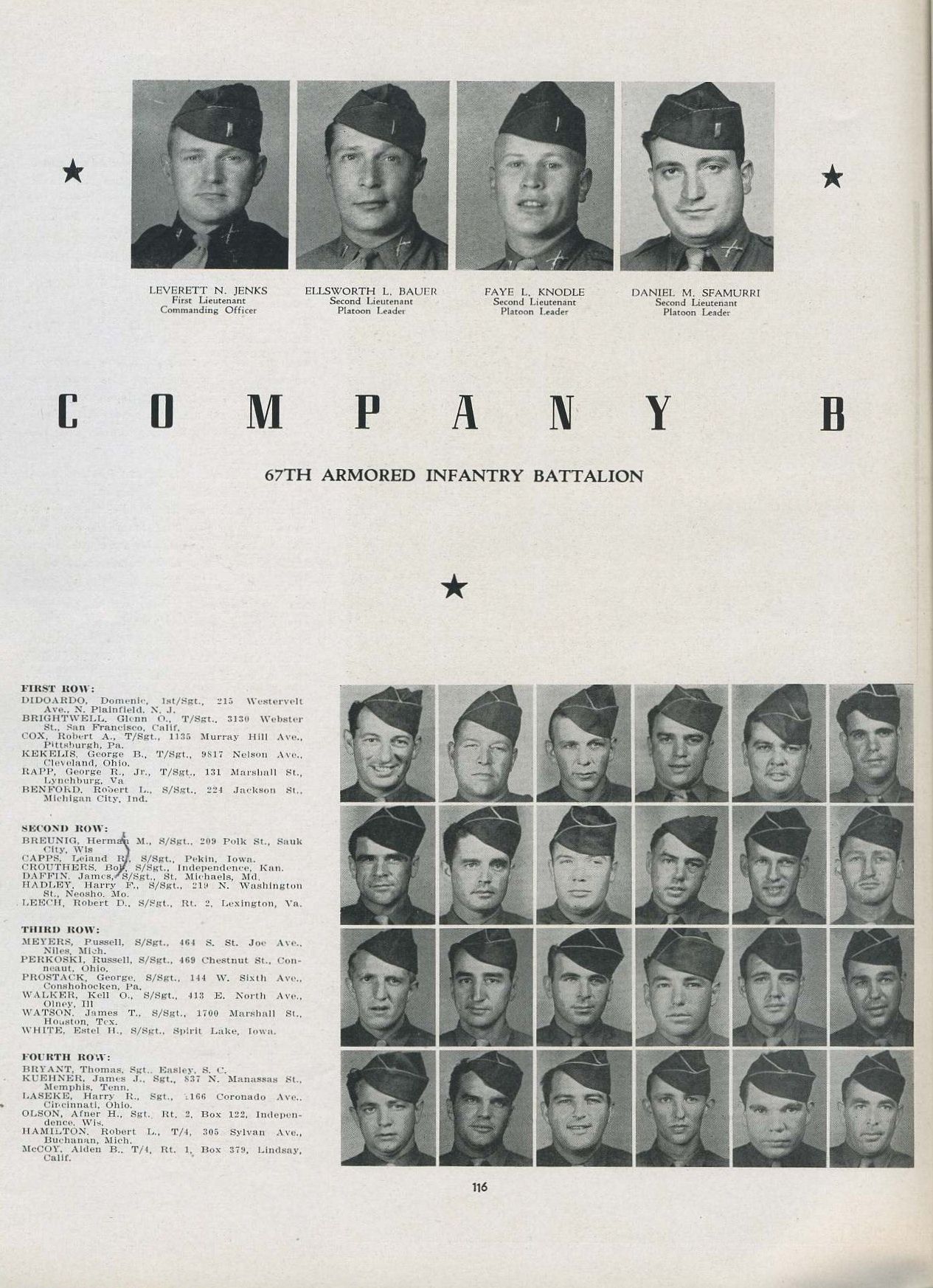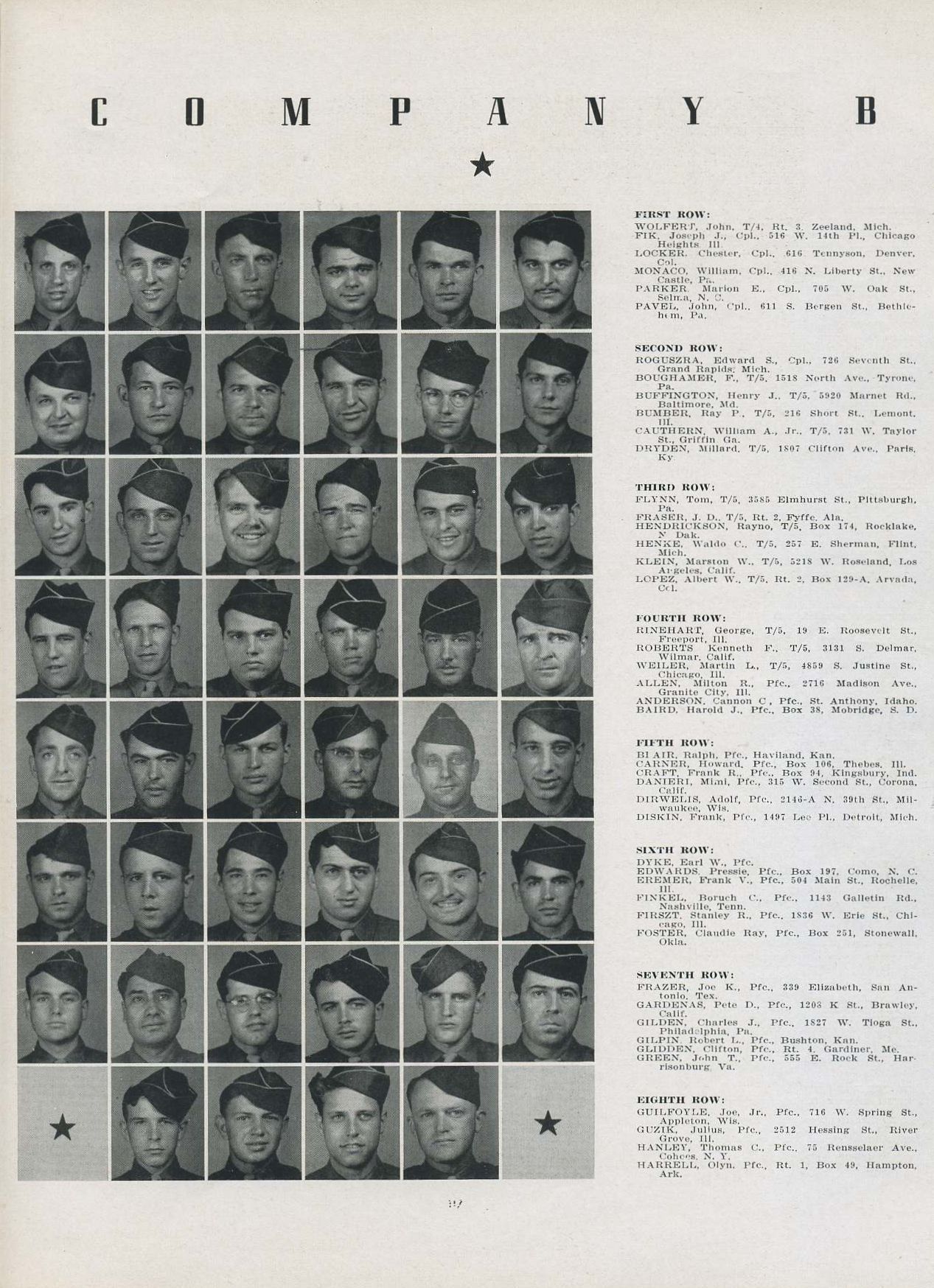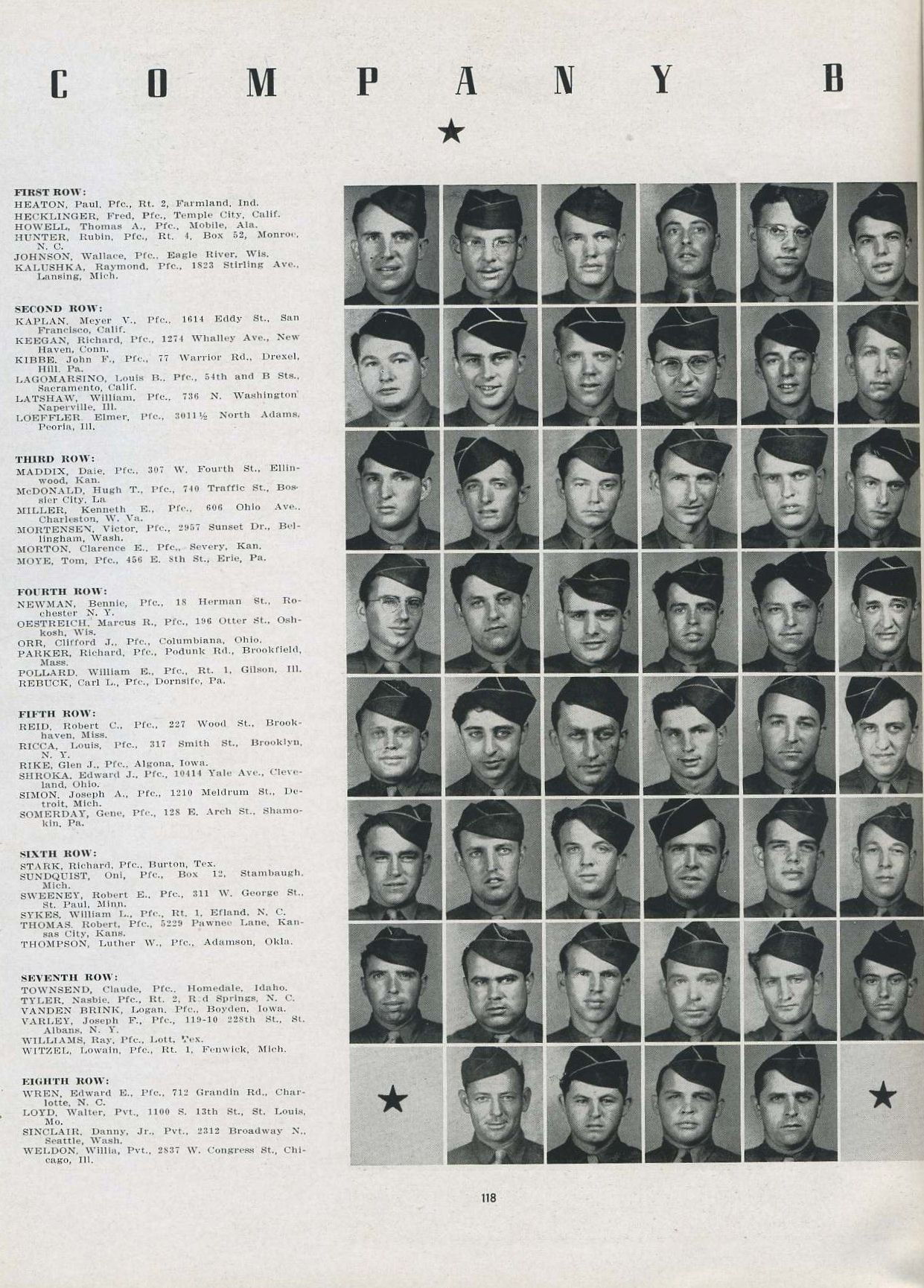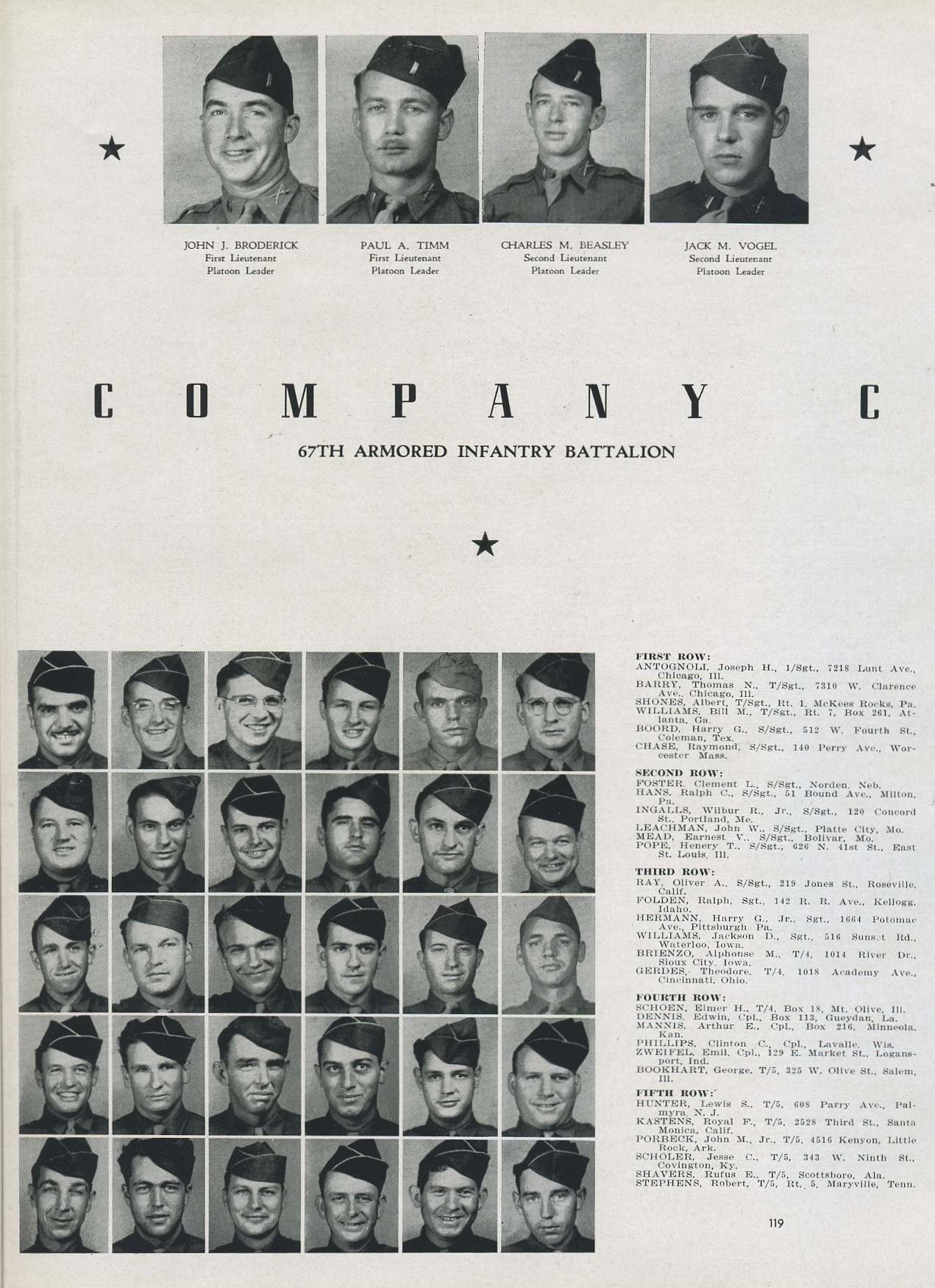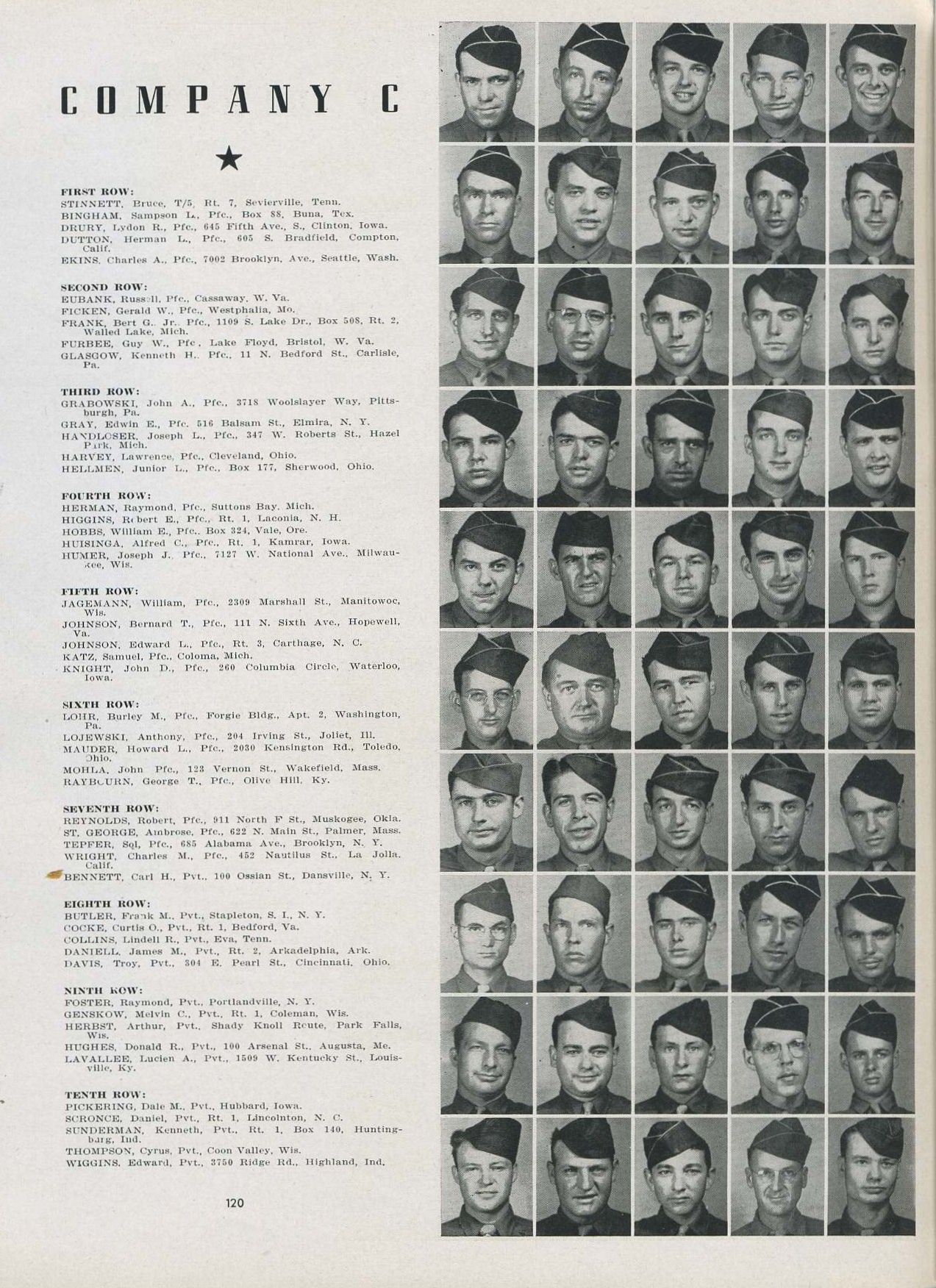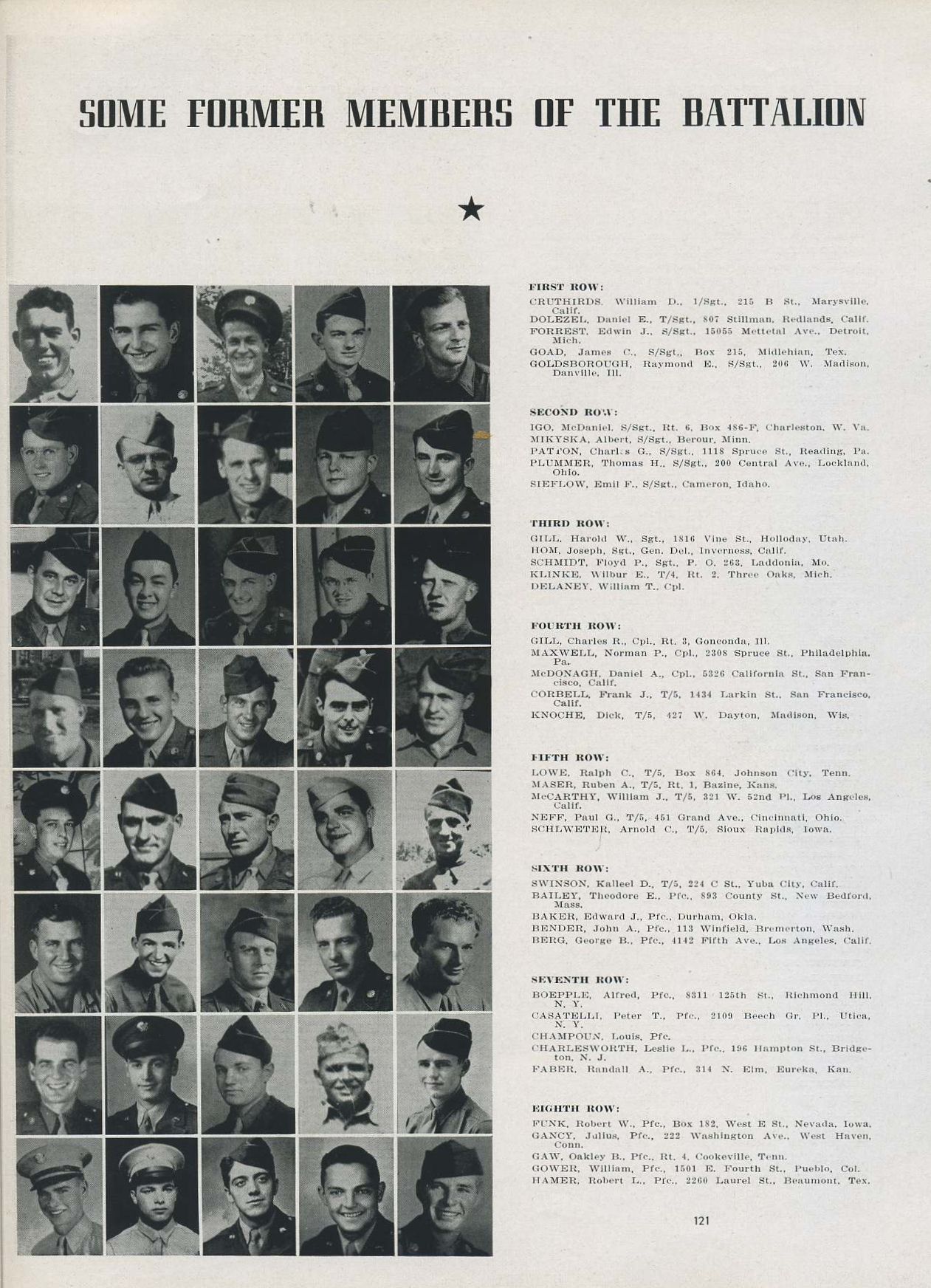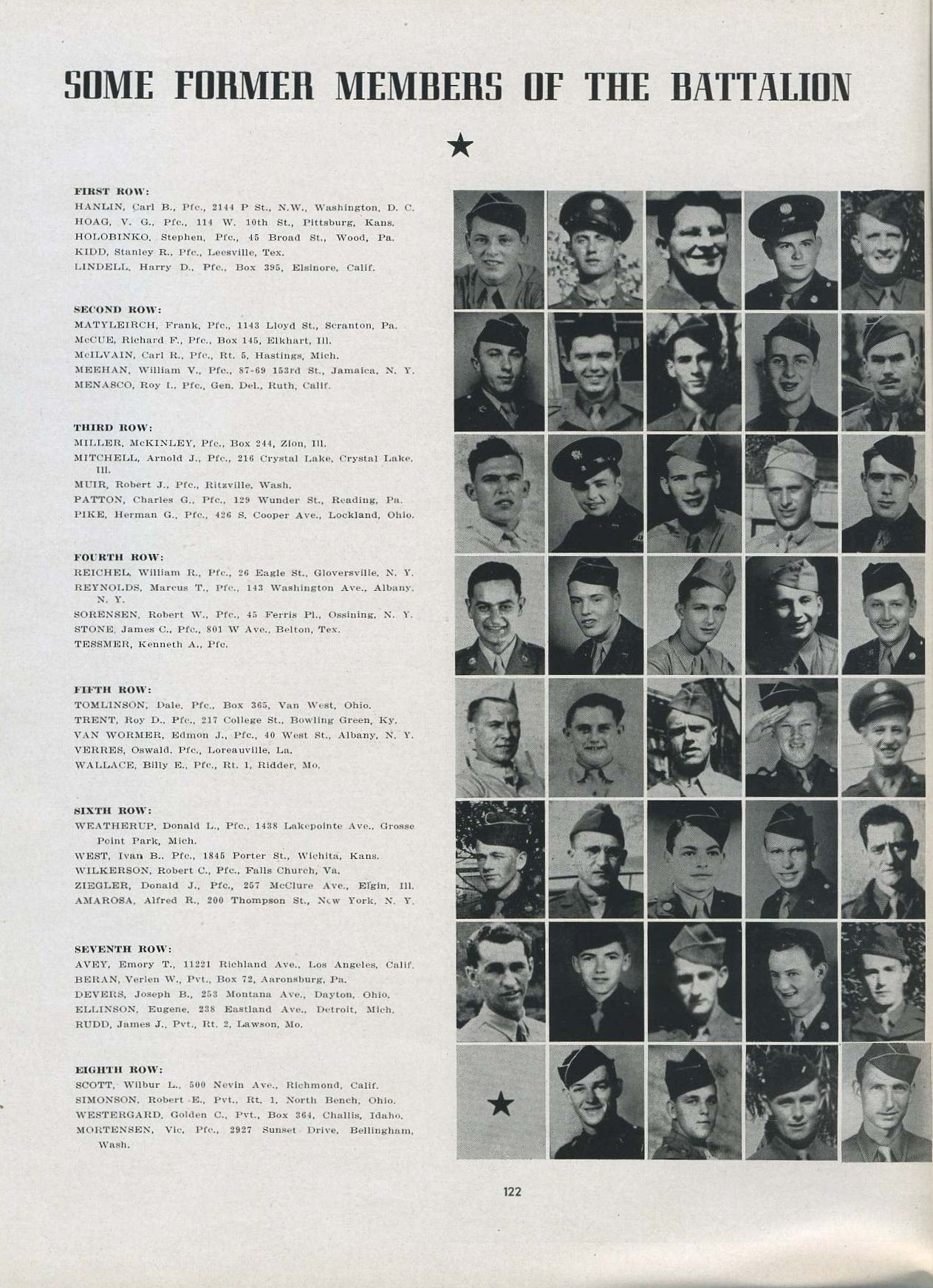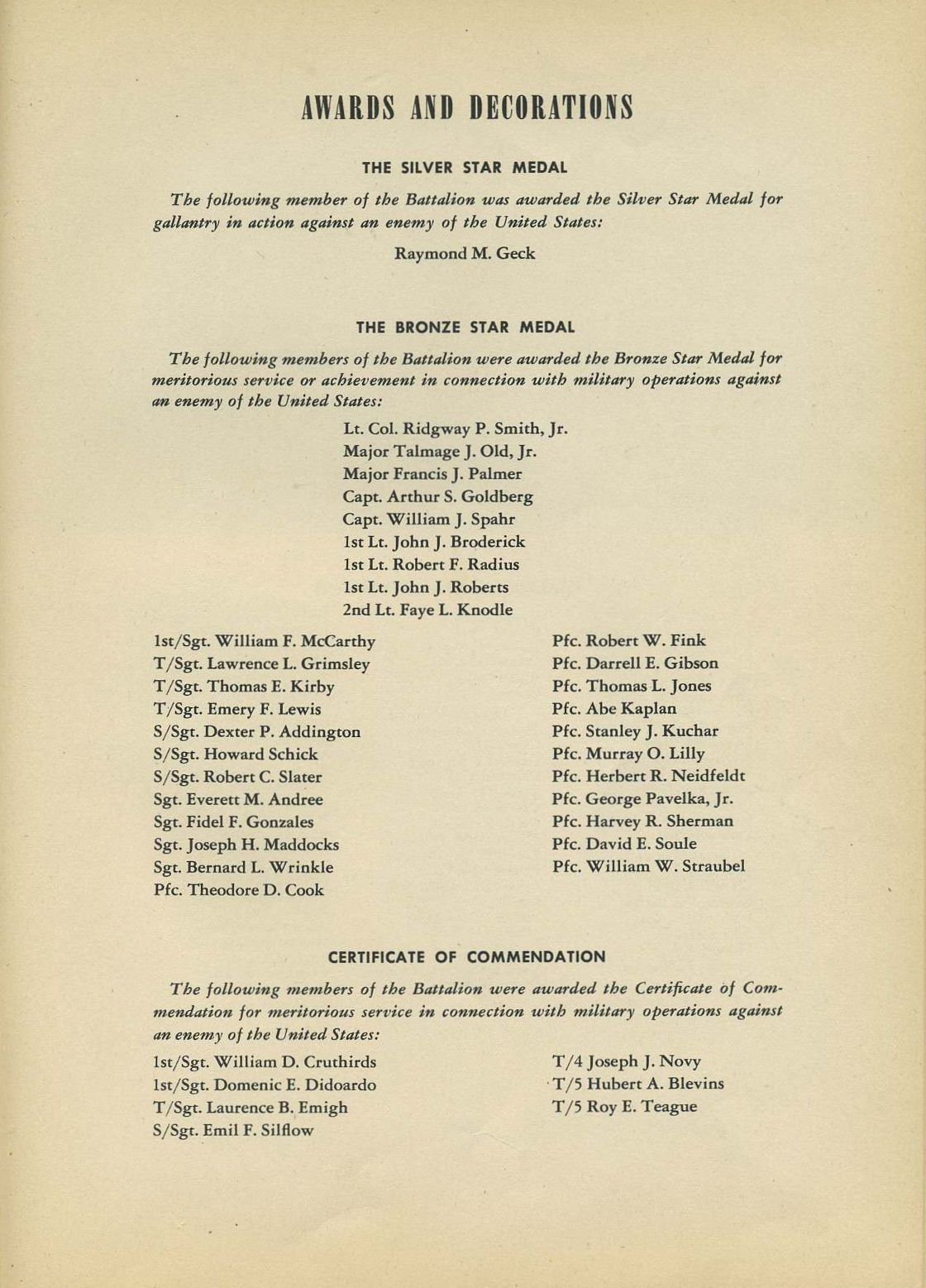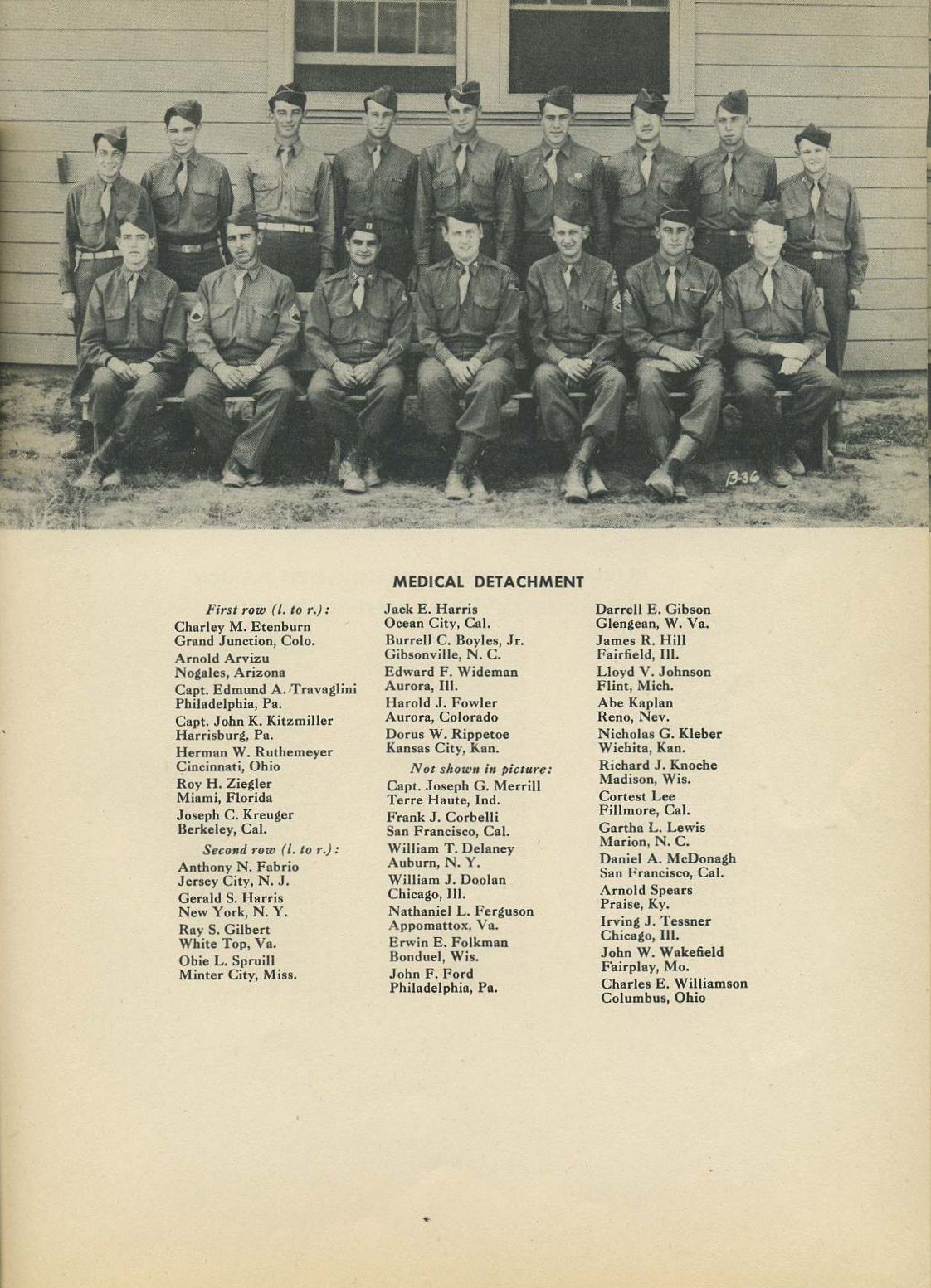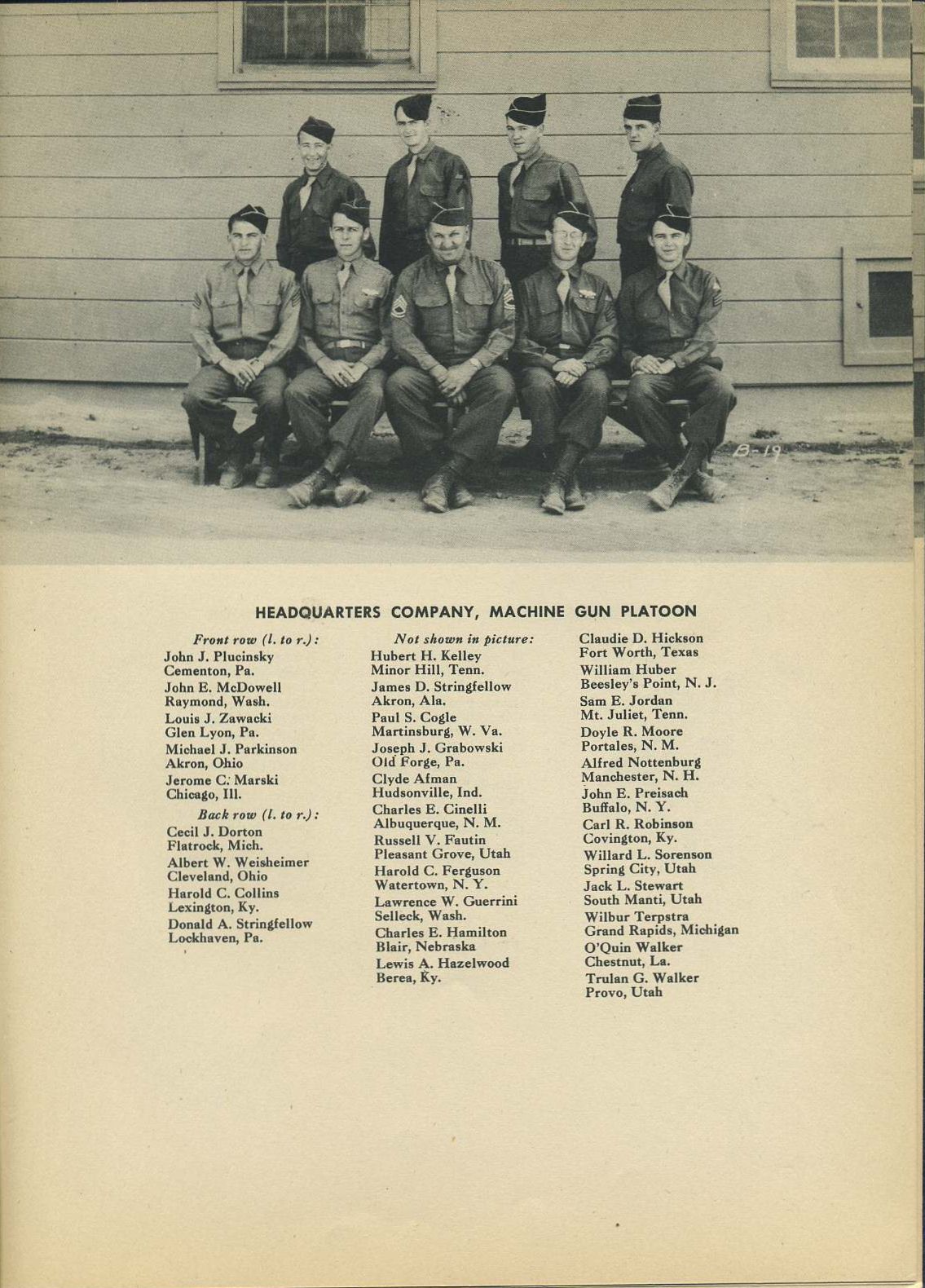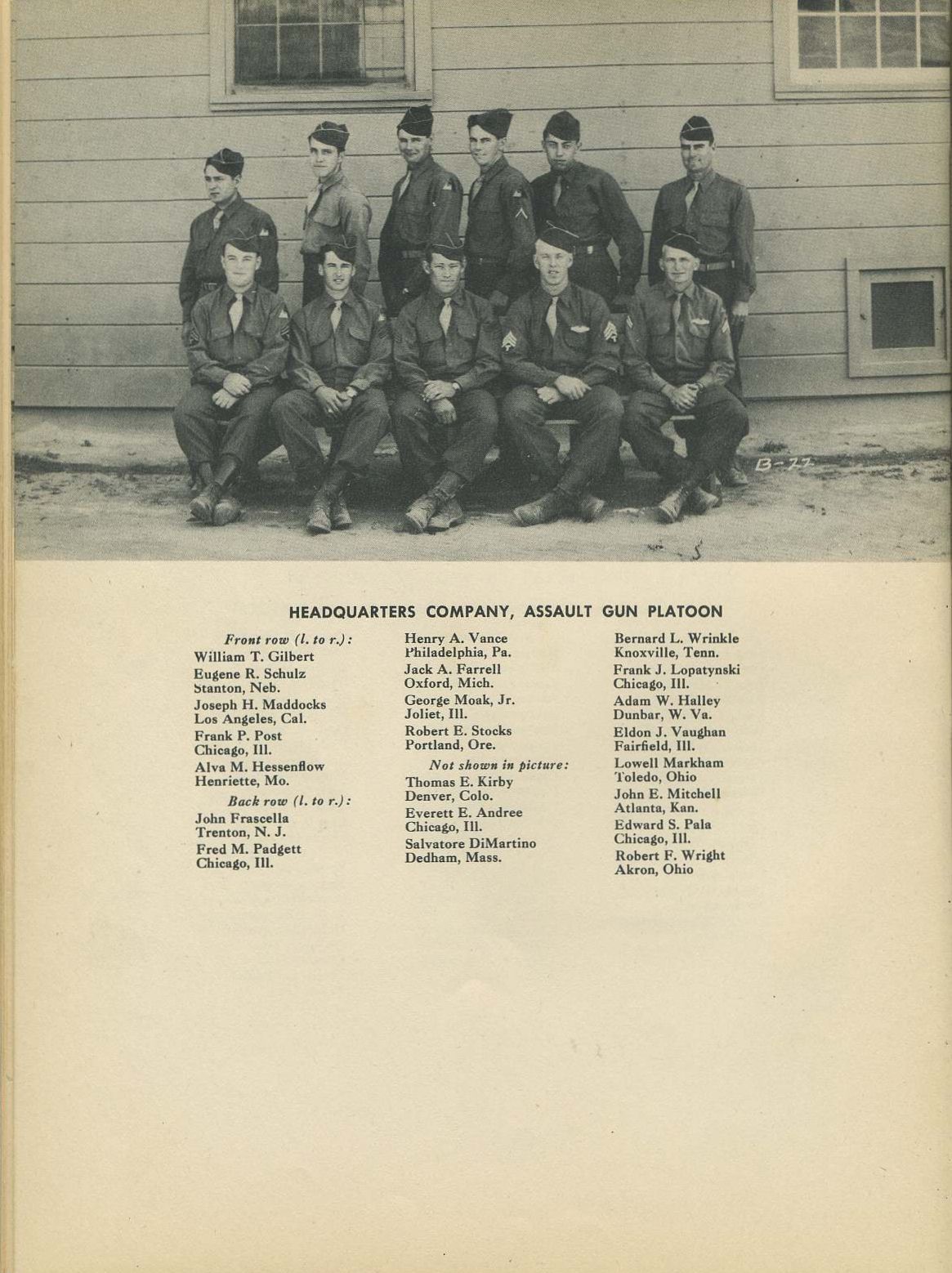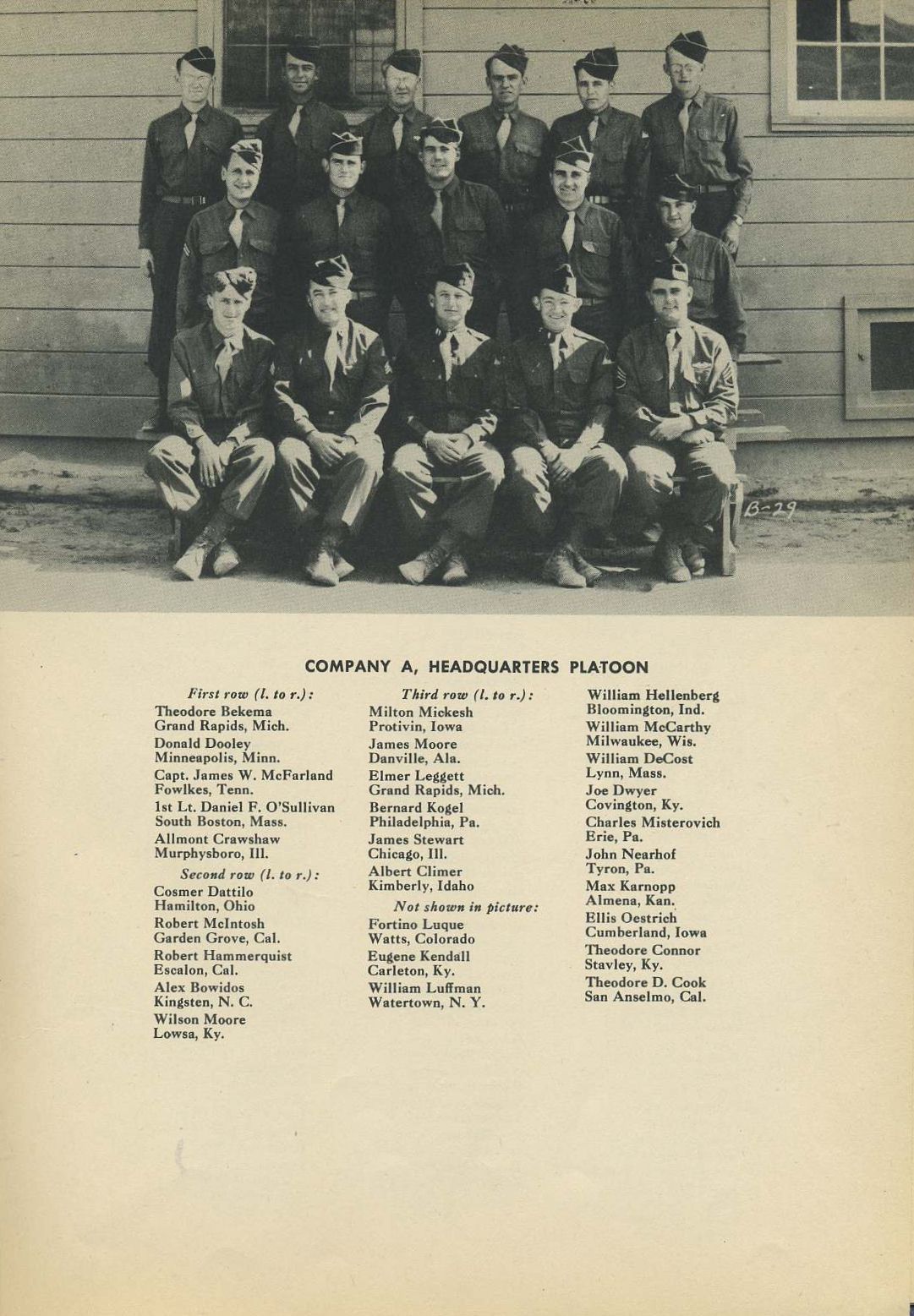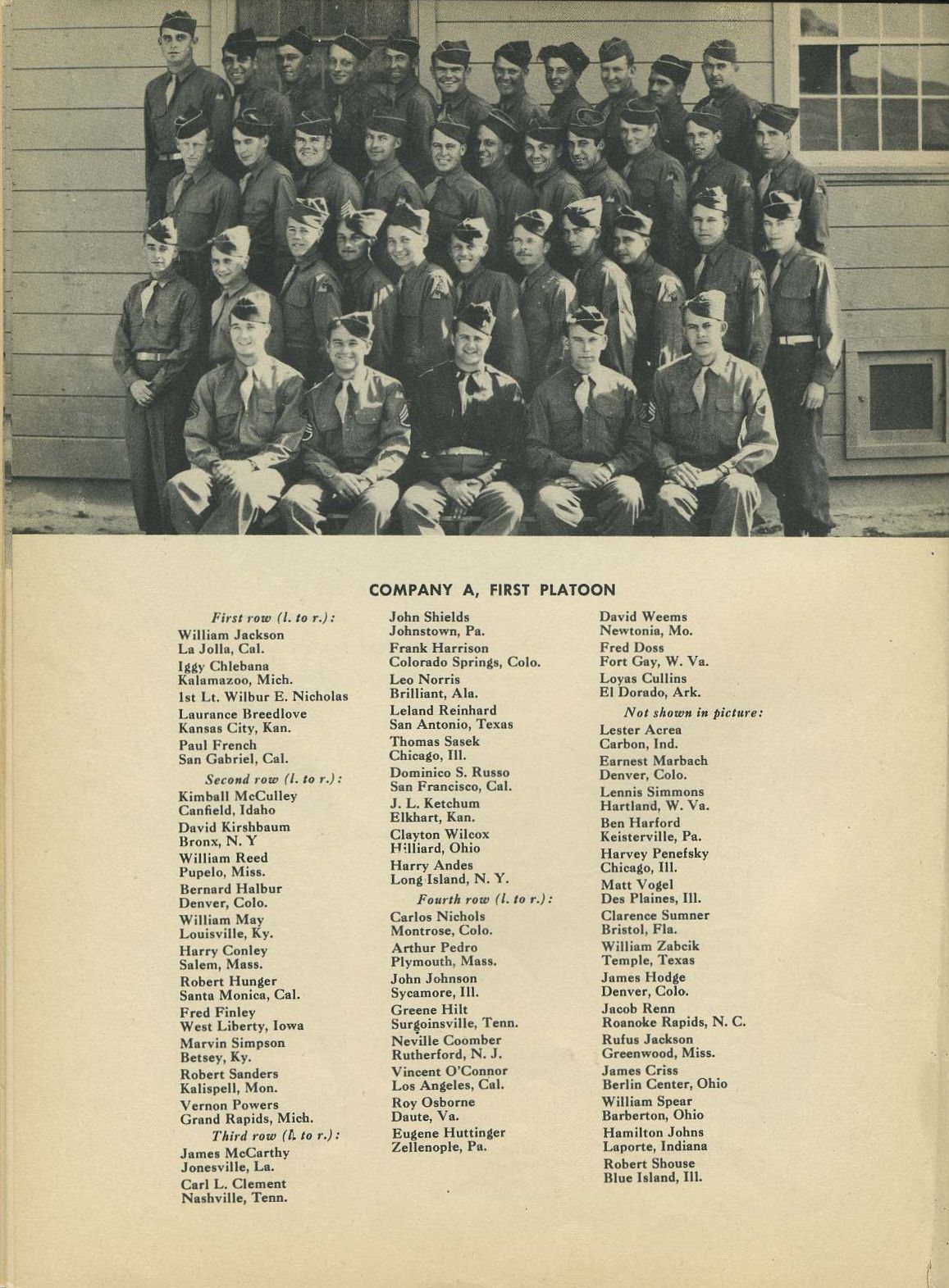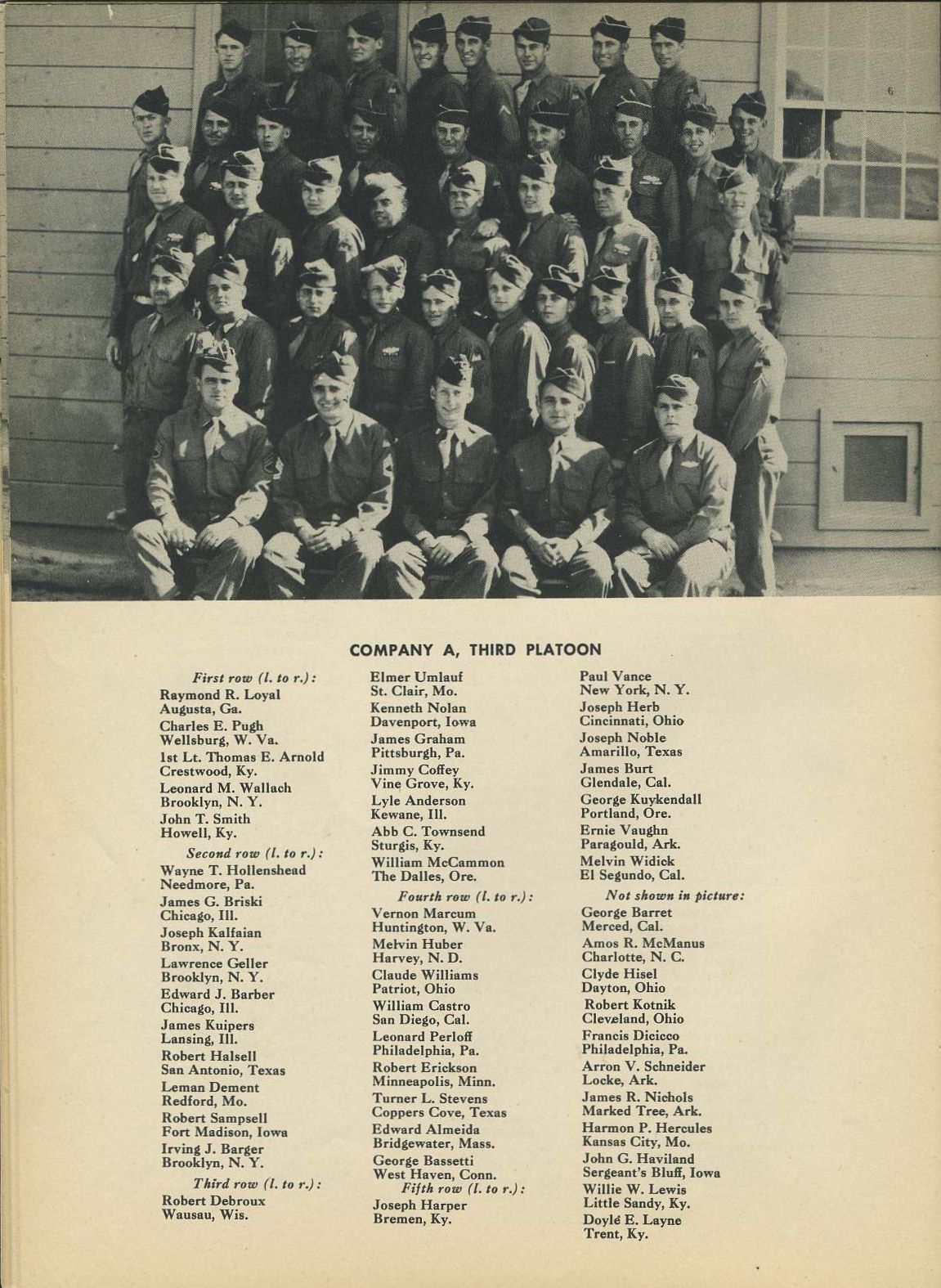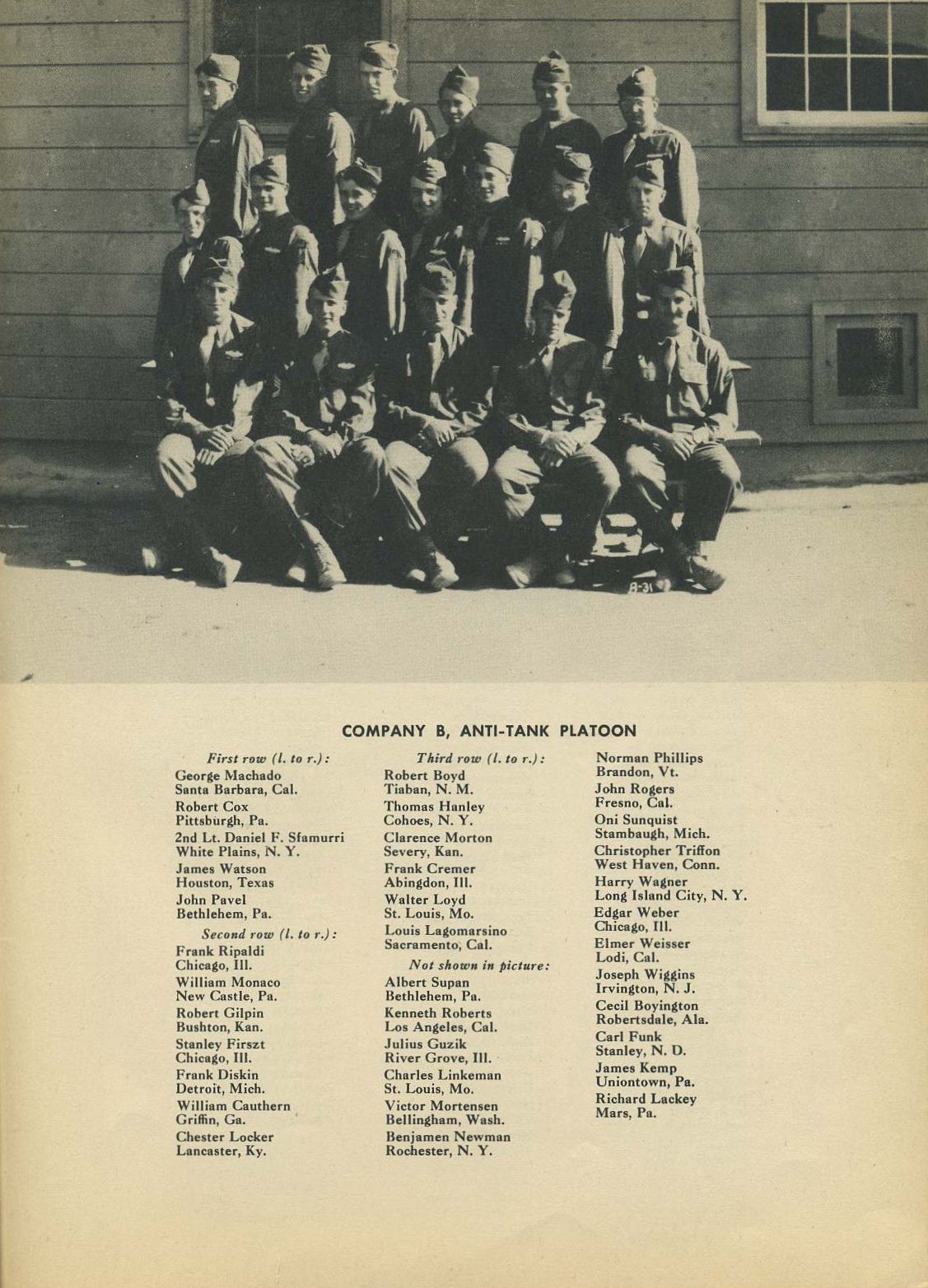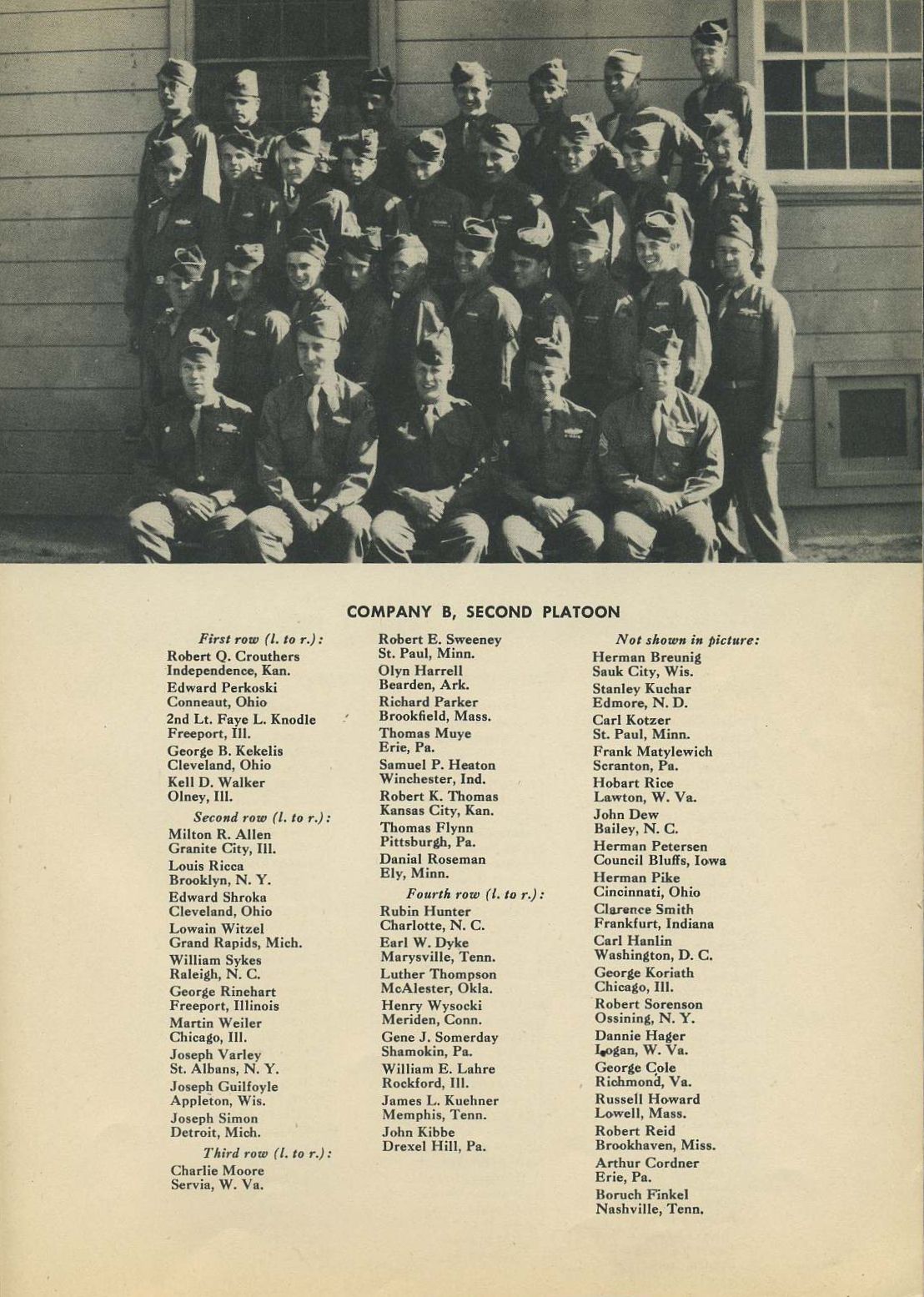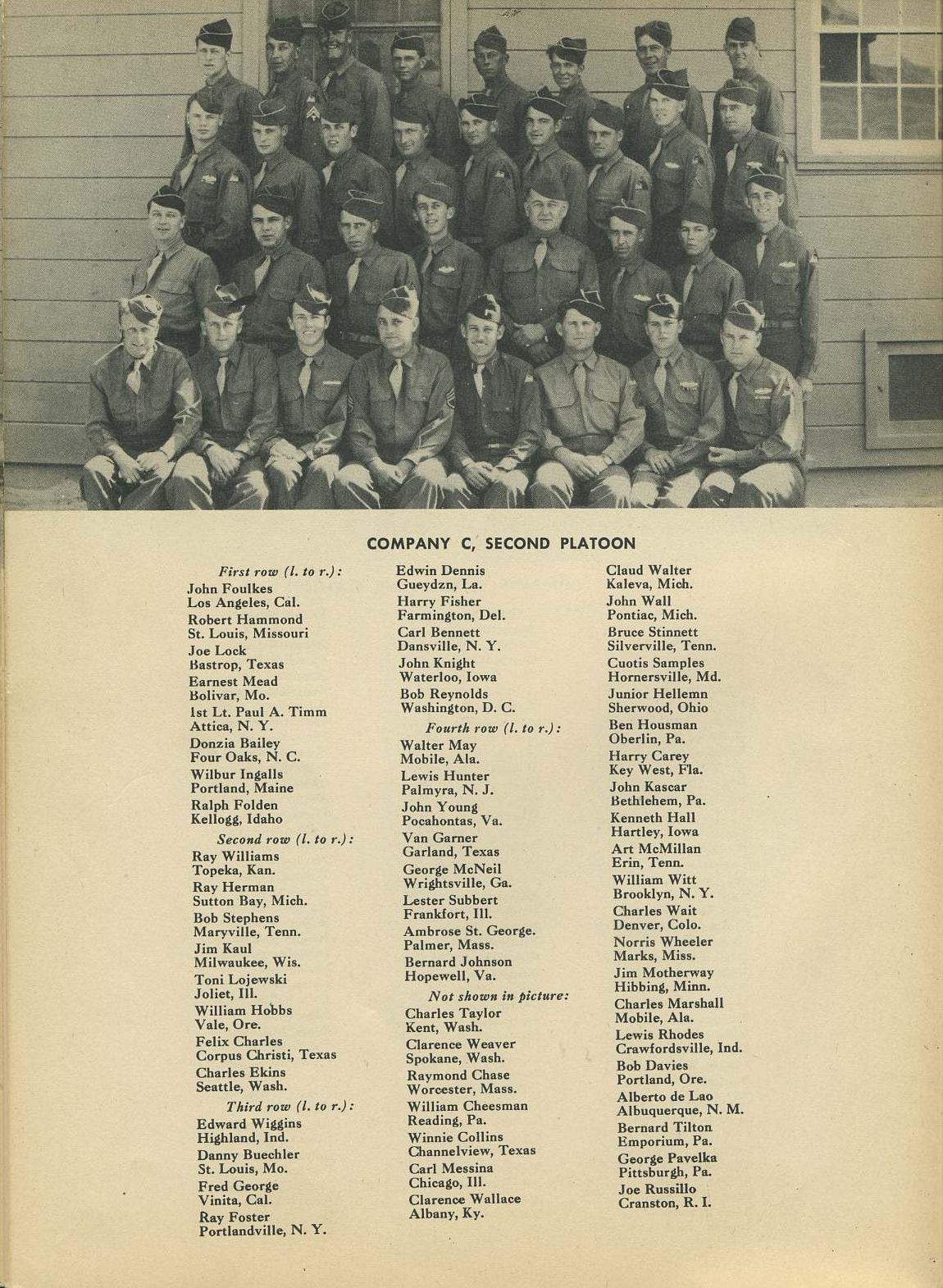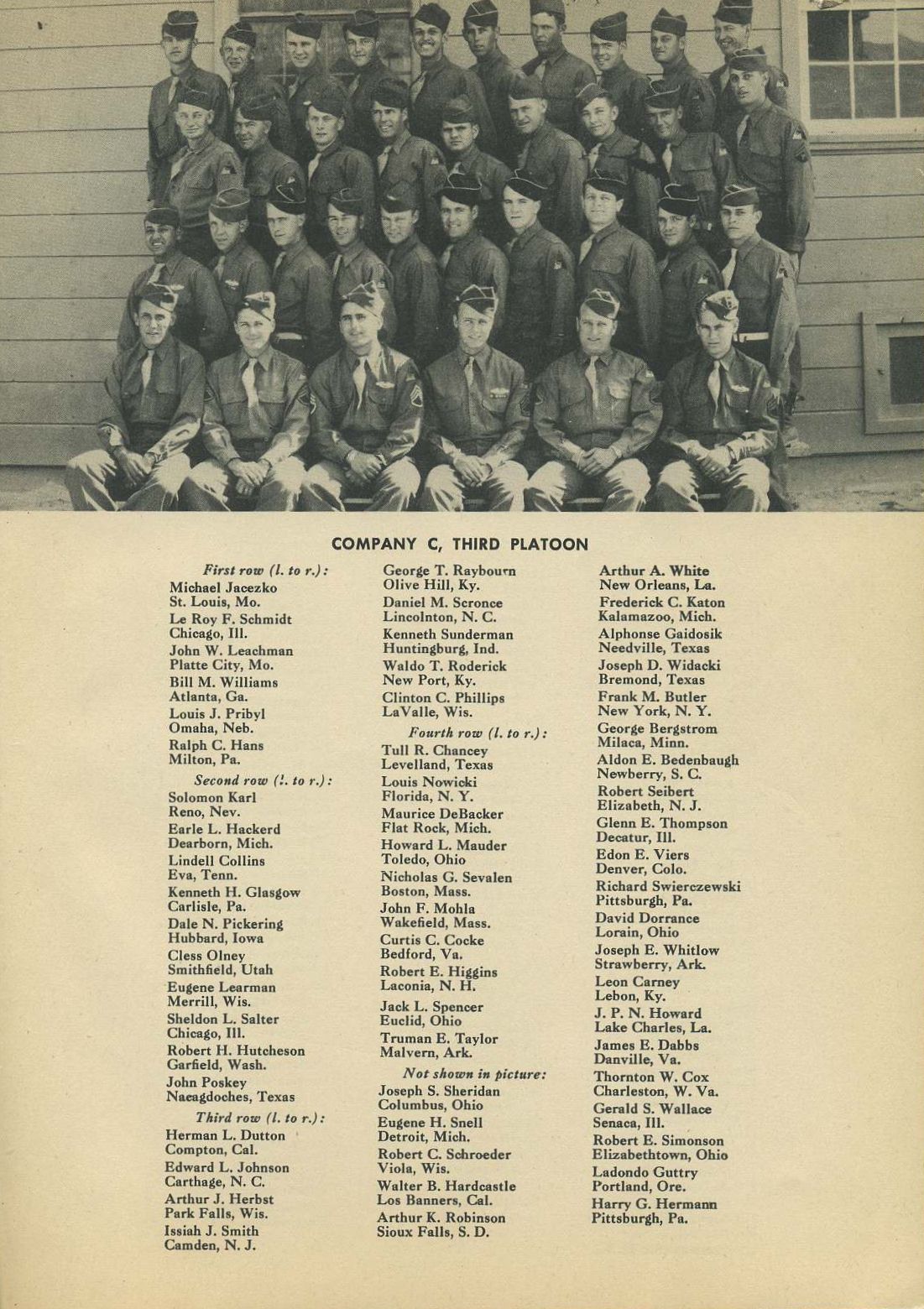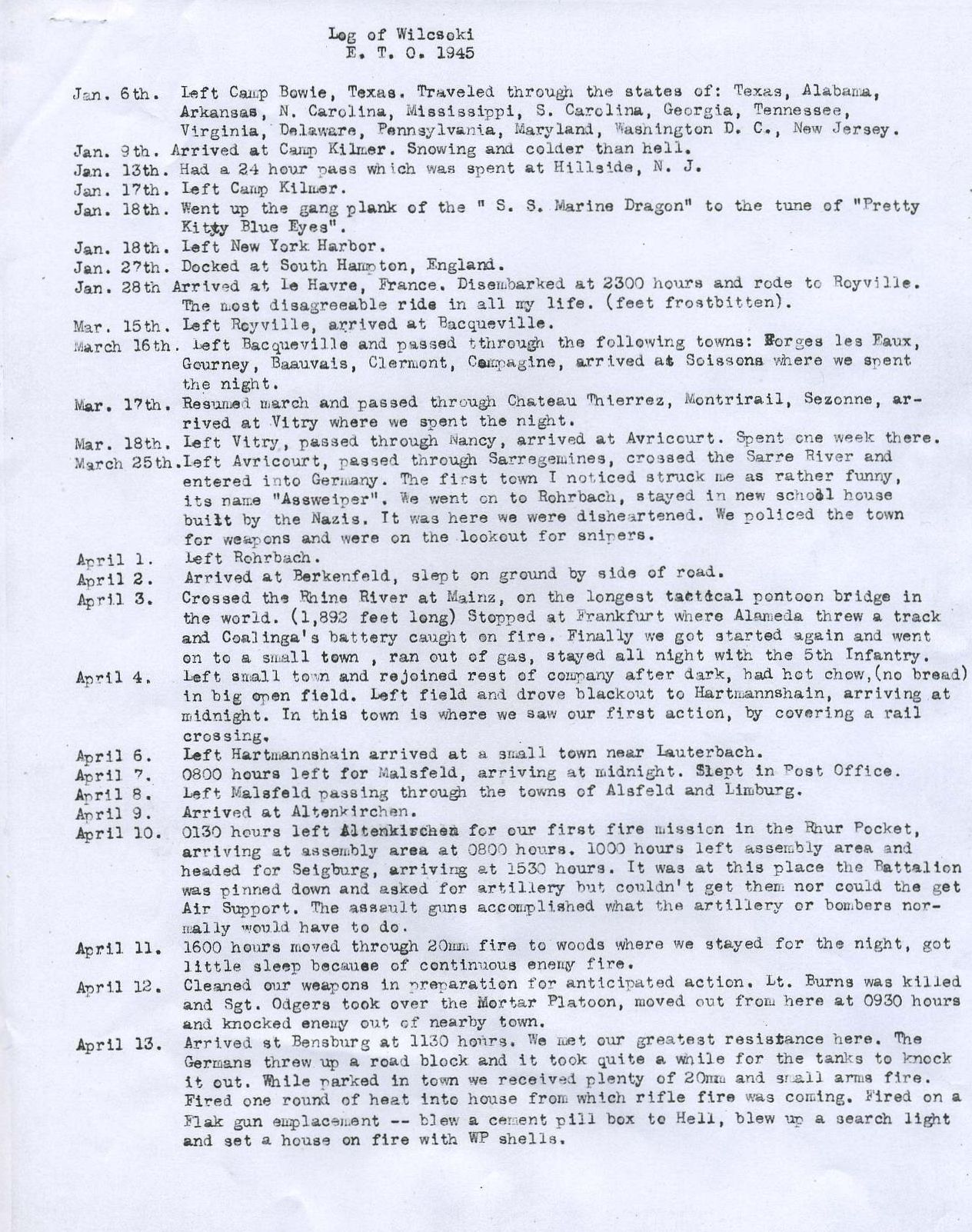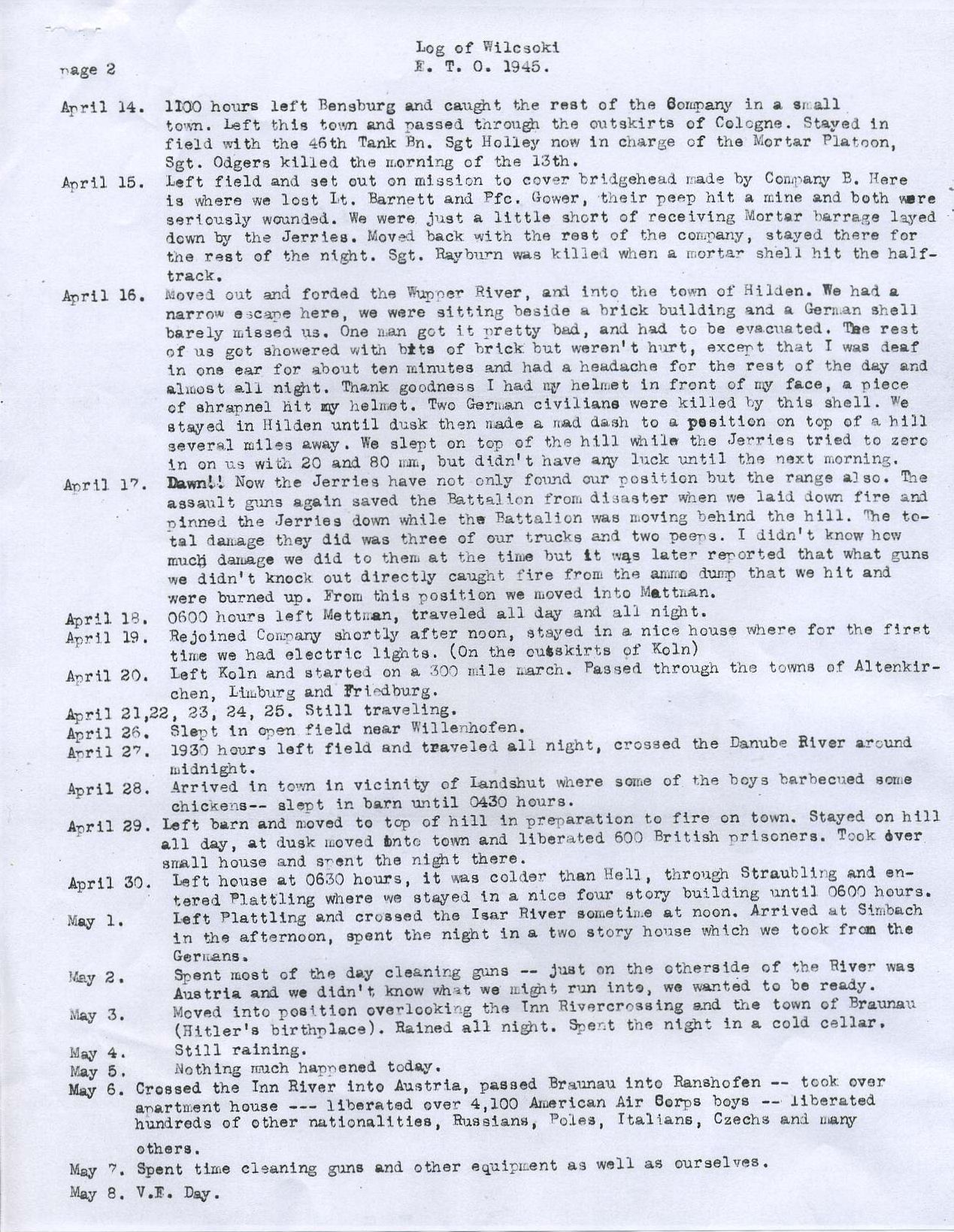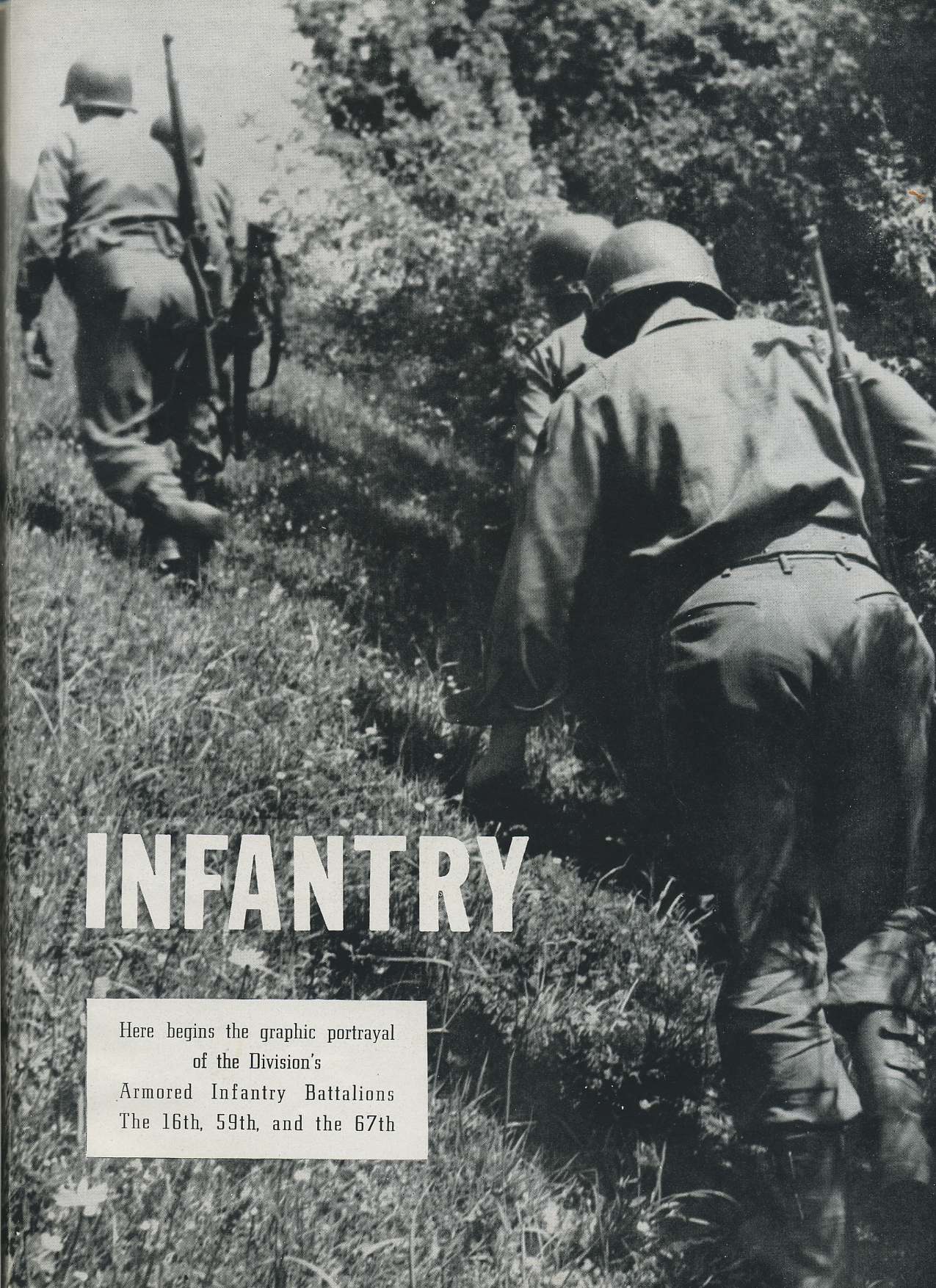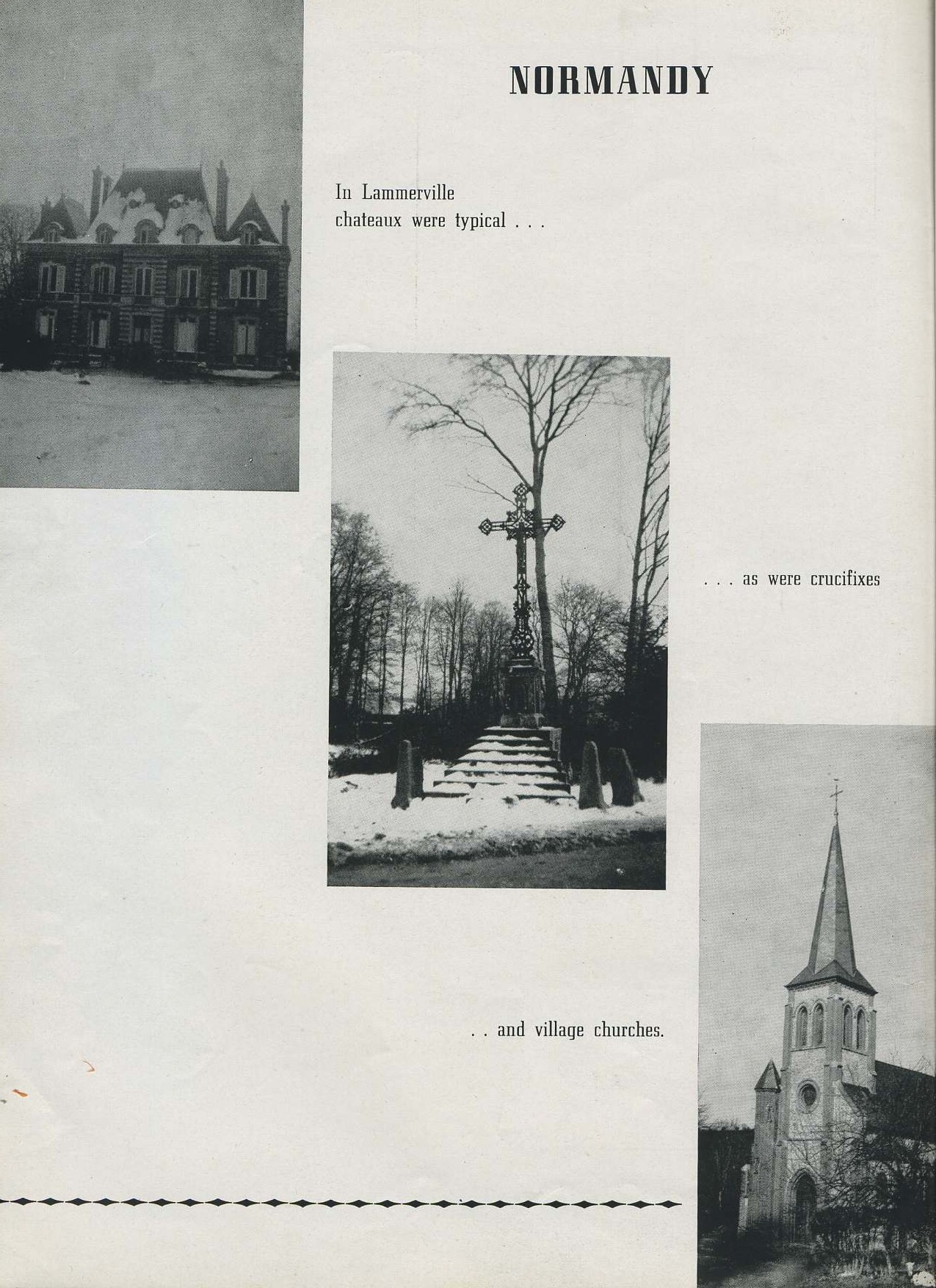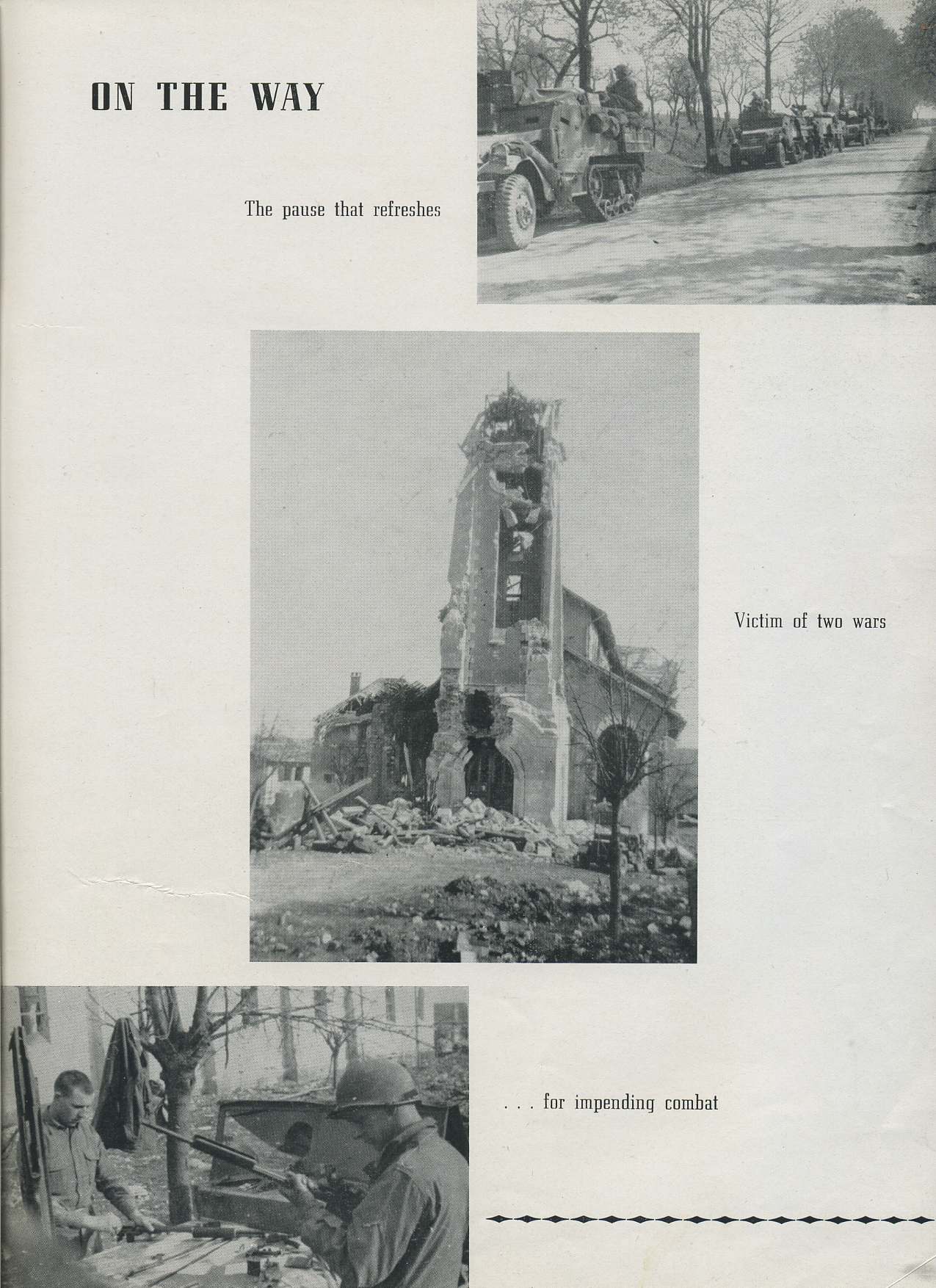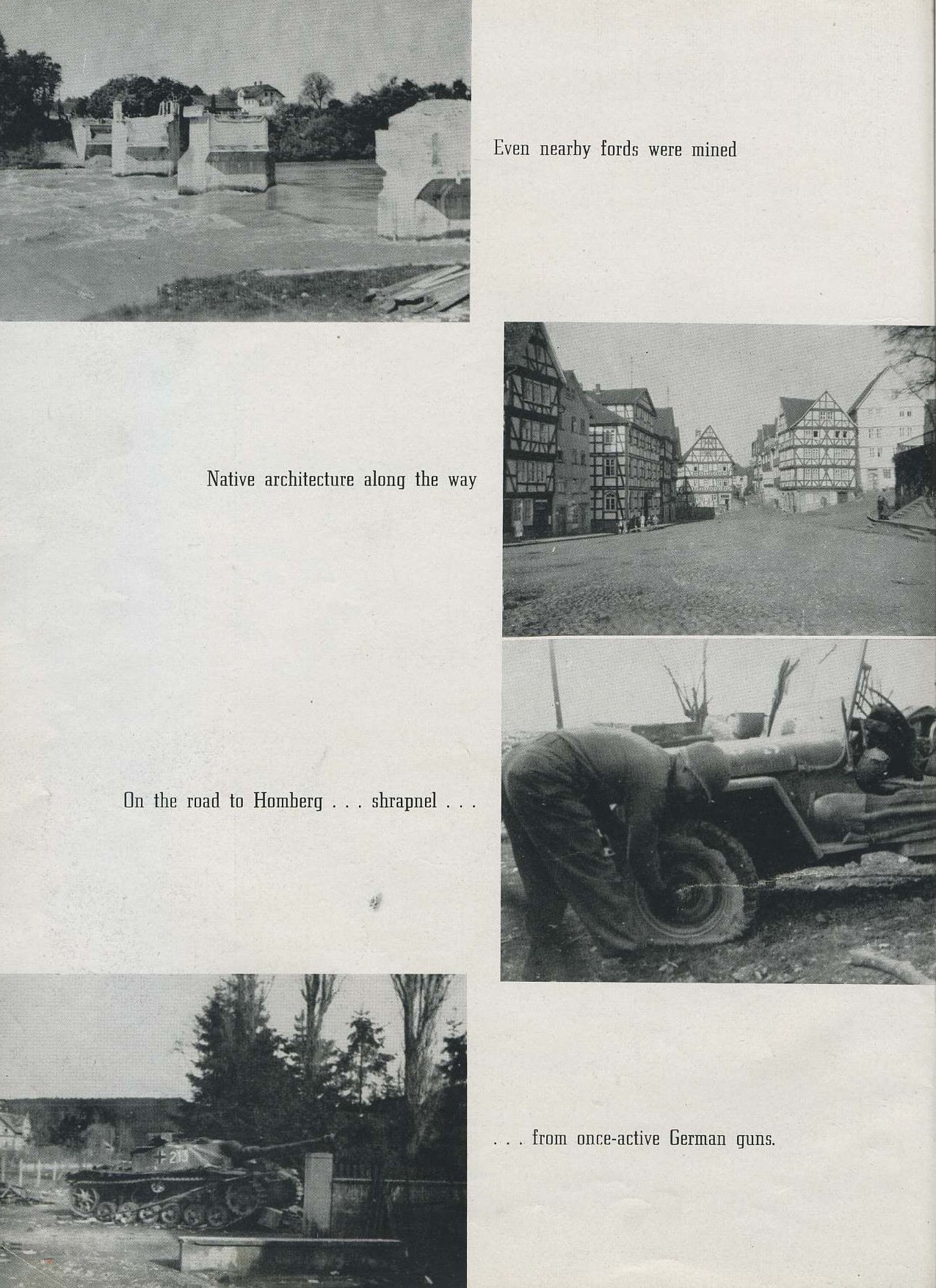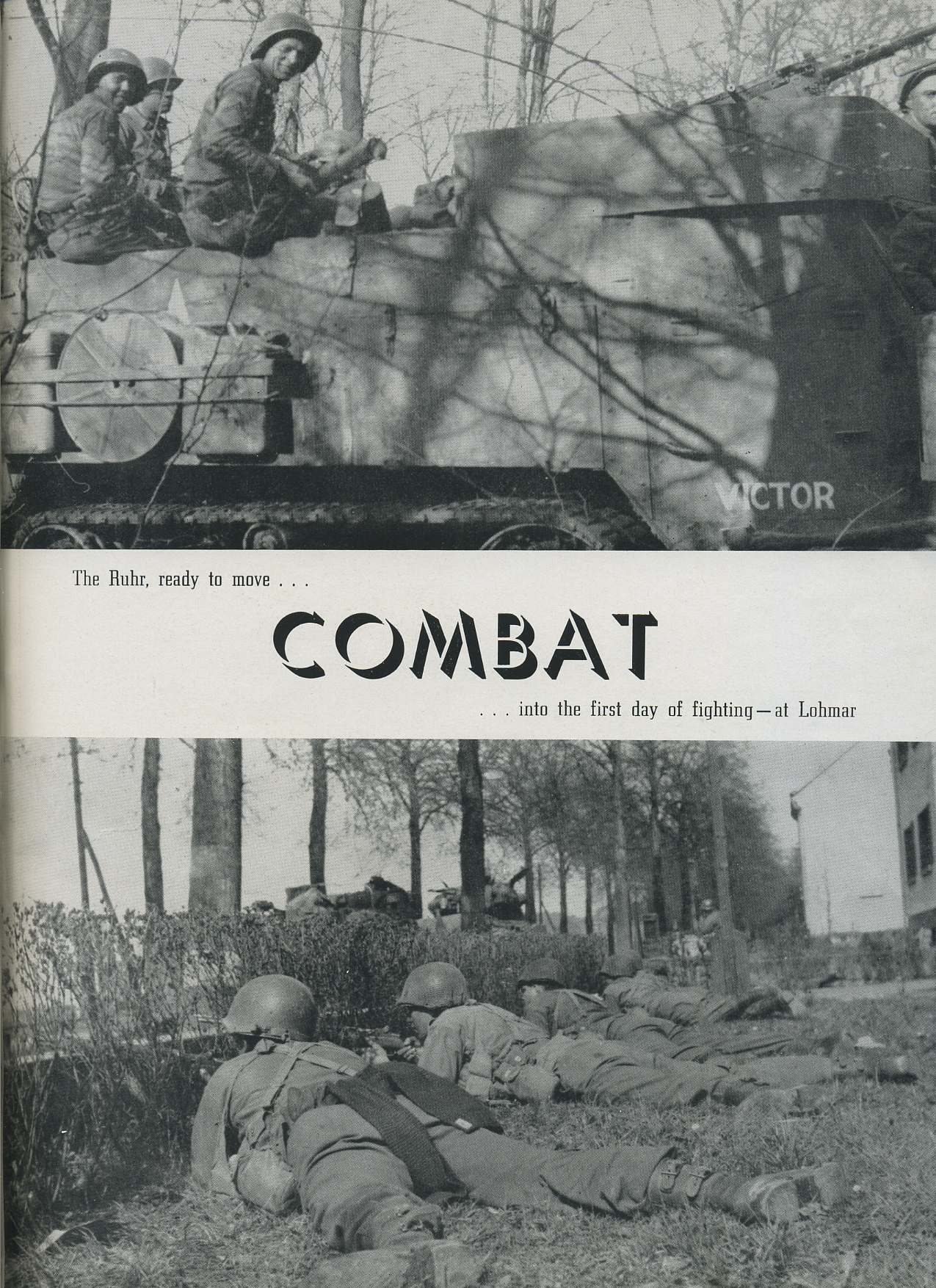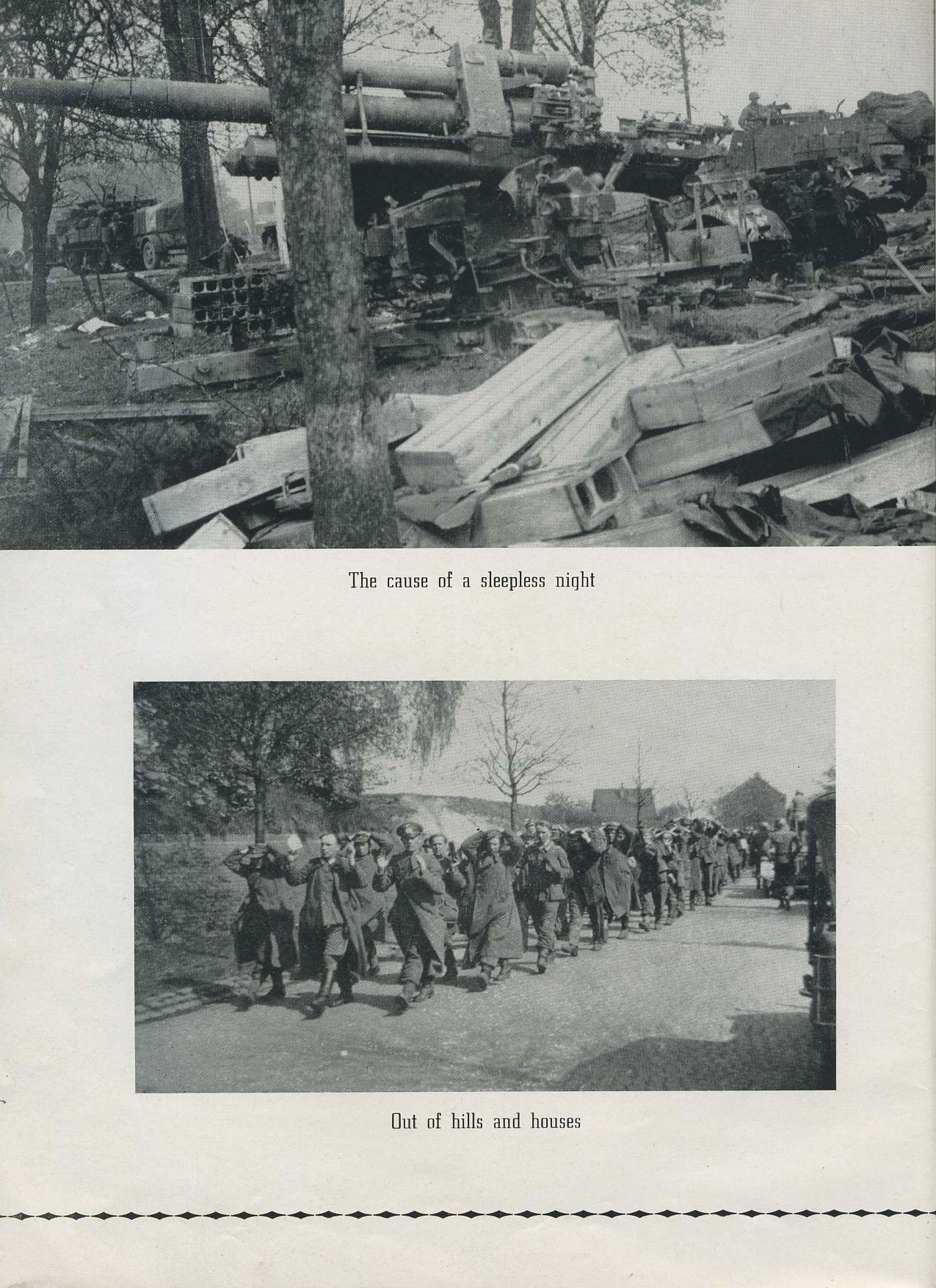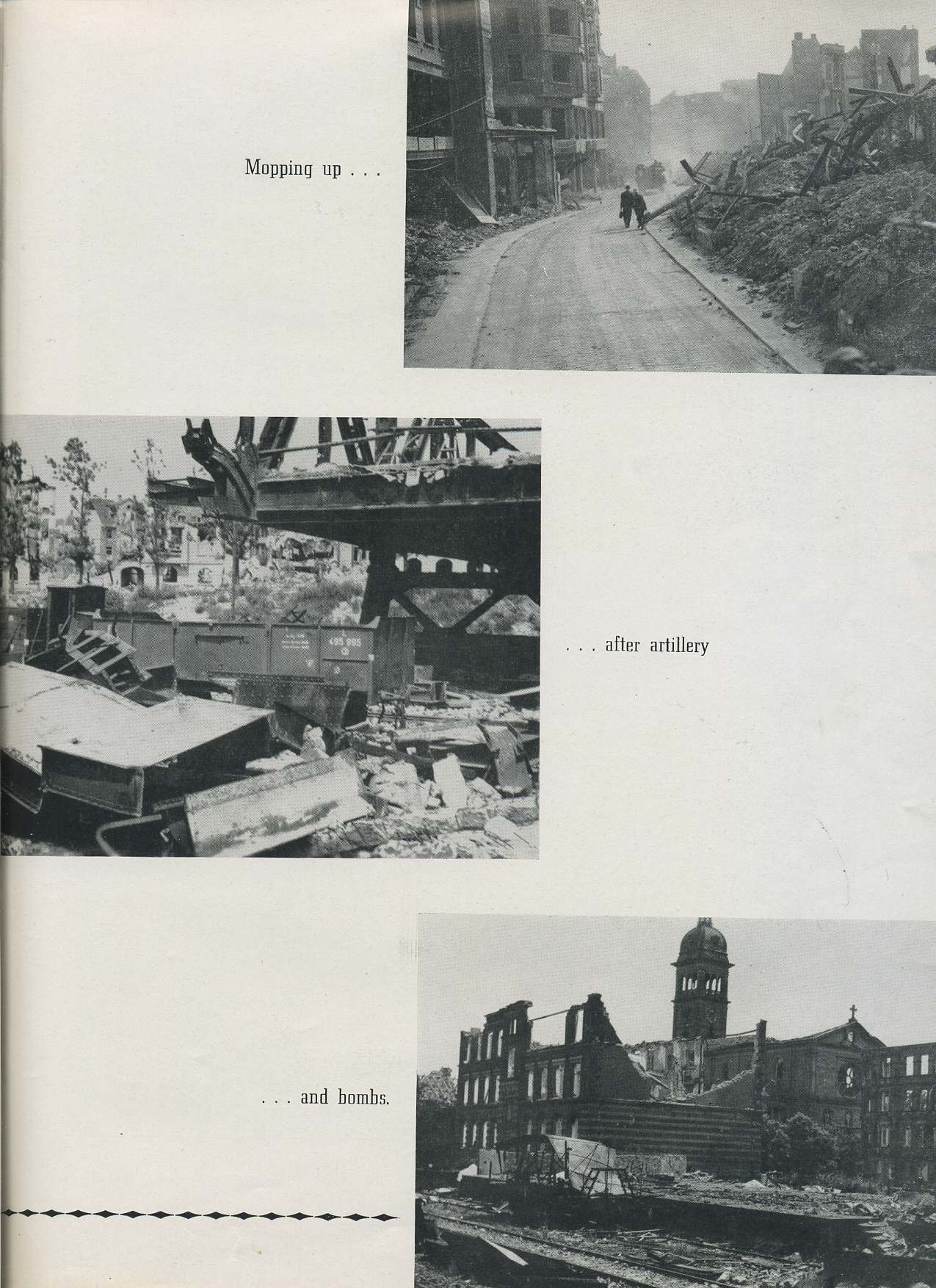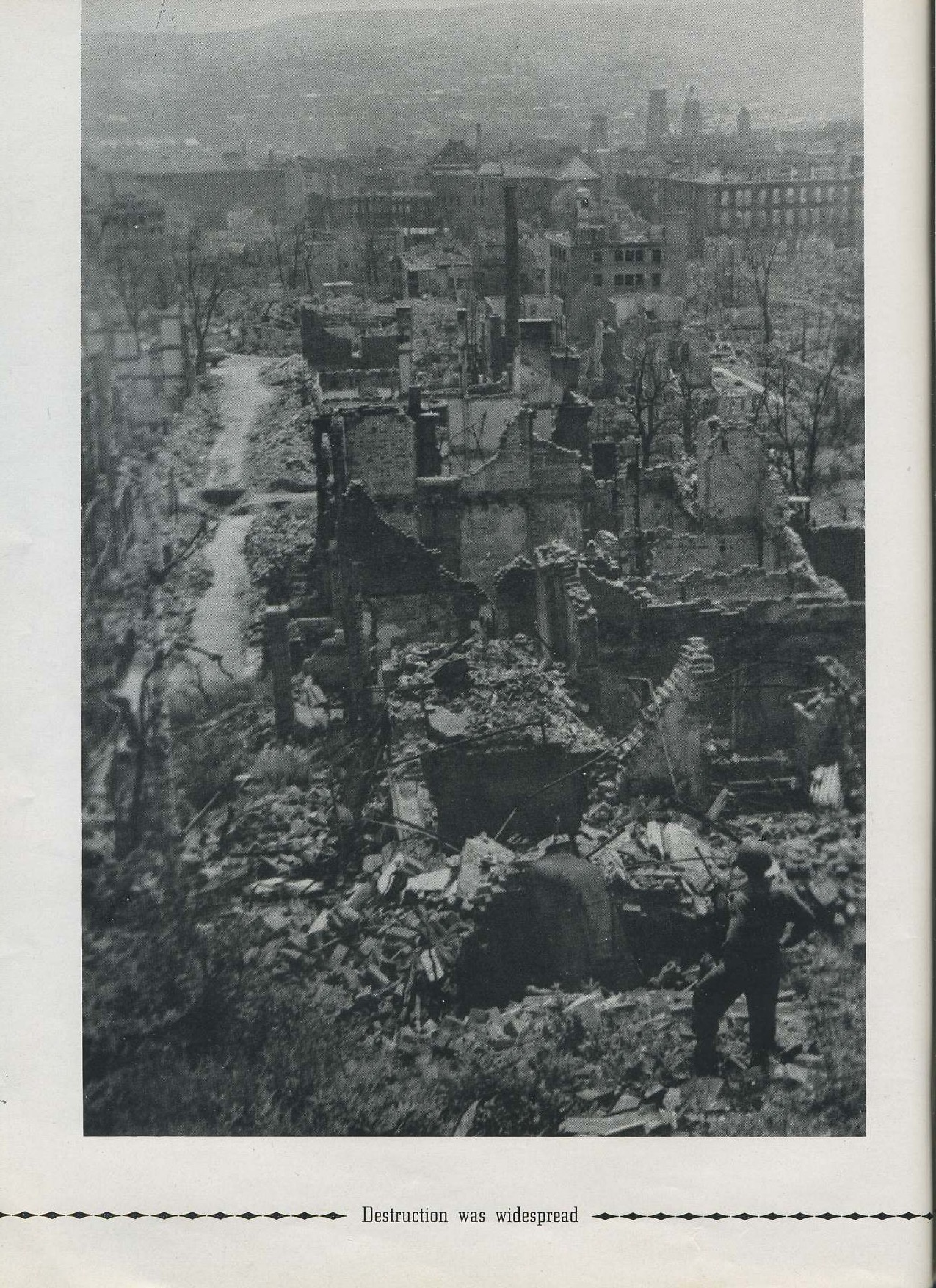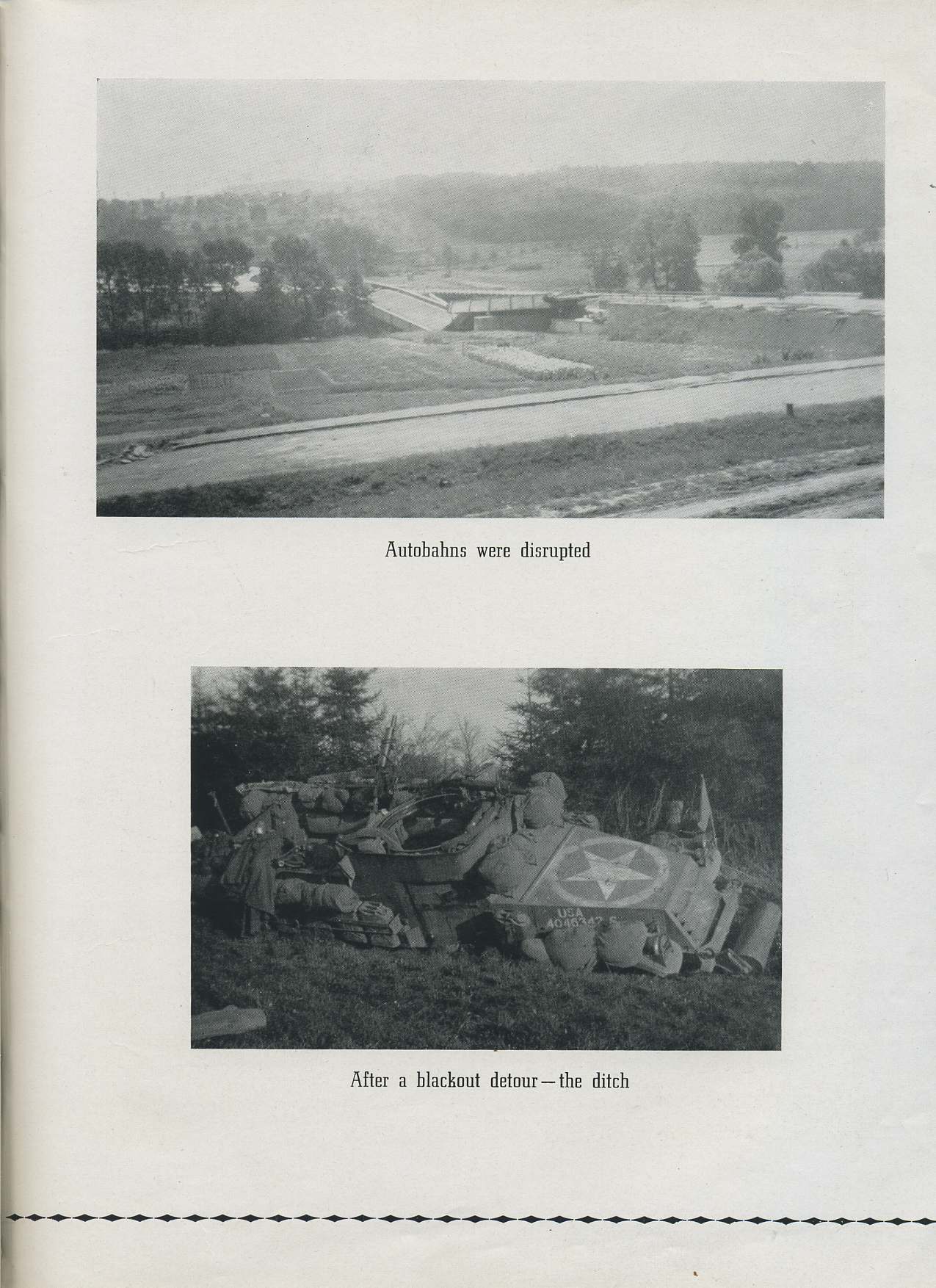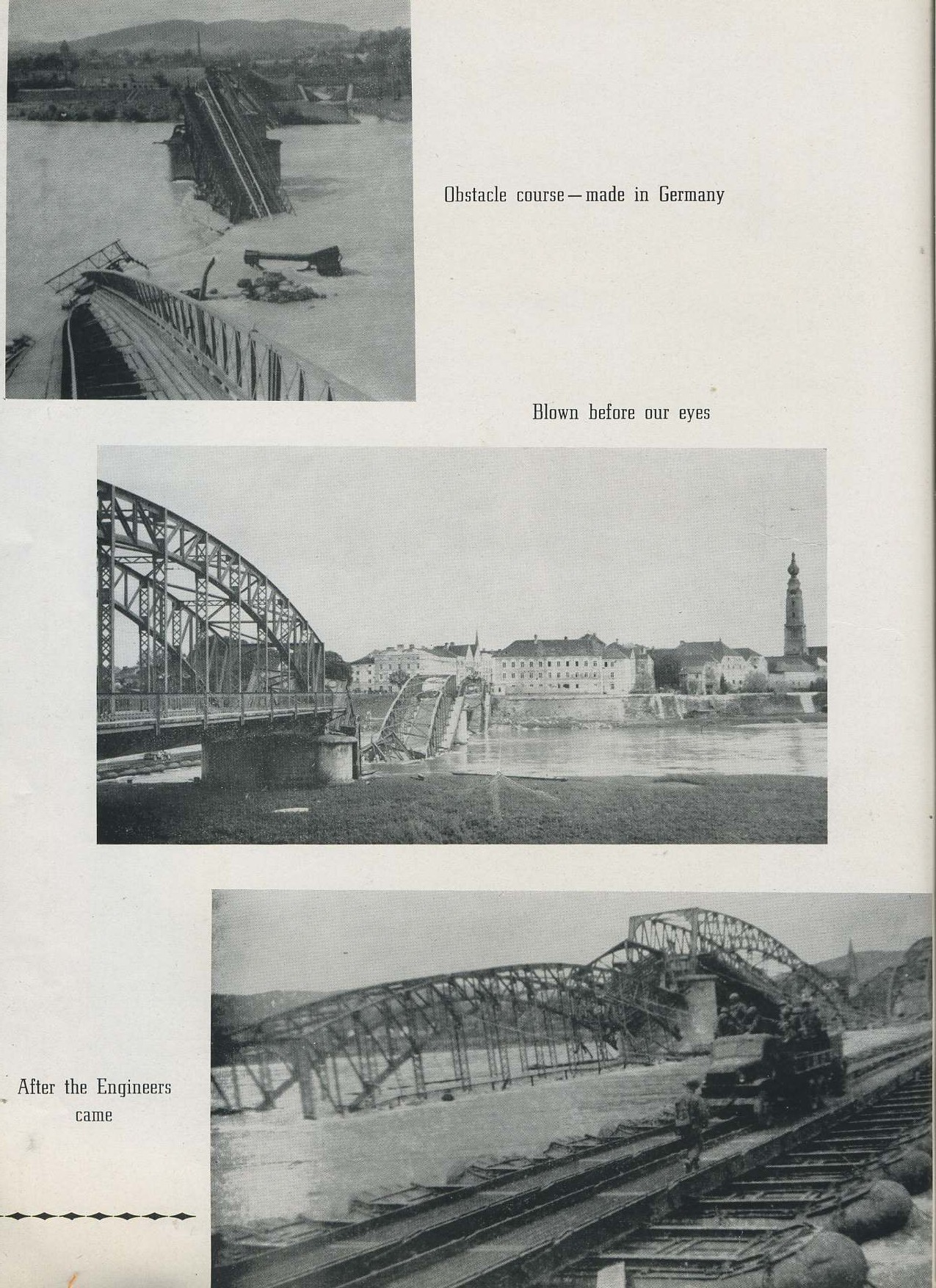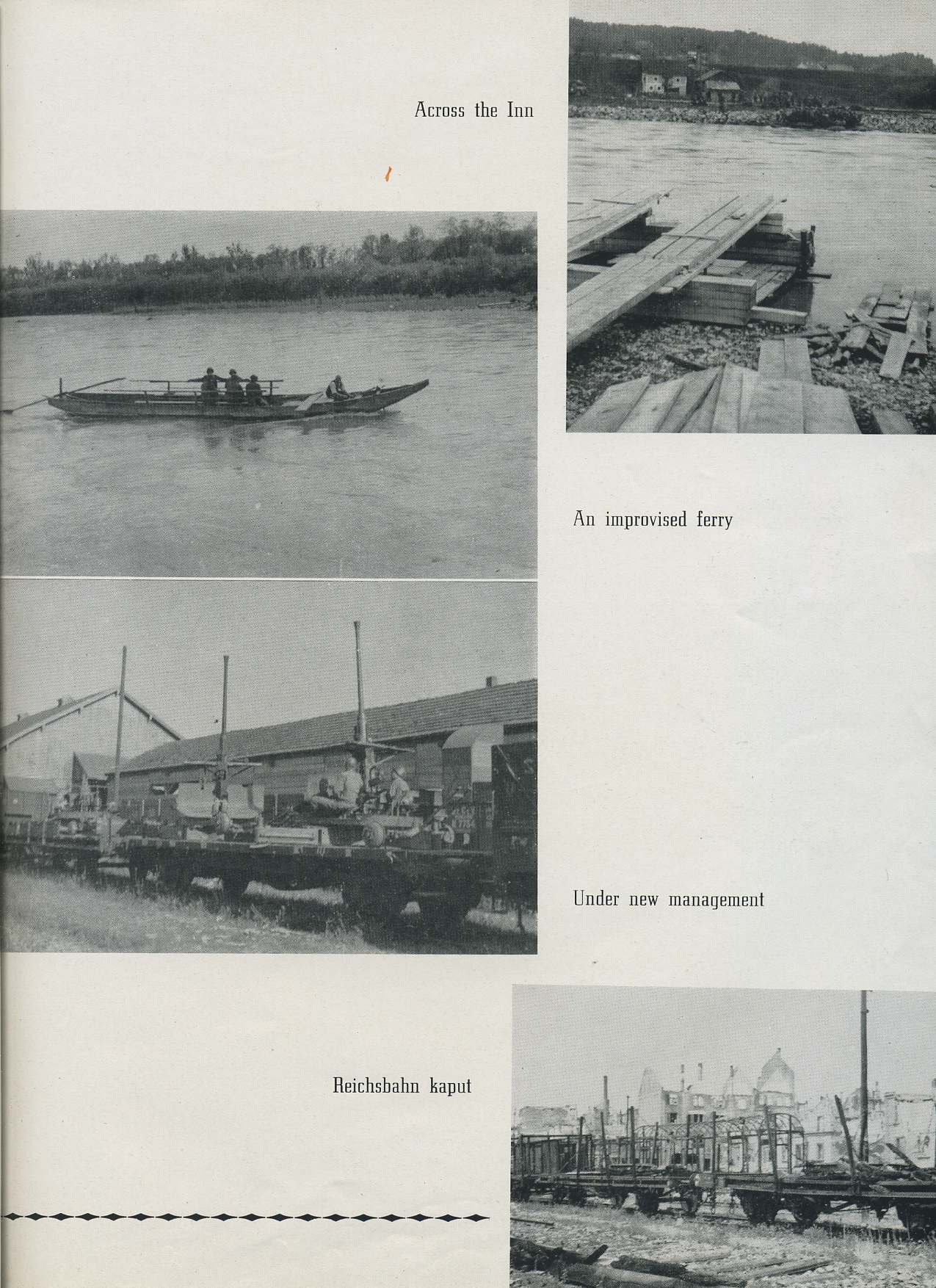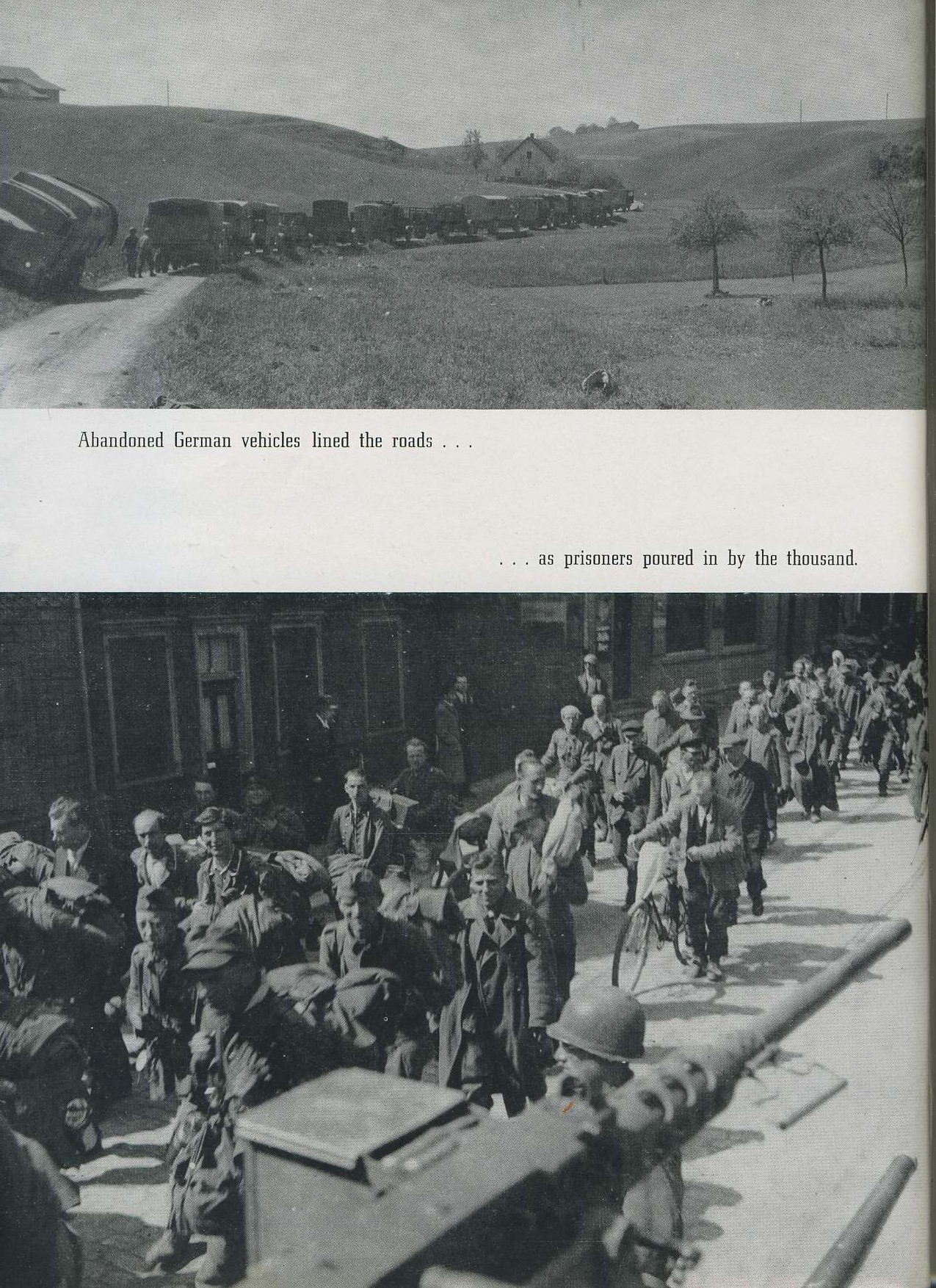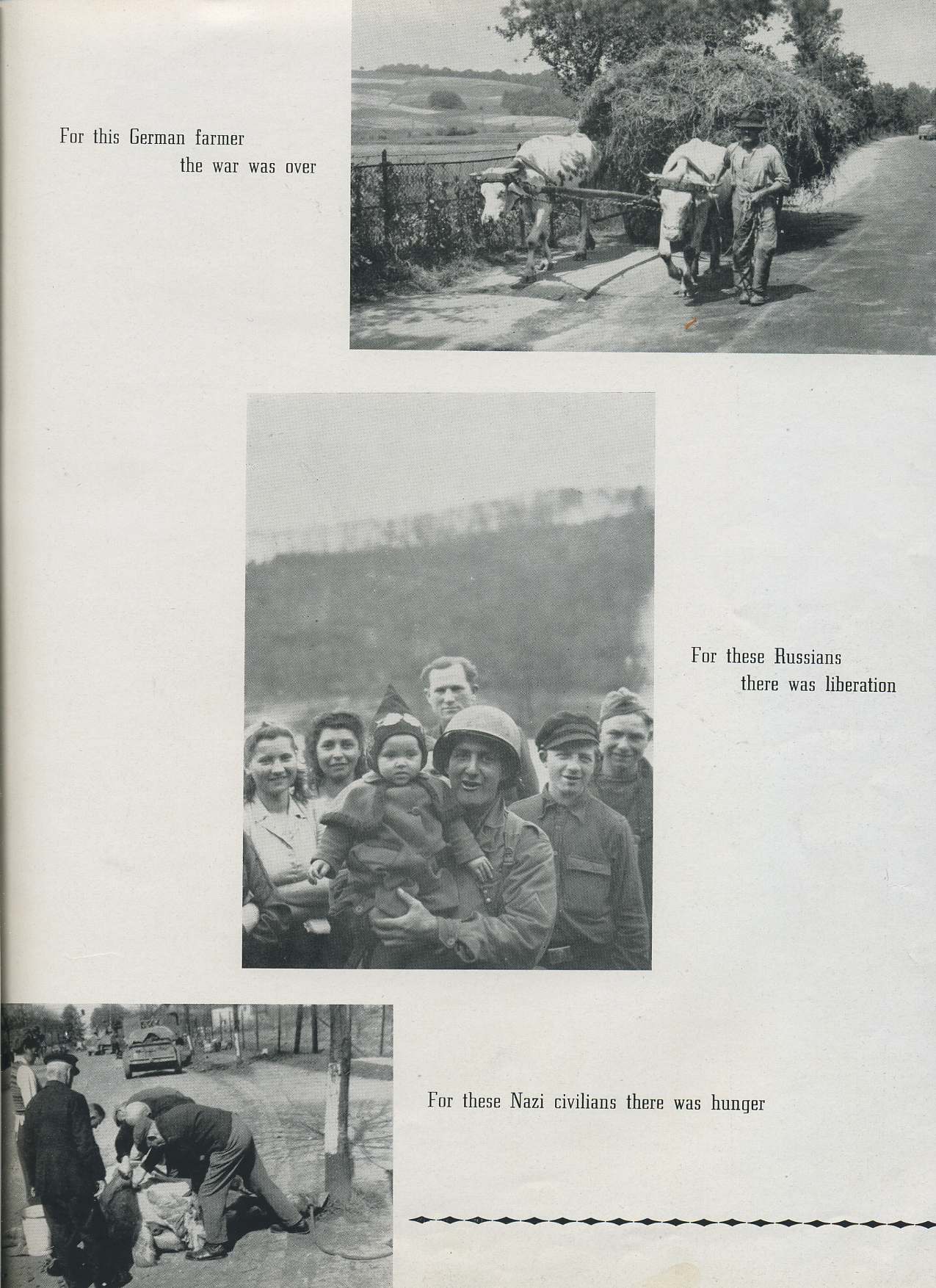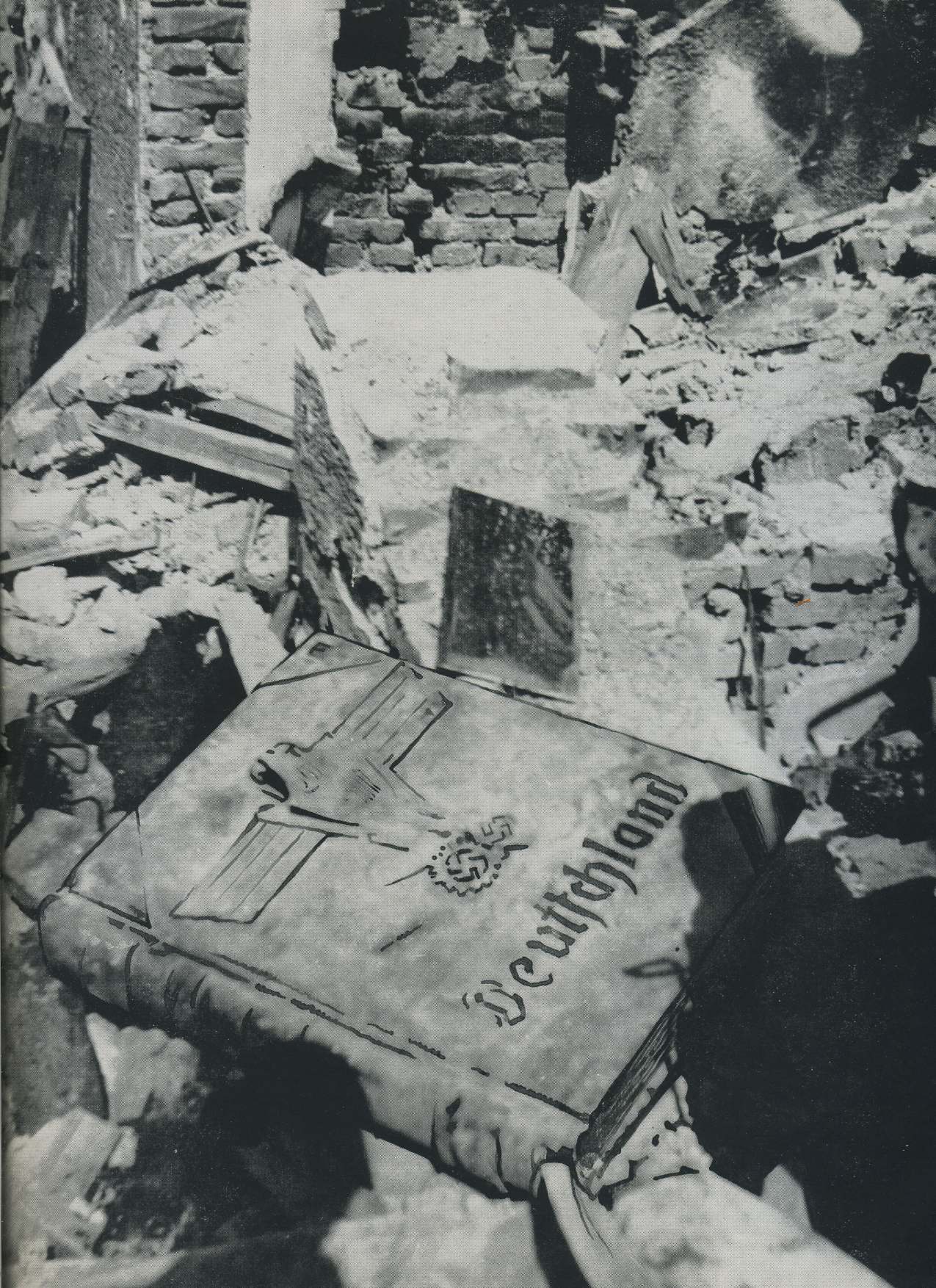CONTENTS
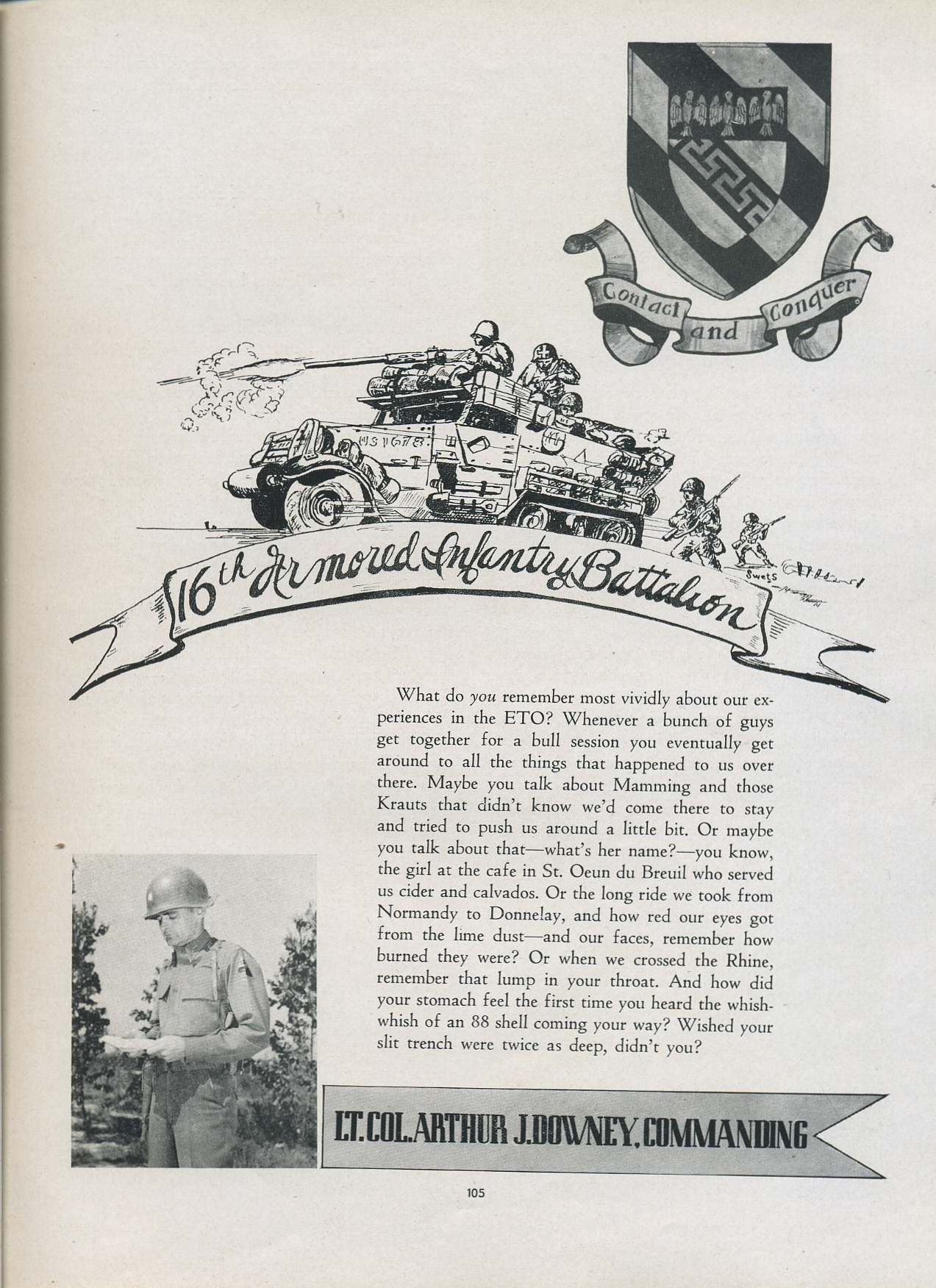
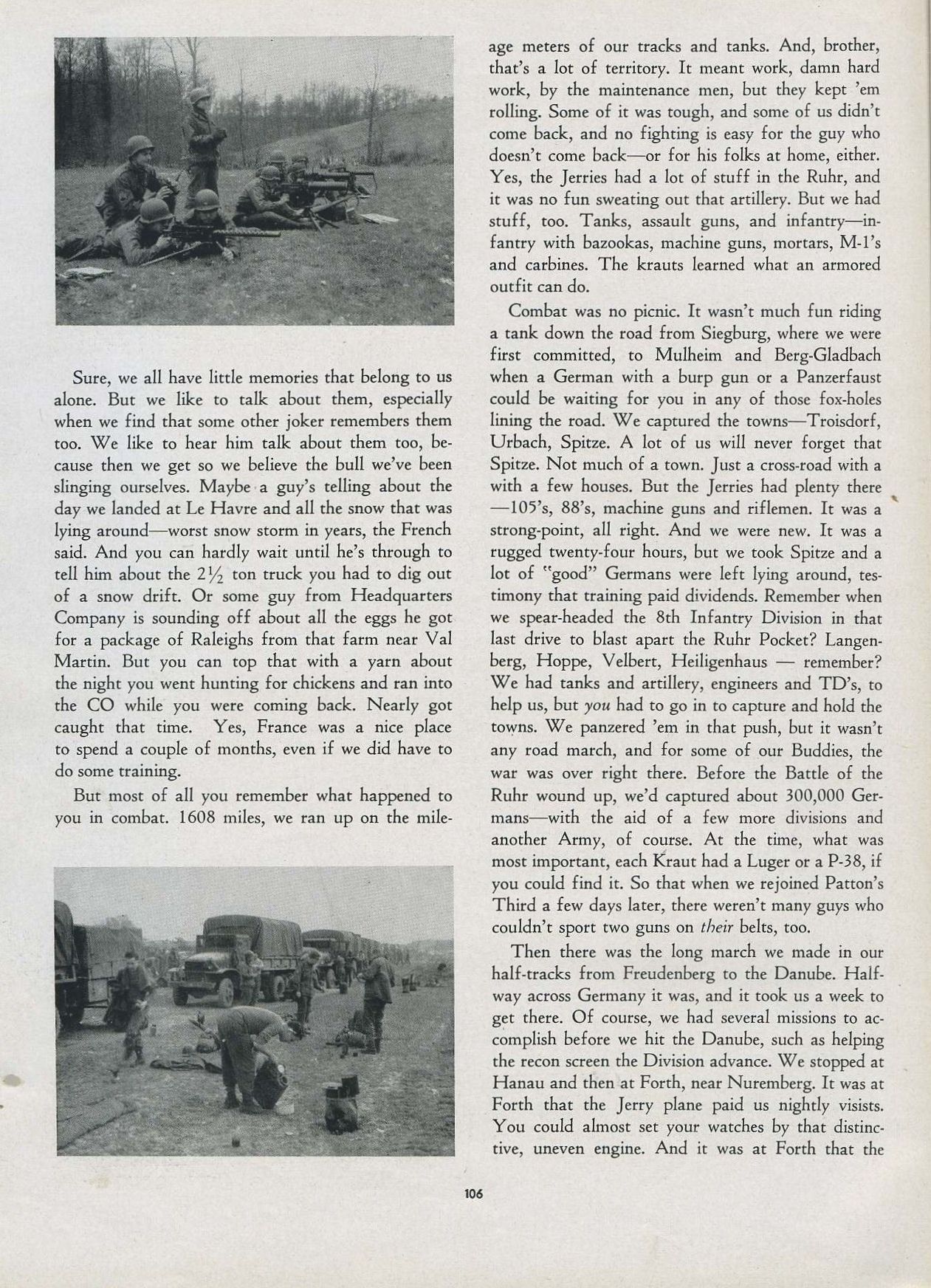
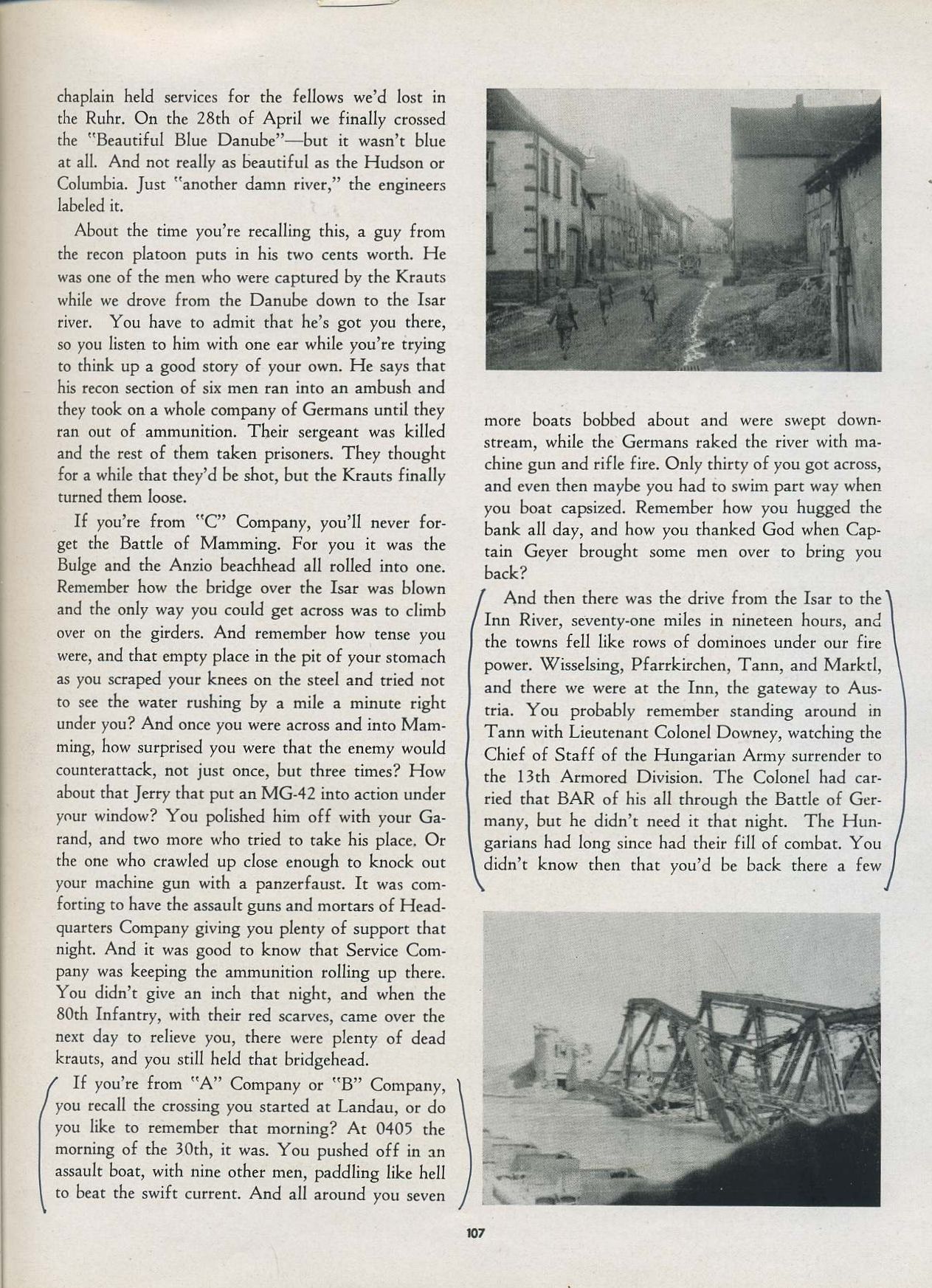
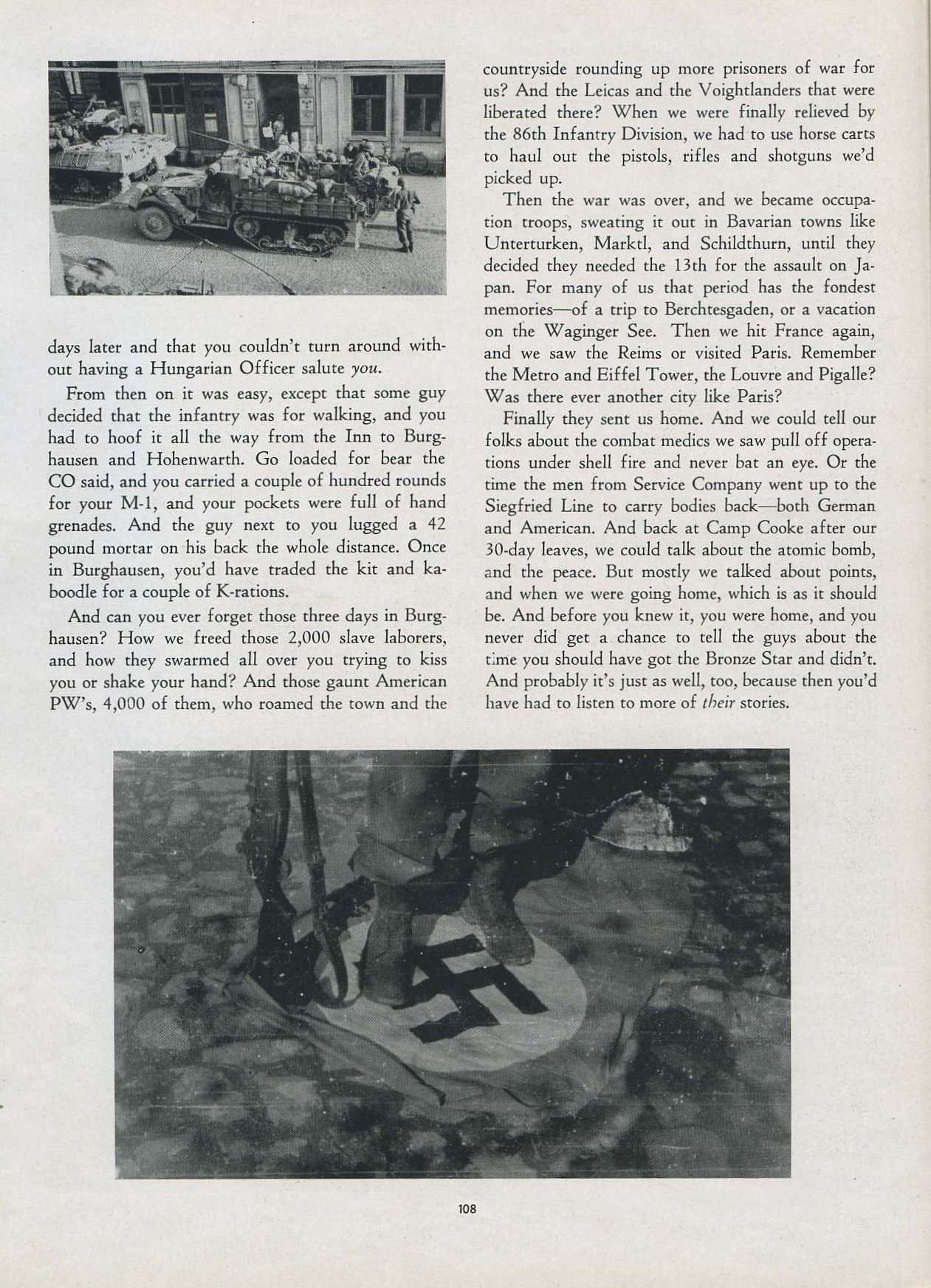
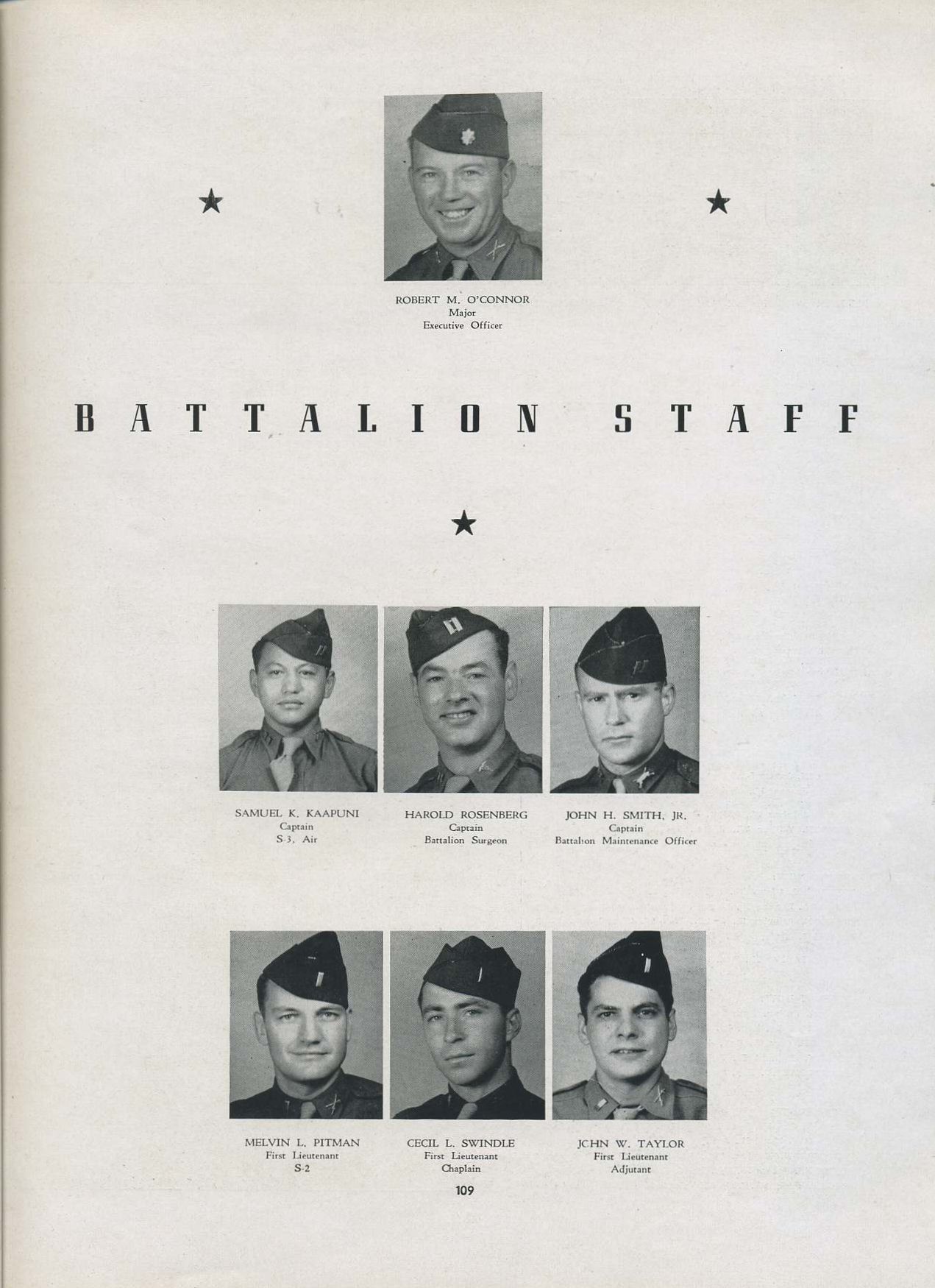
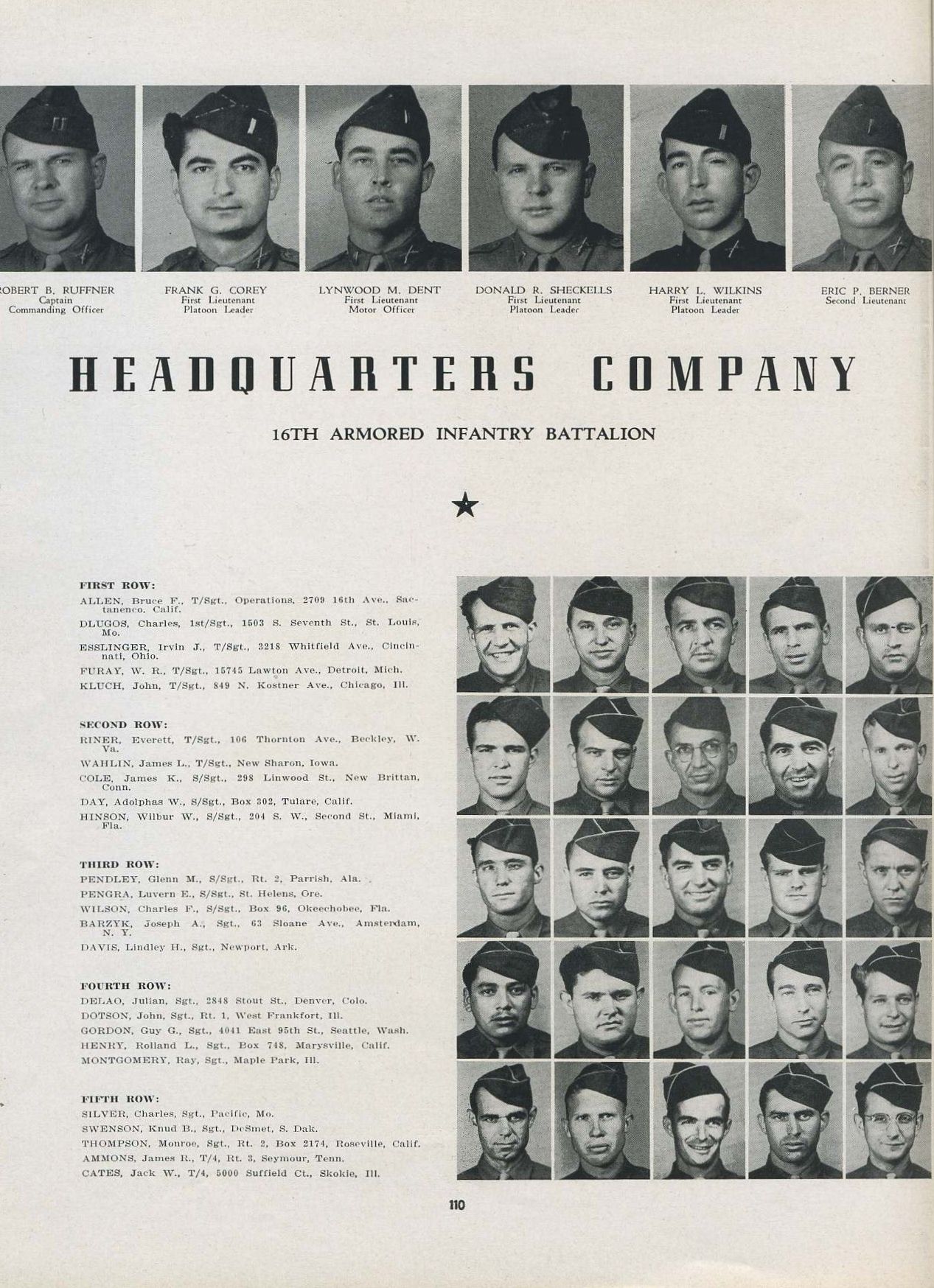
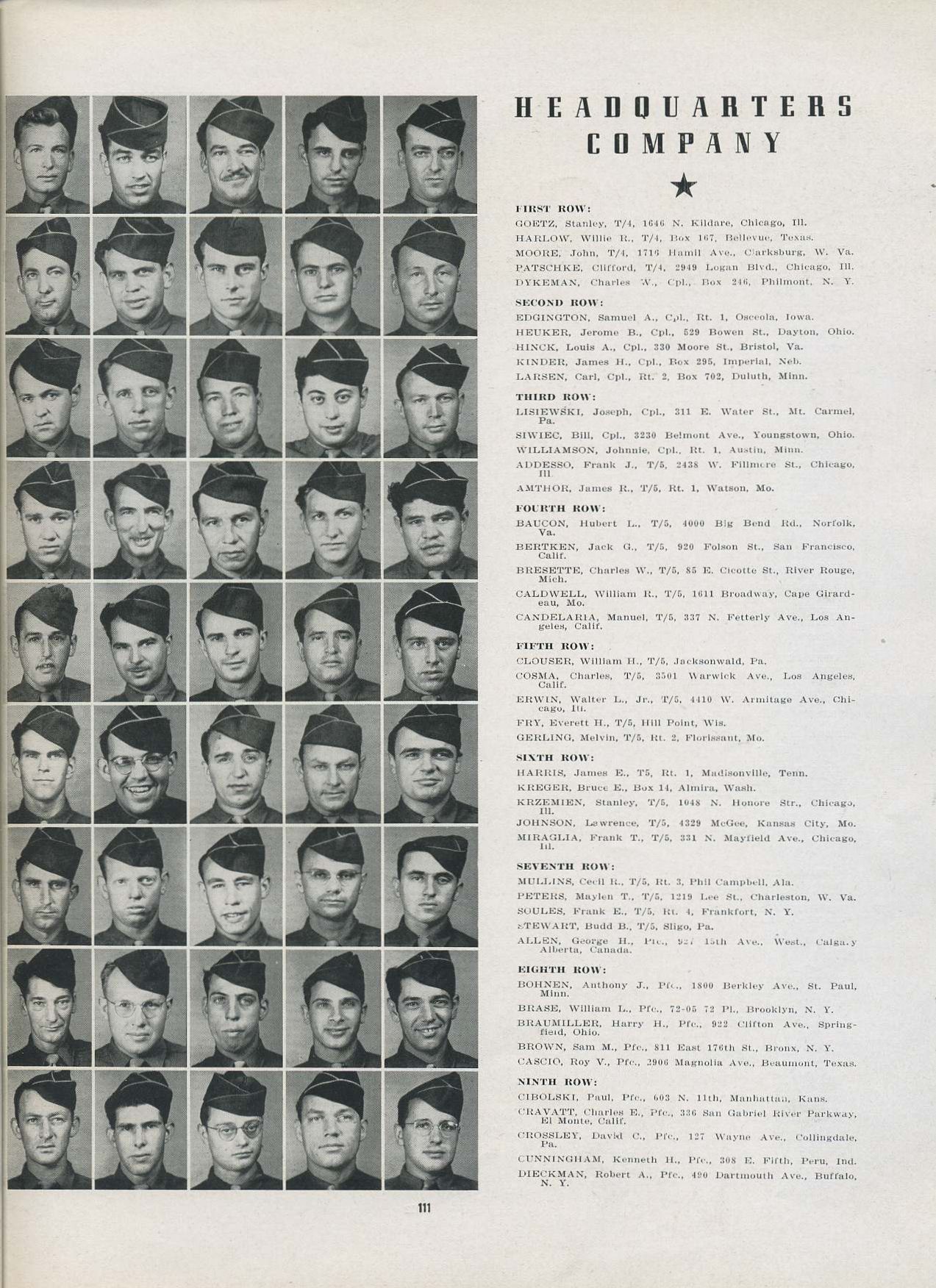


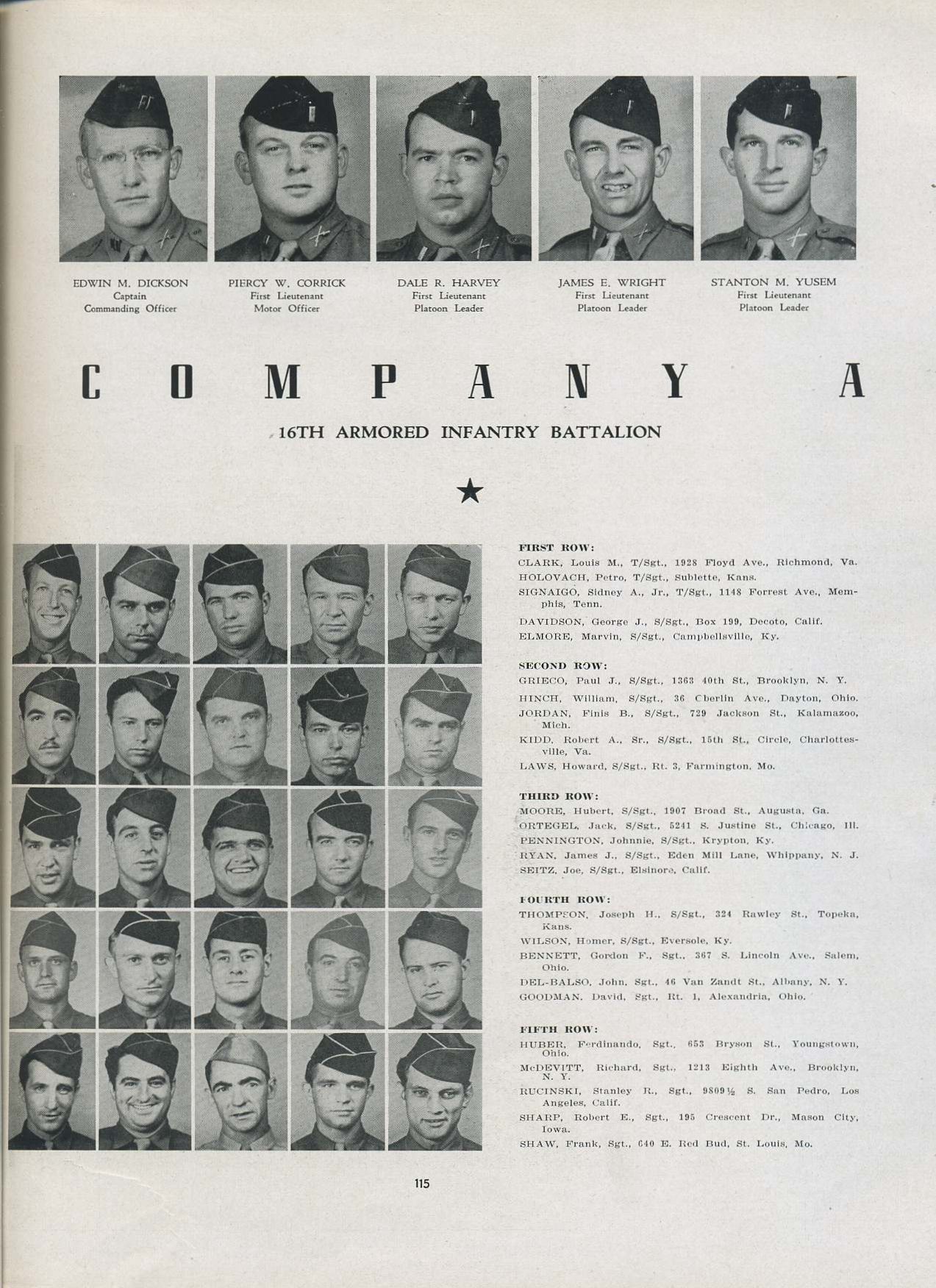
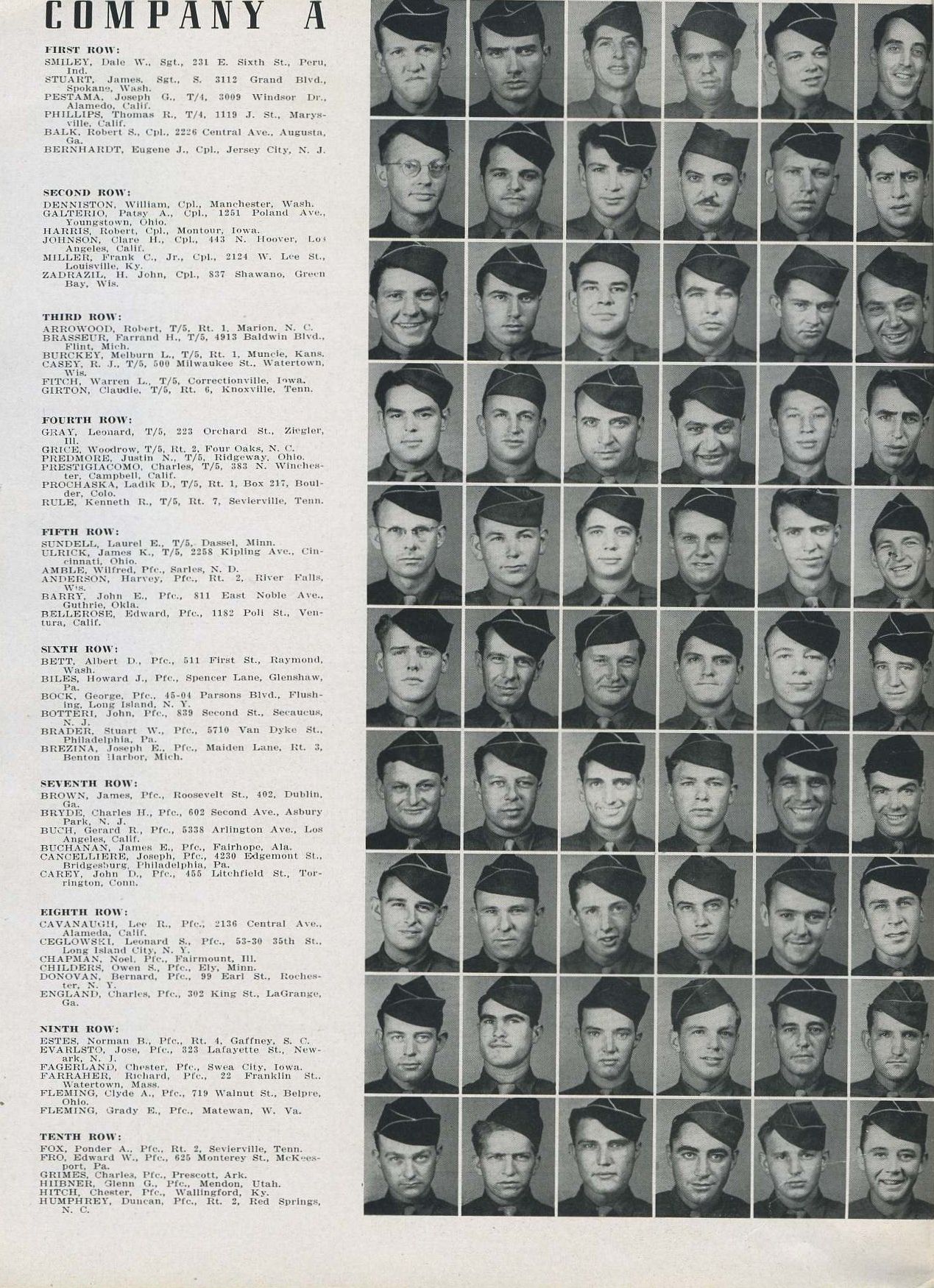
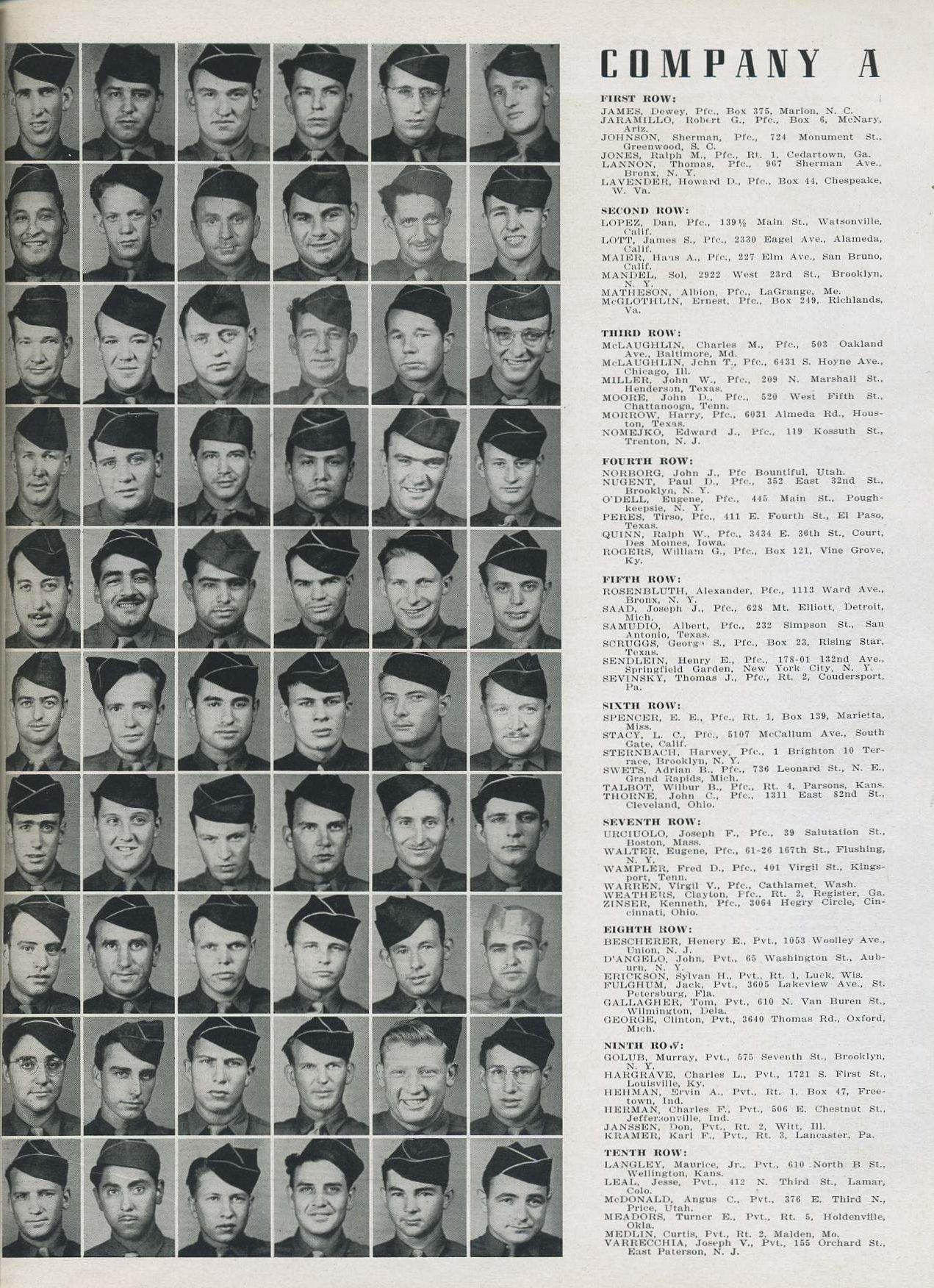
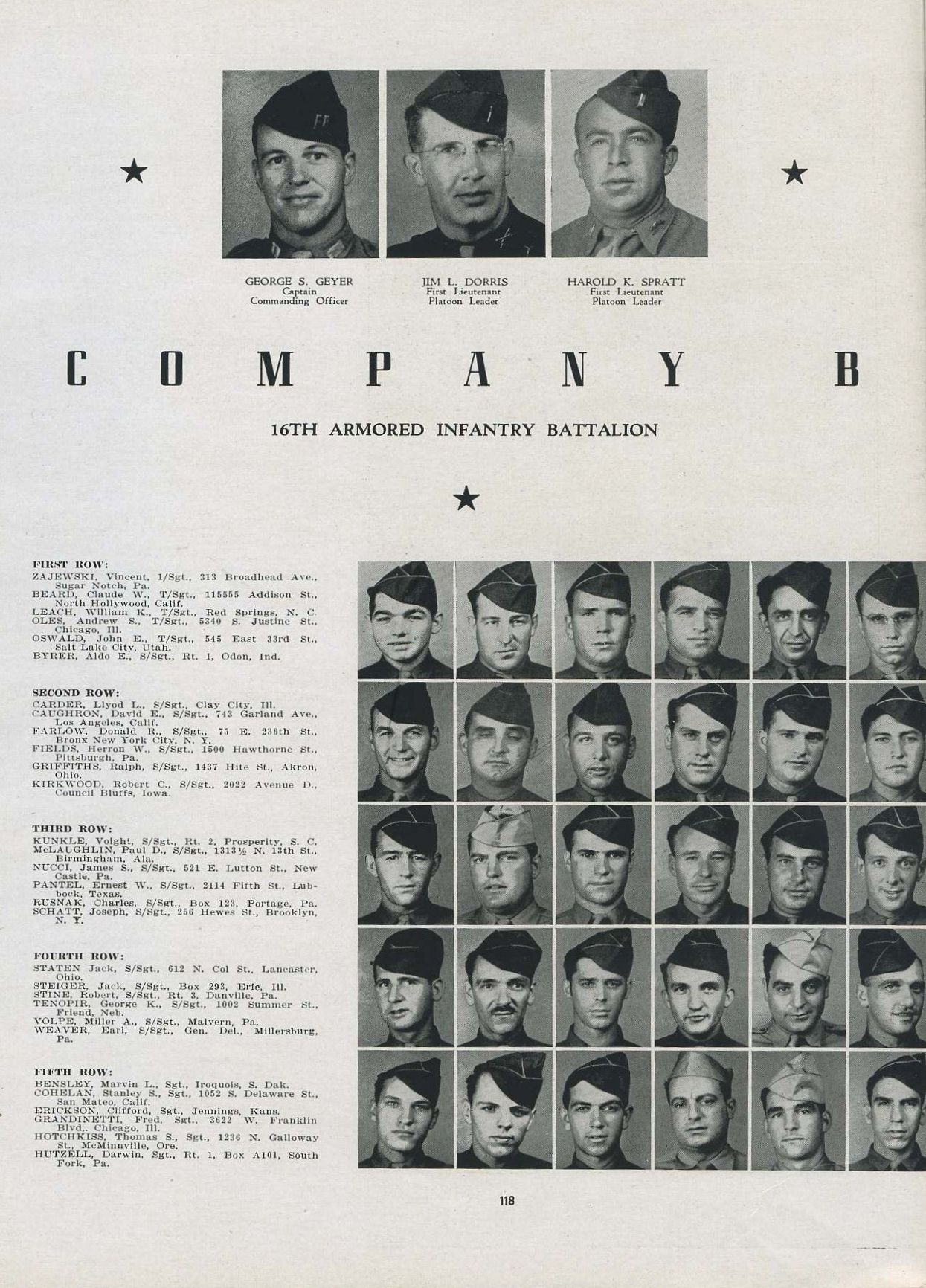
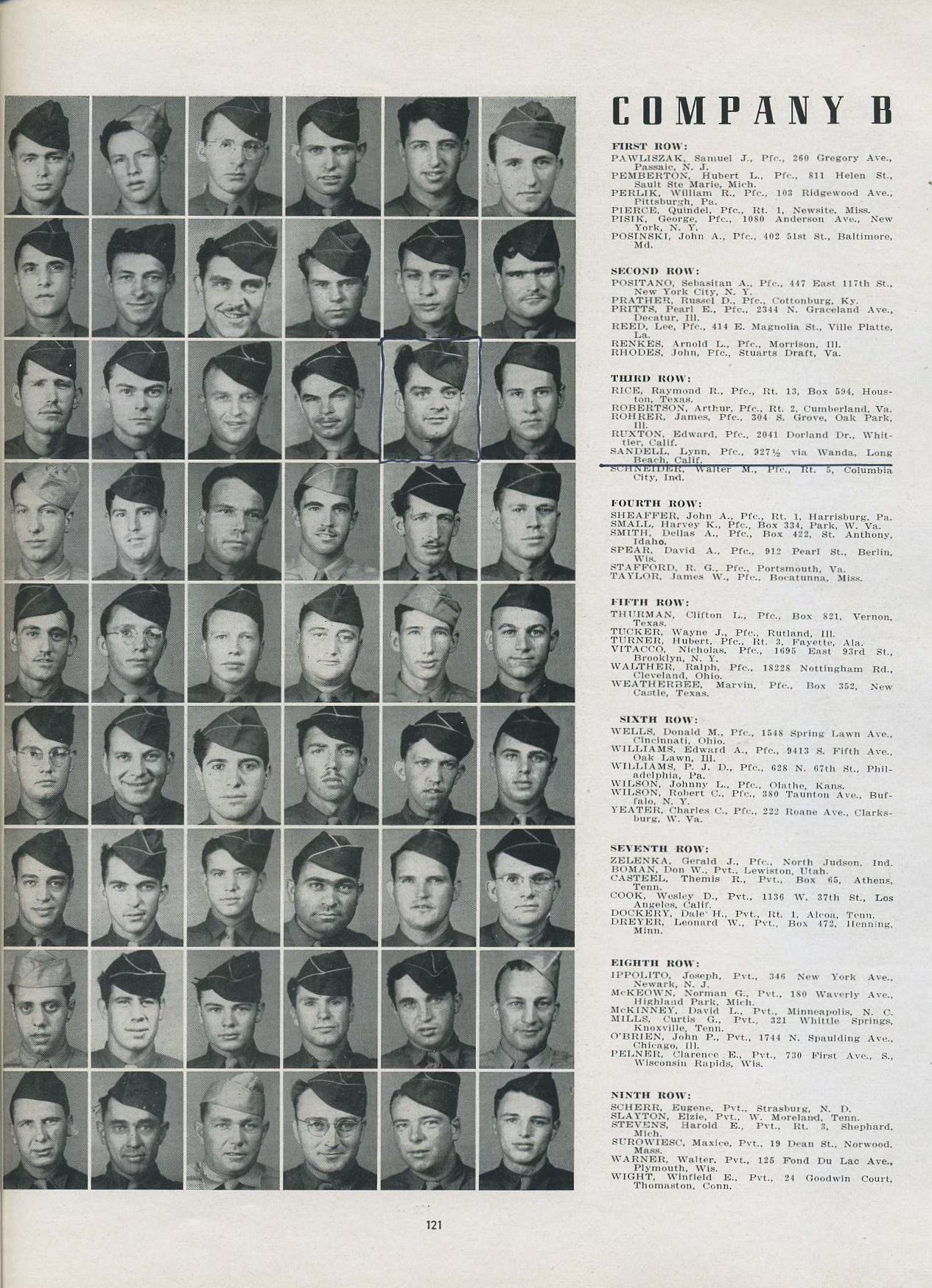
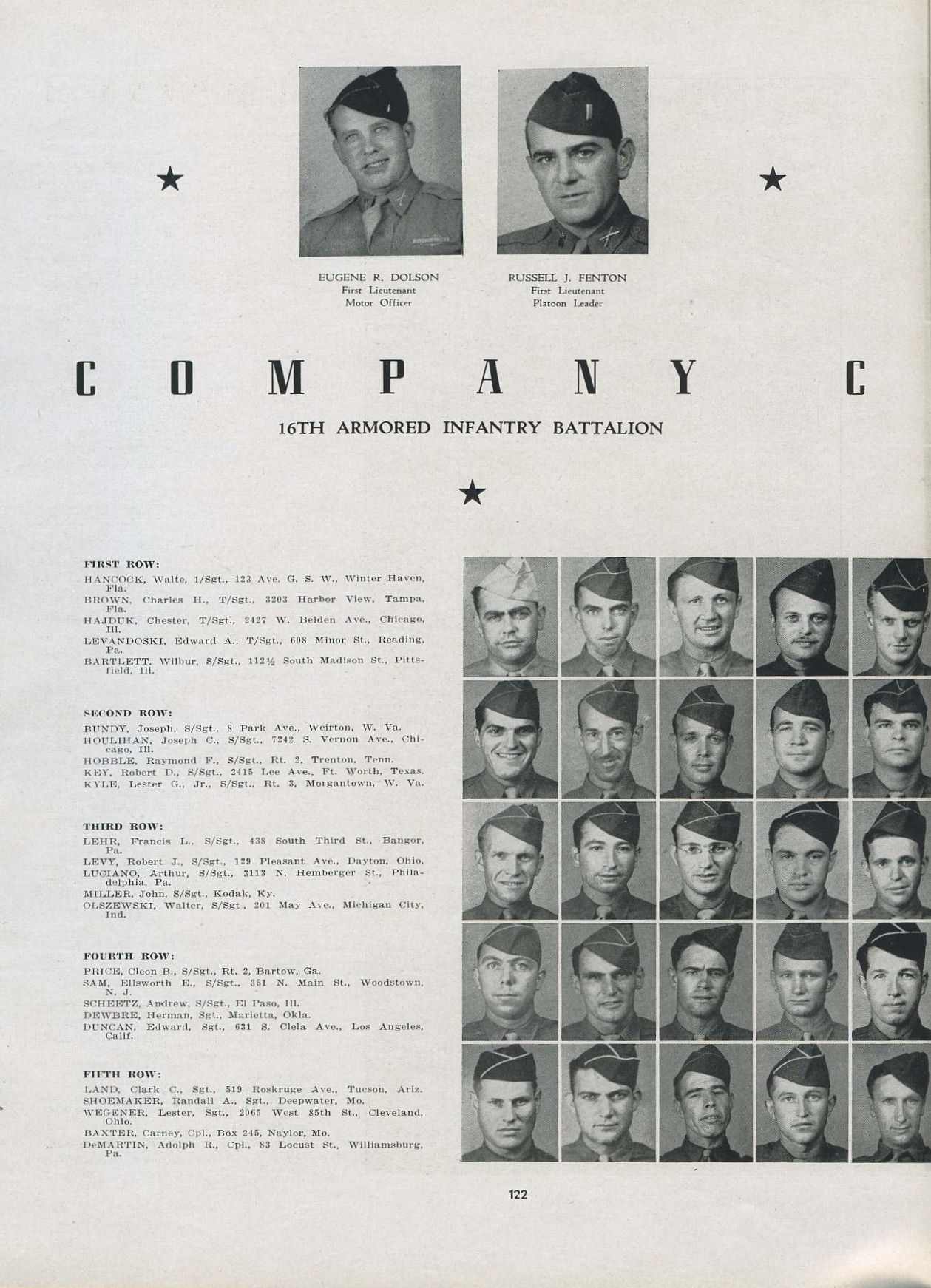
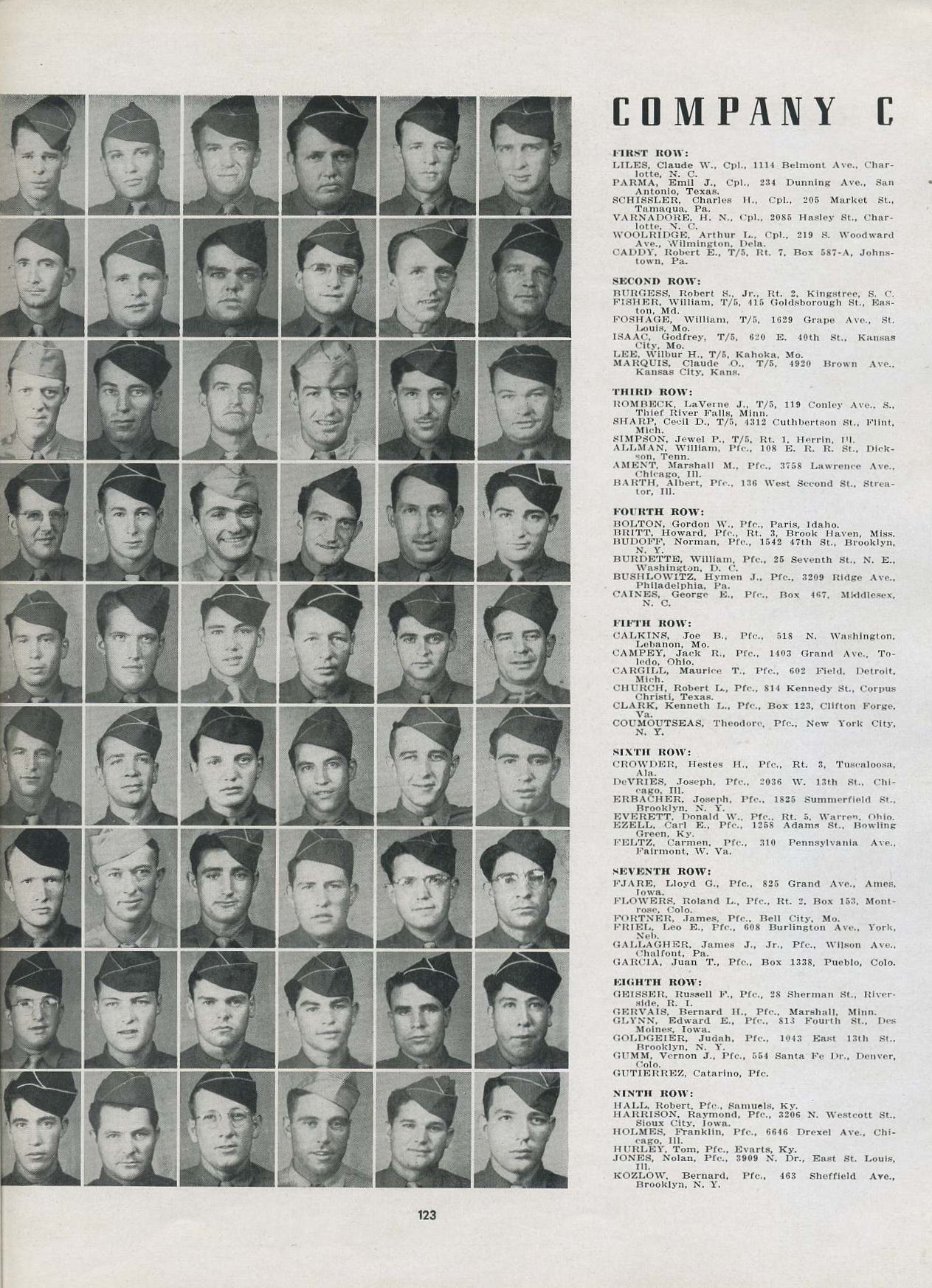
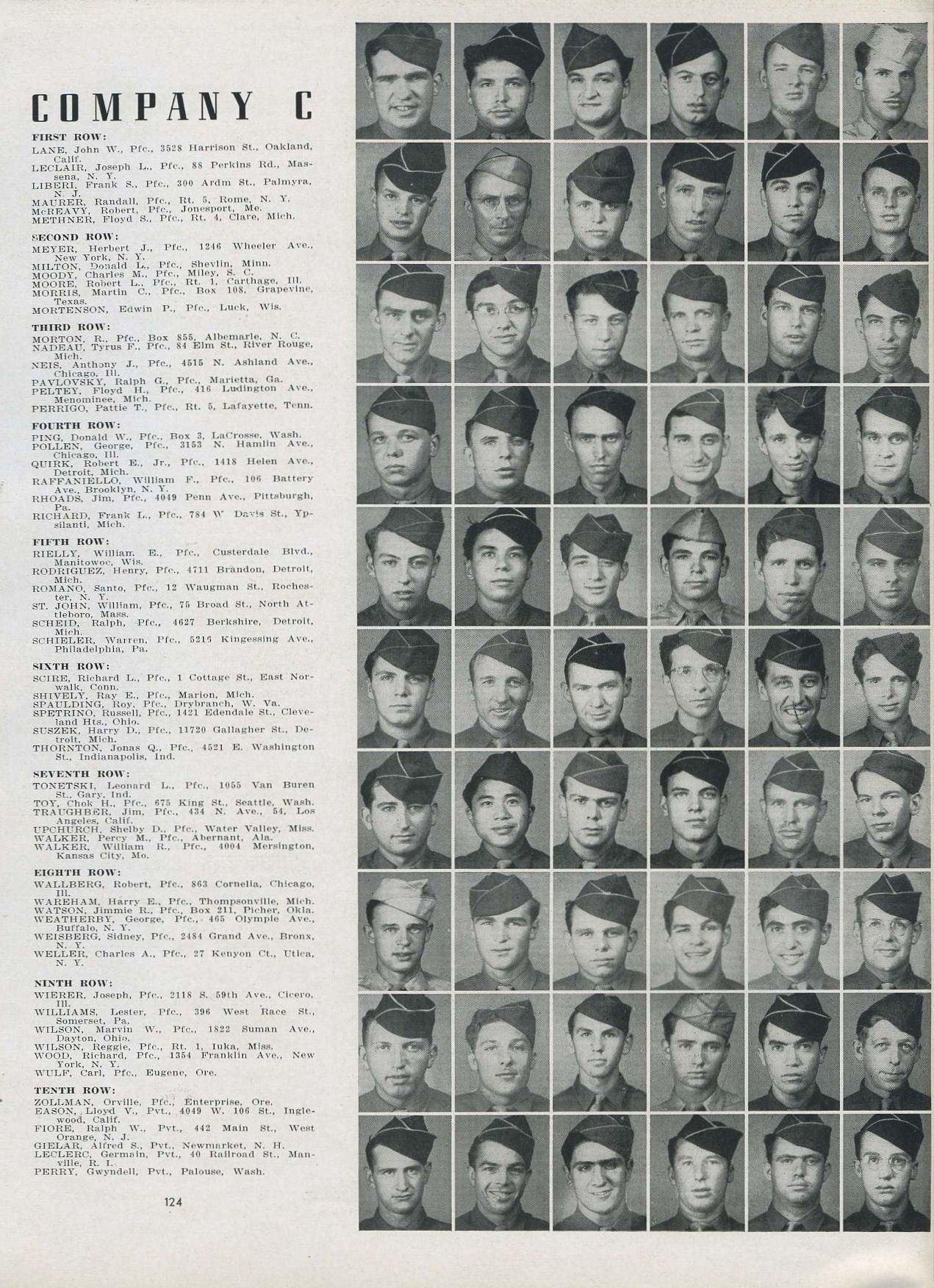
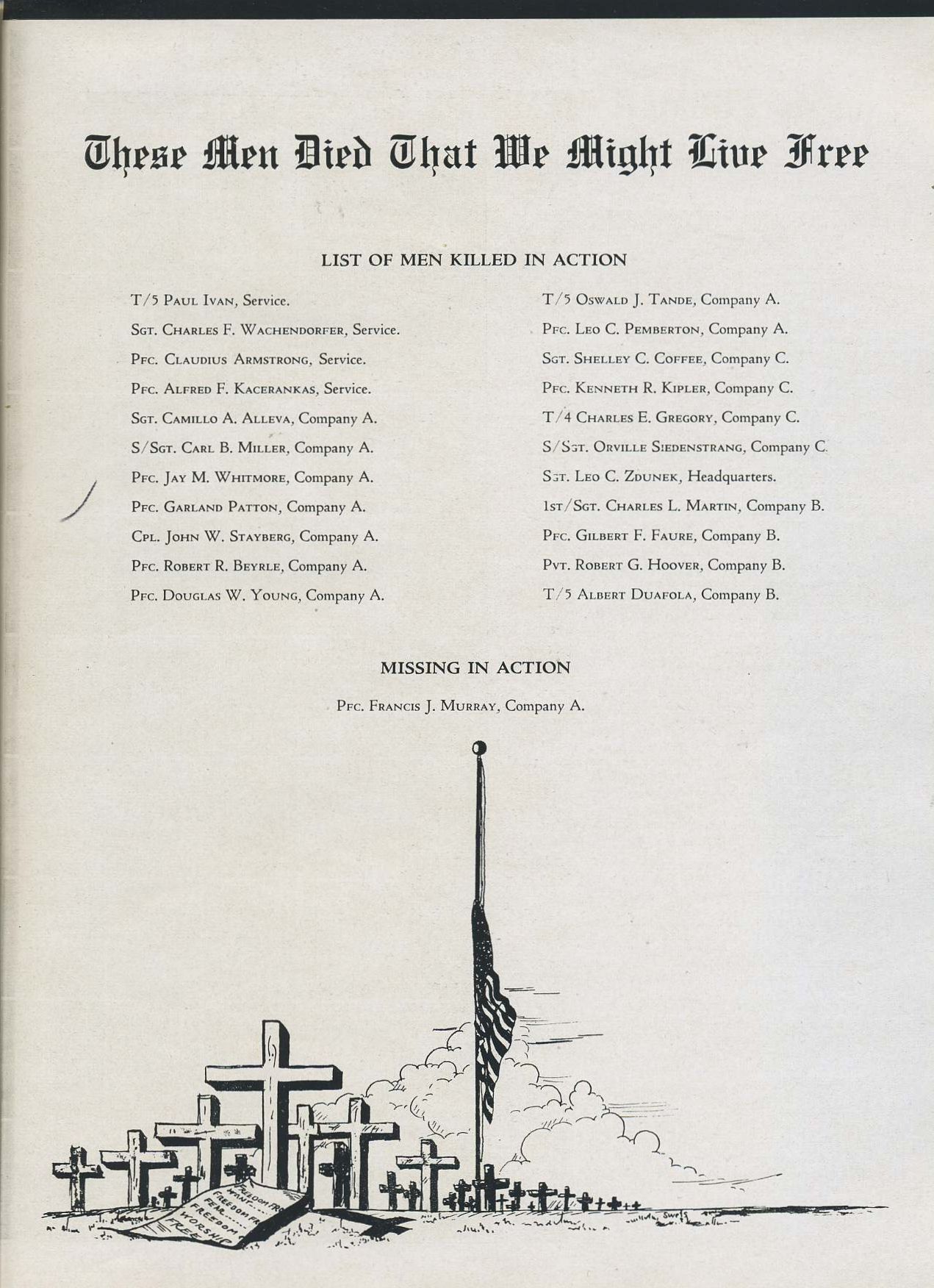
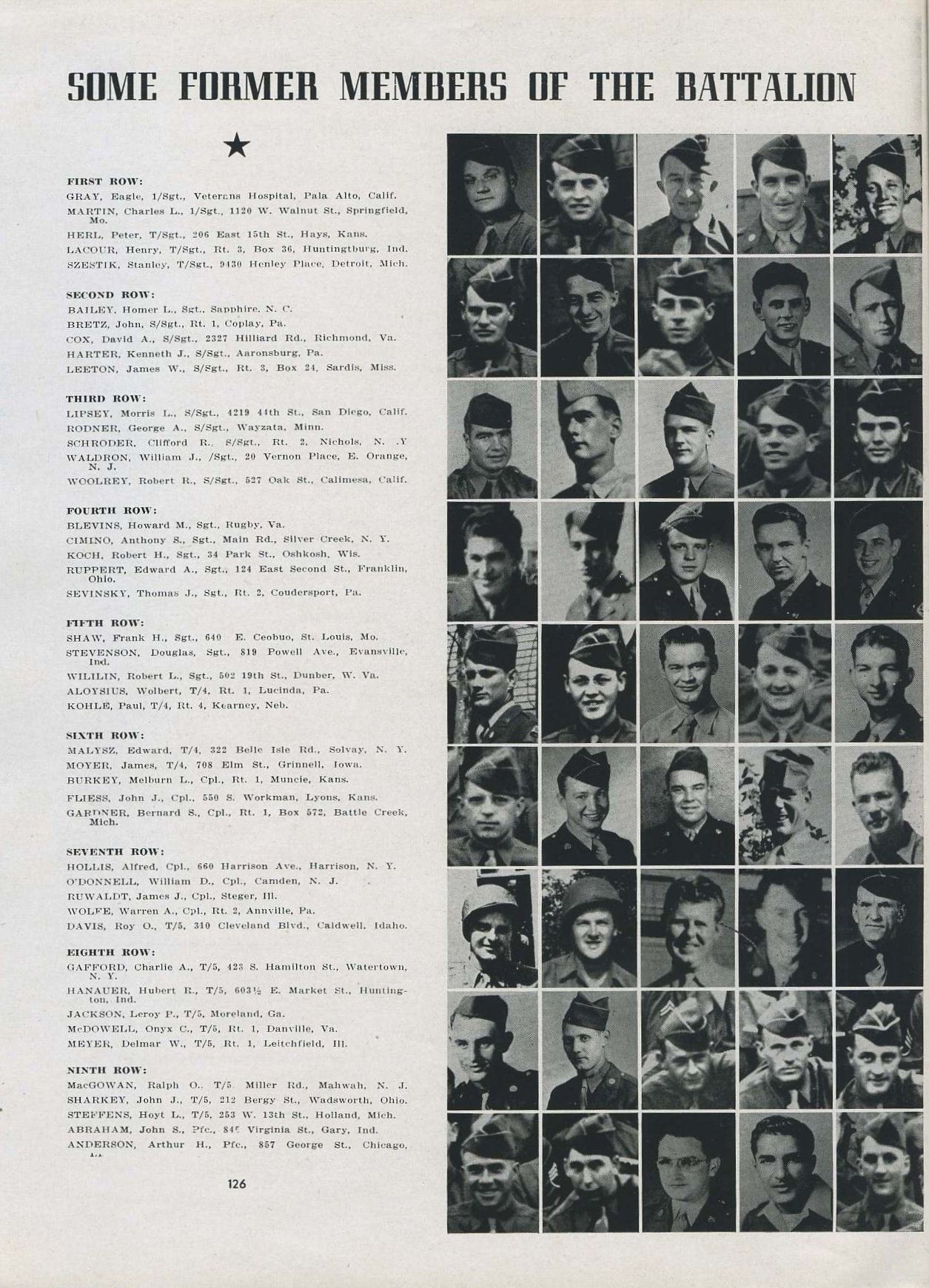
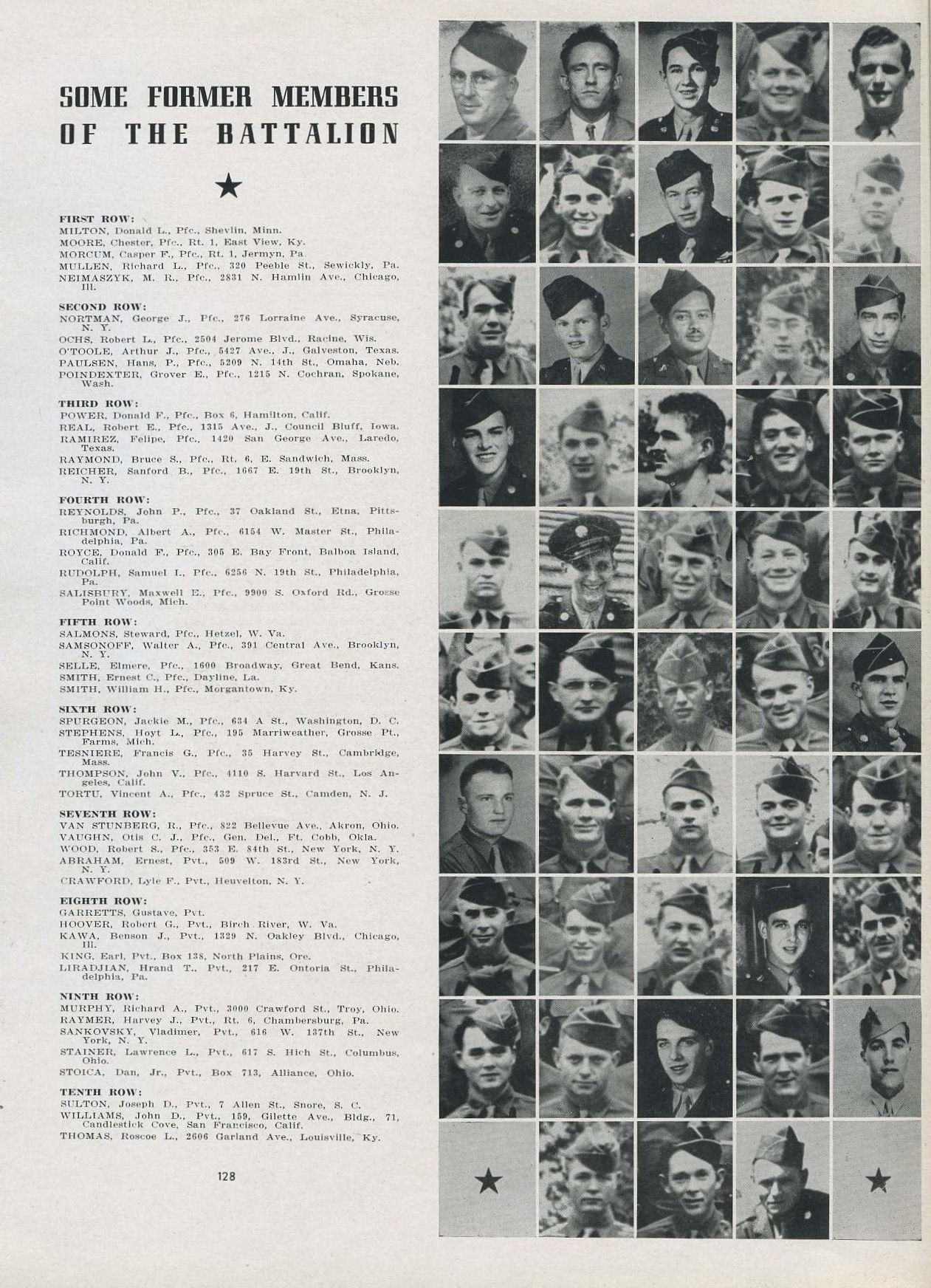
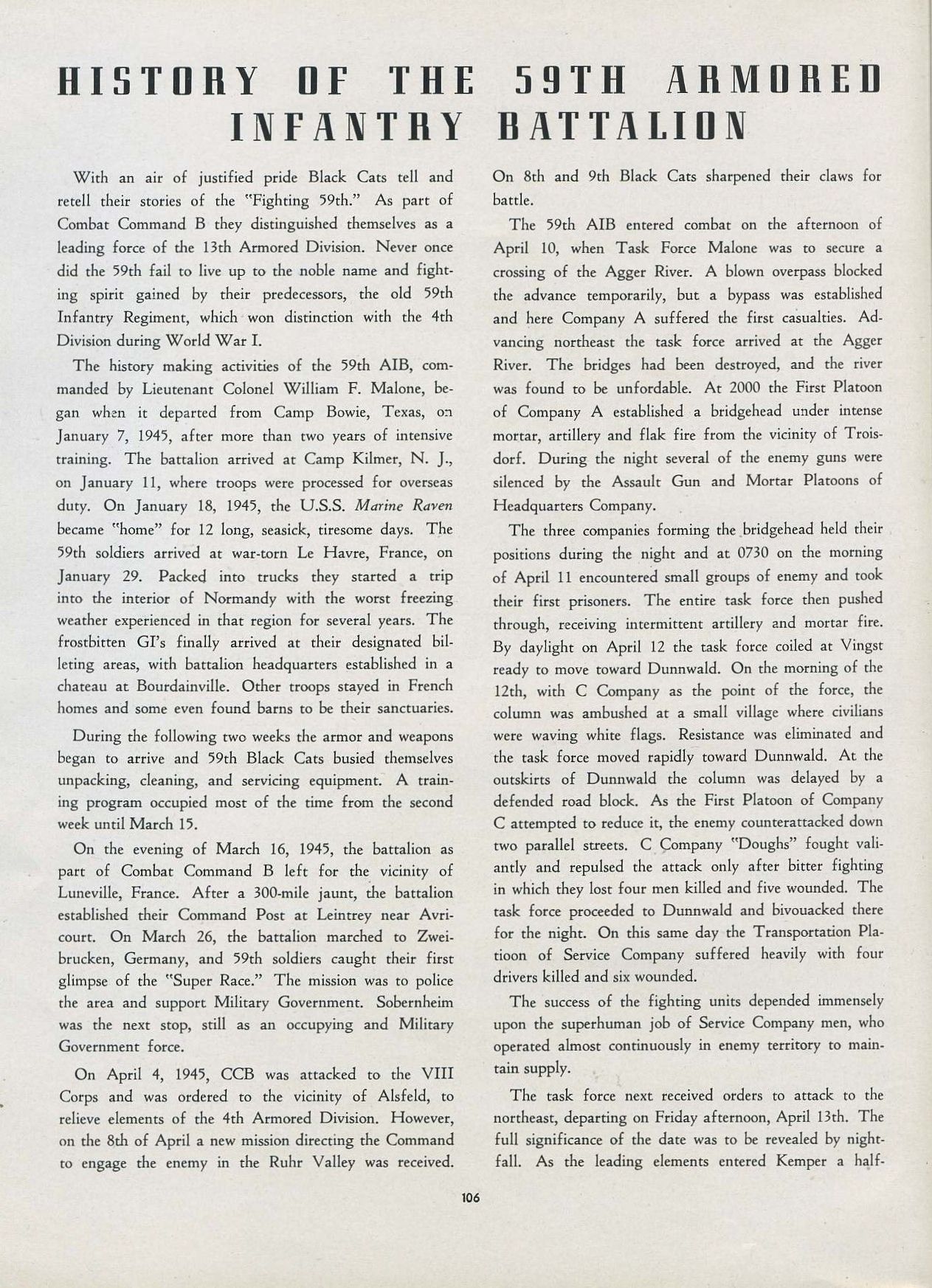
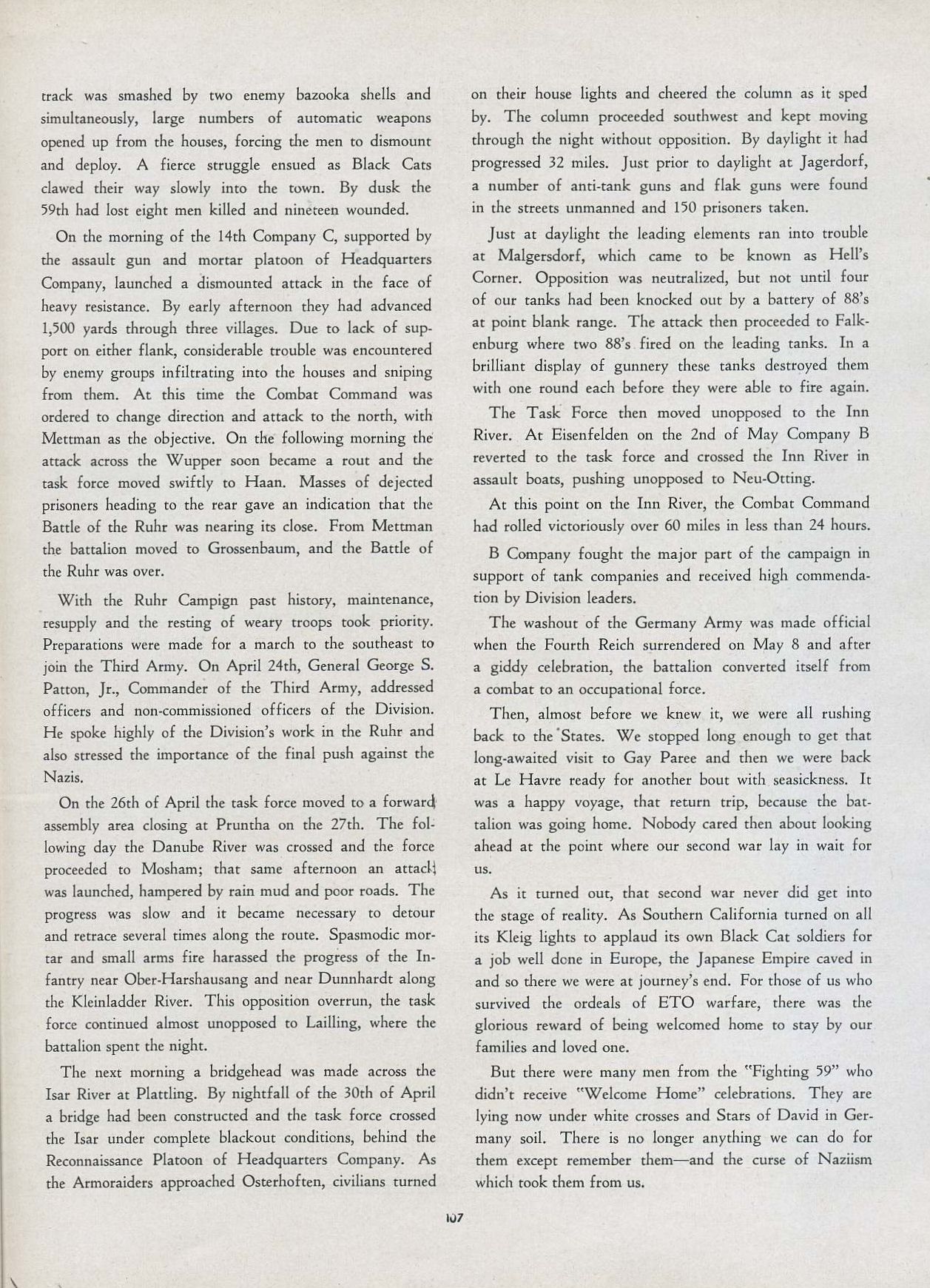
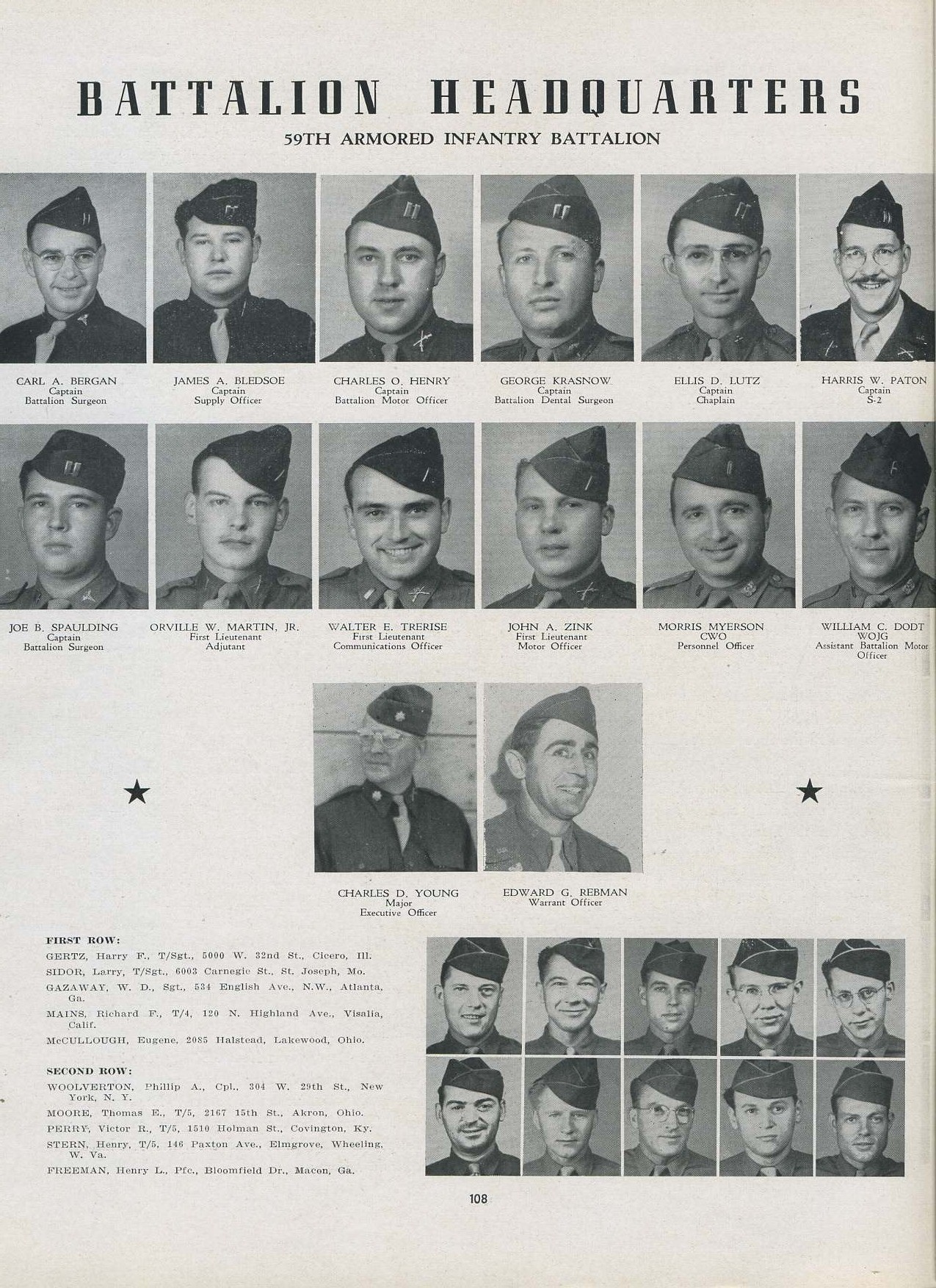
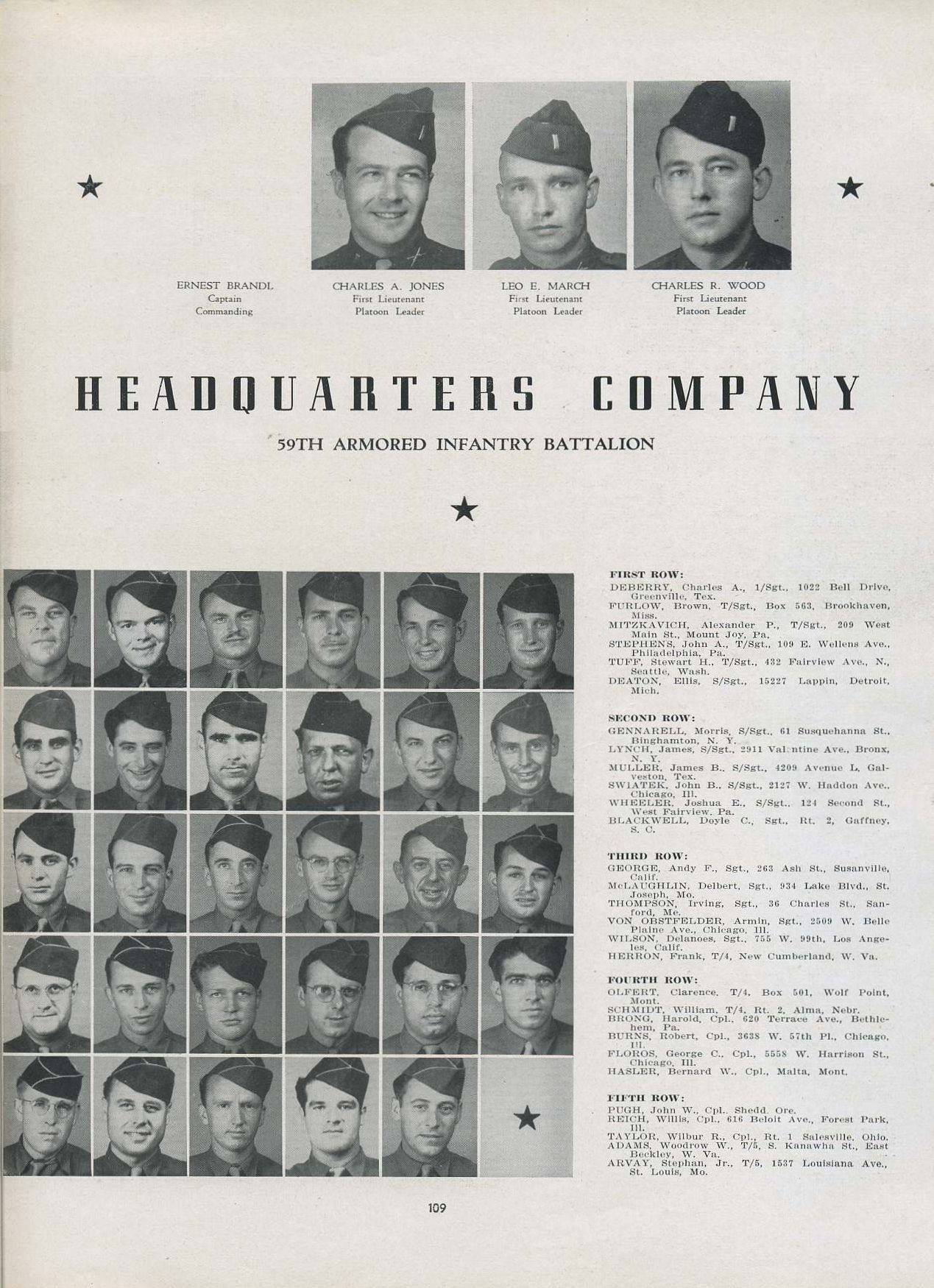

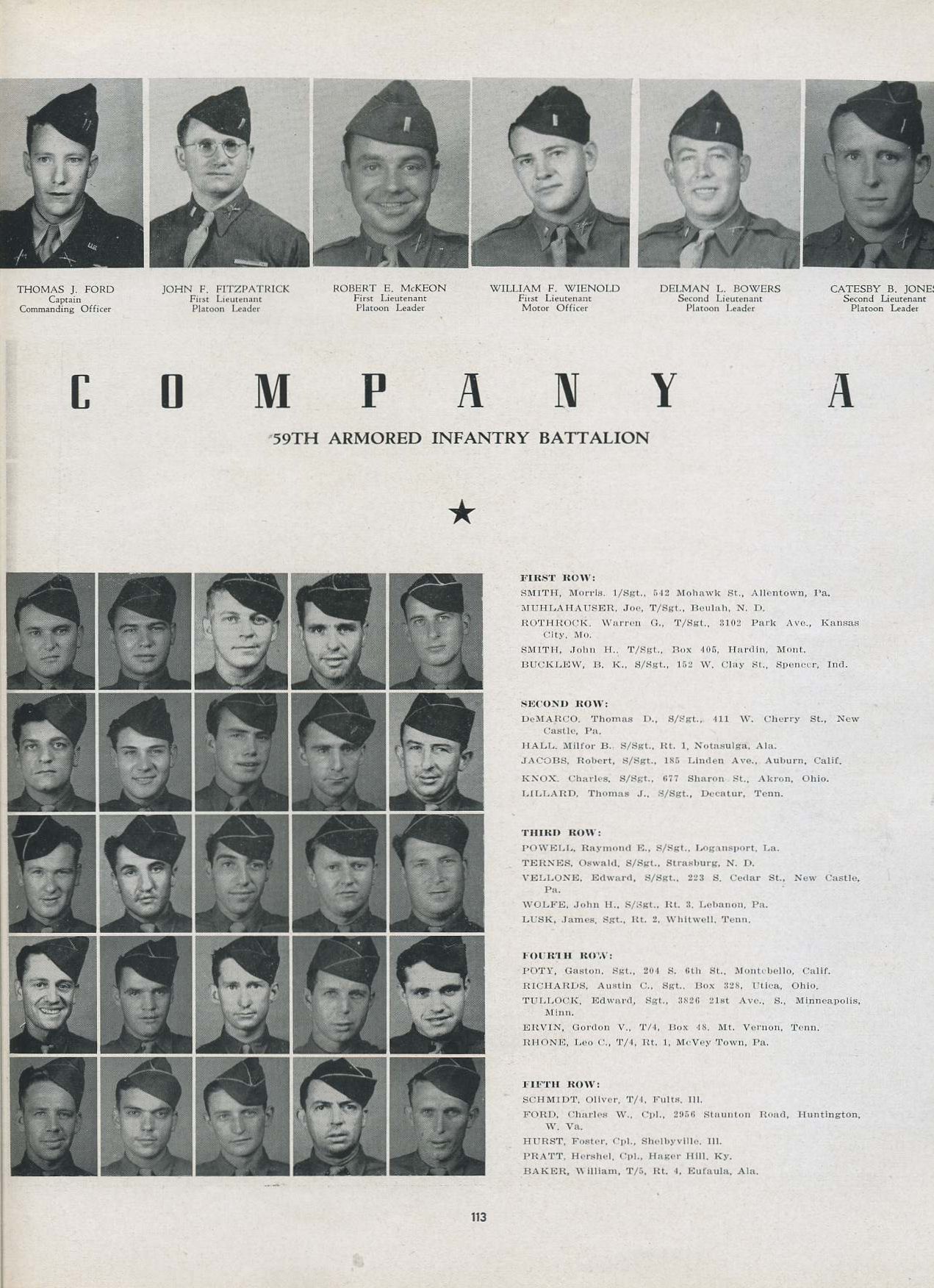
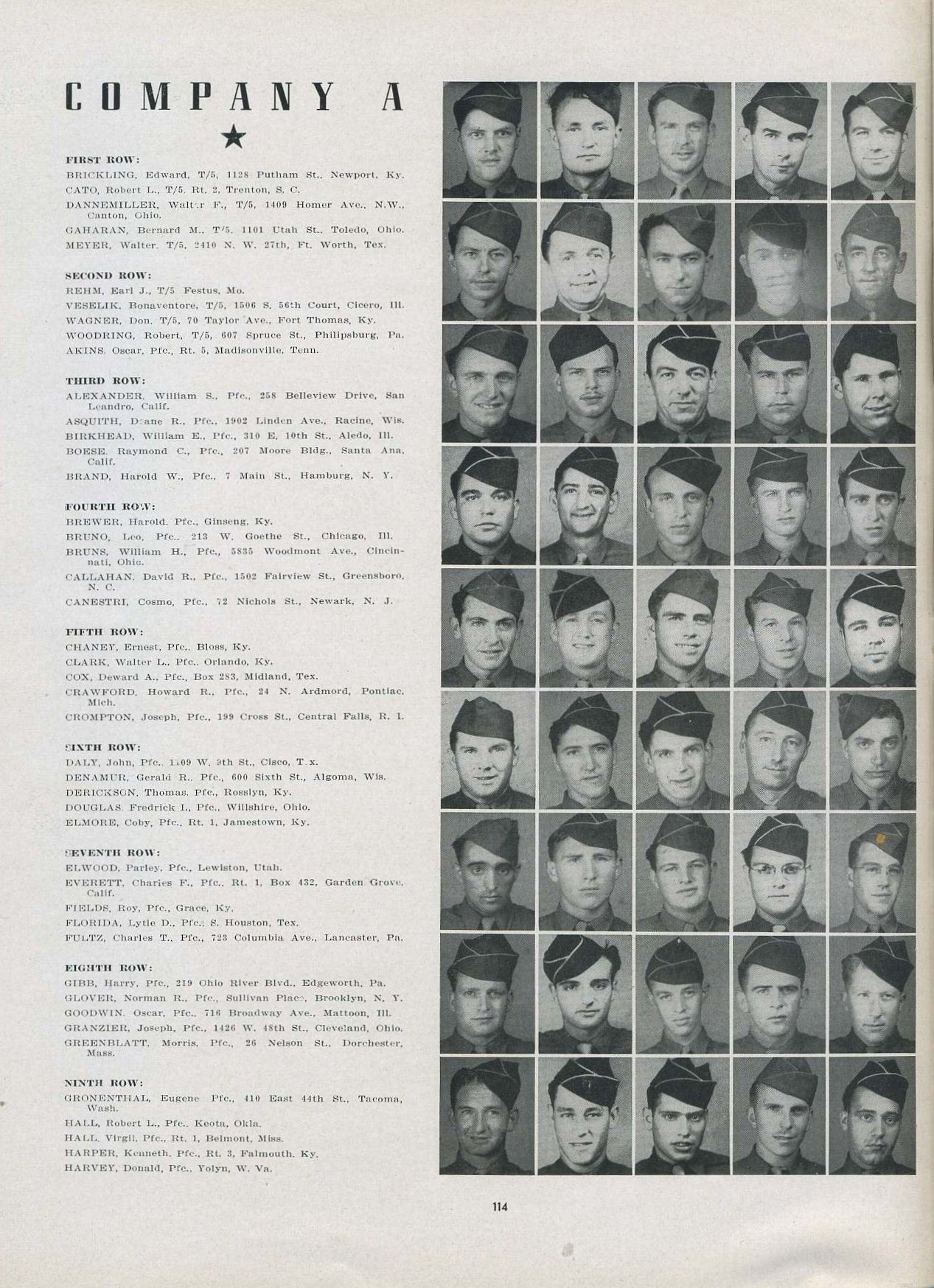
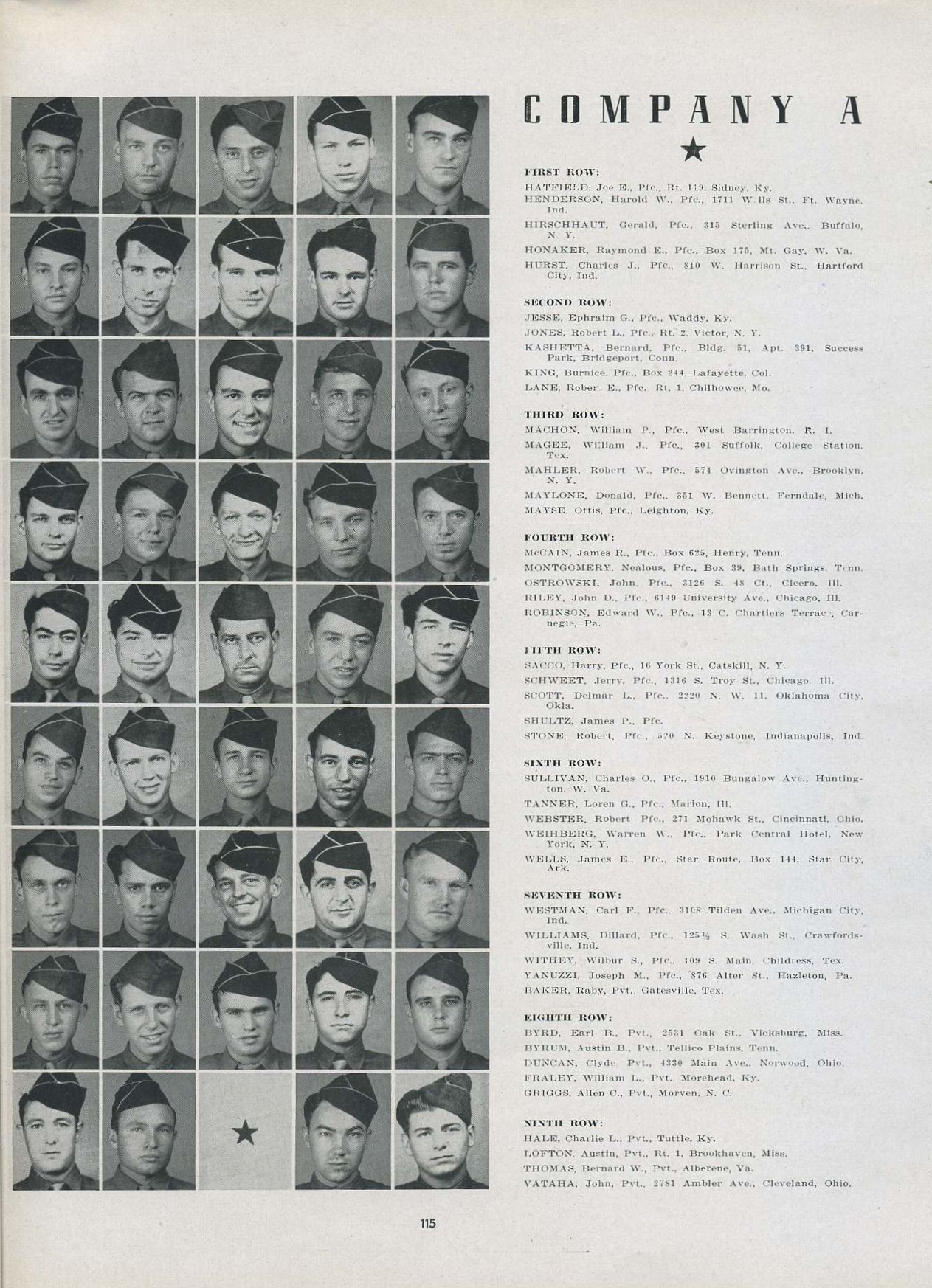
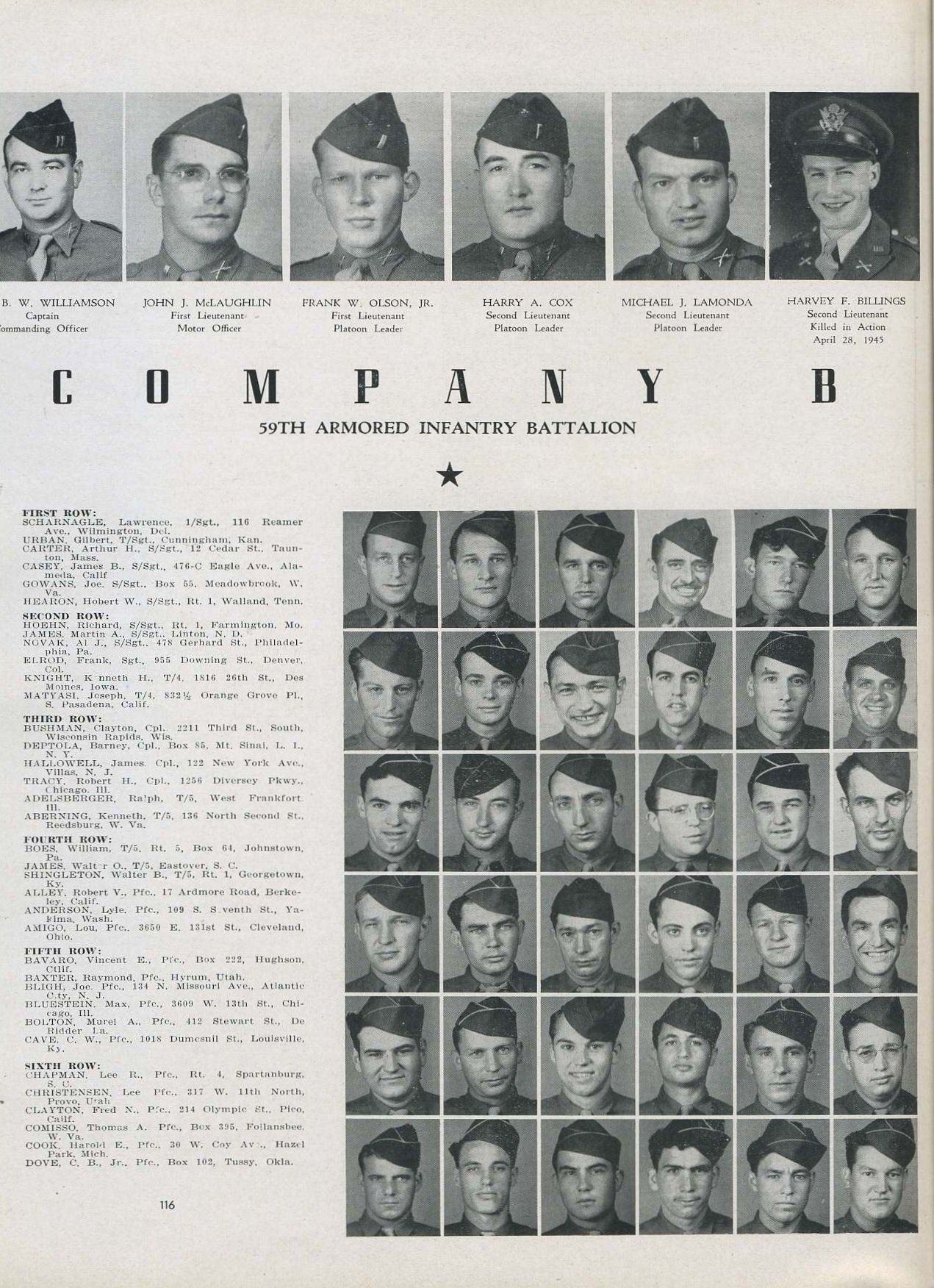
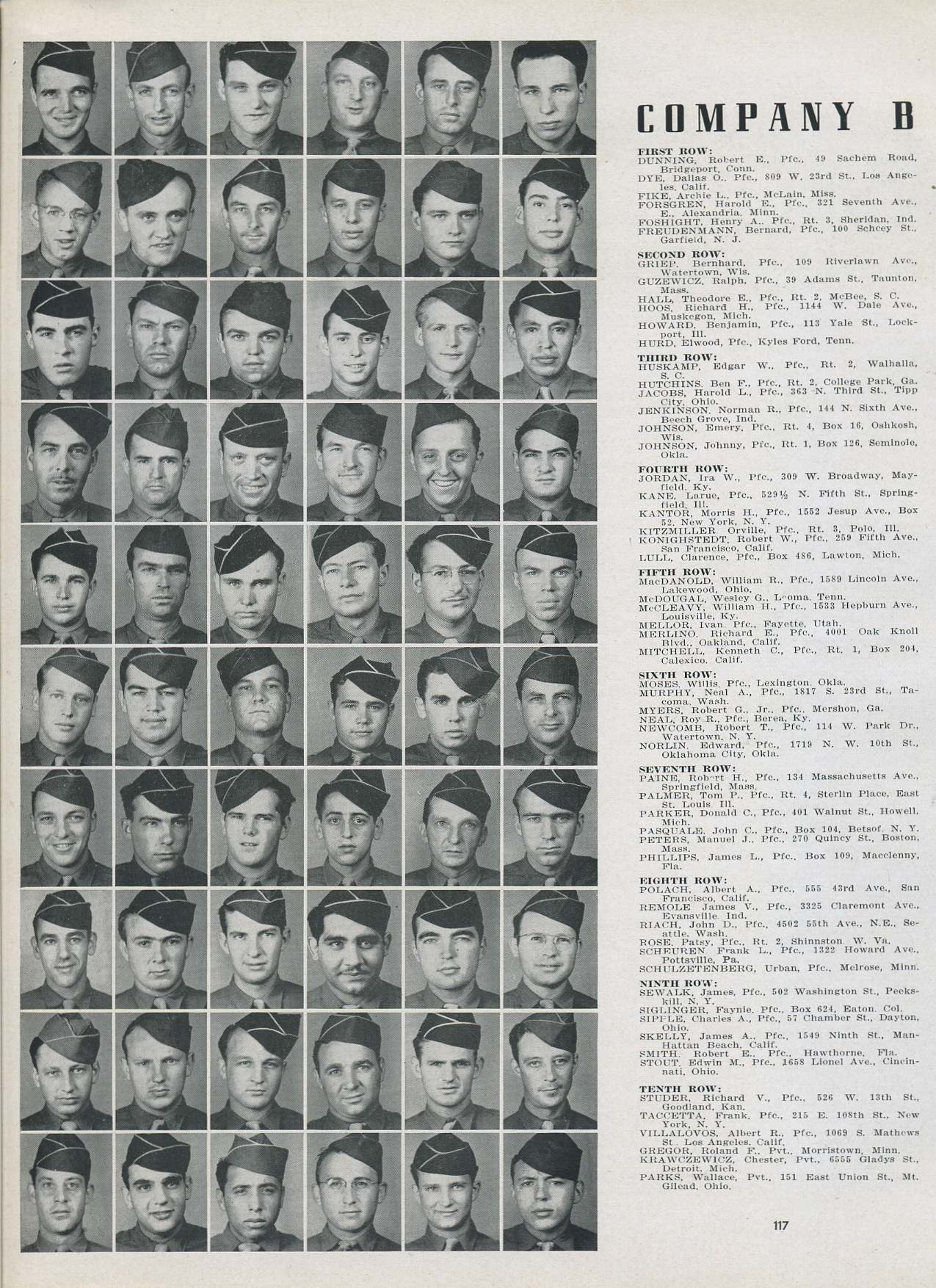
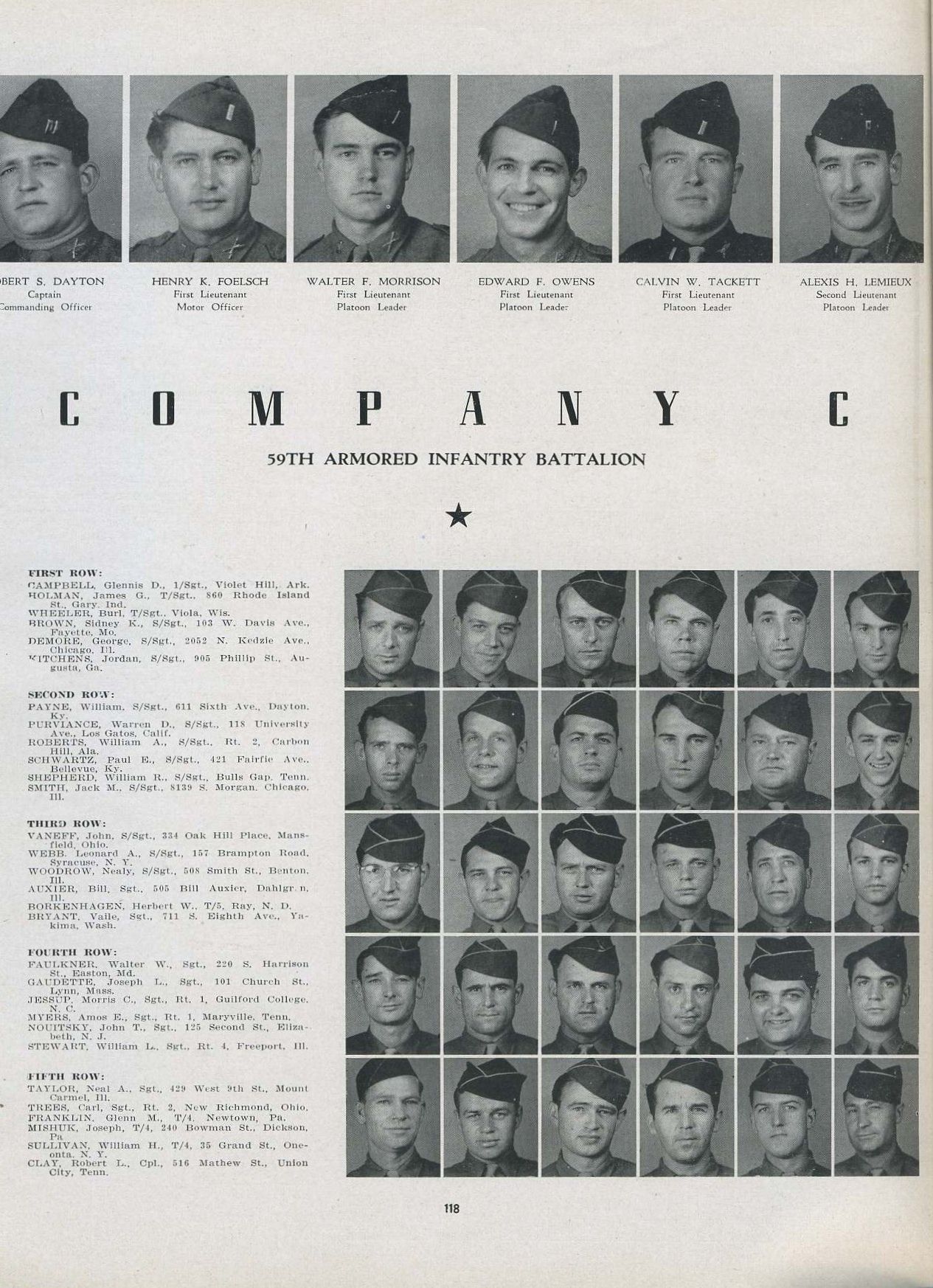
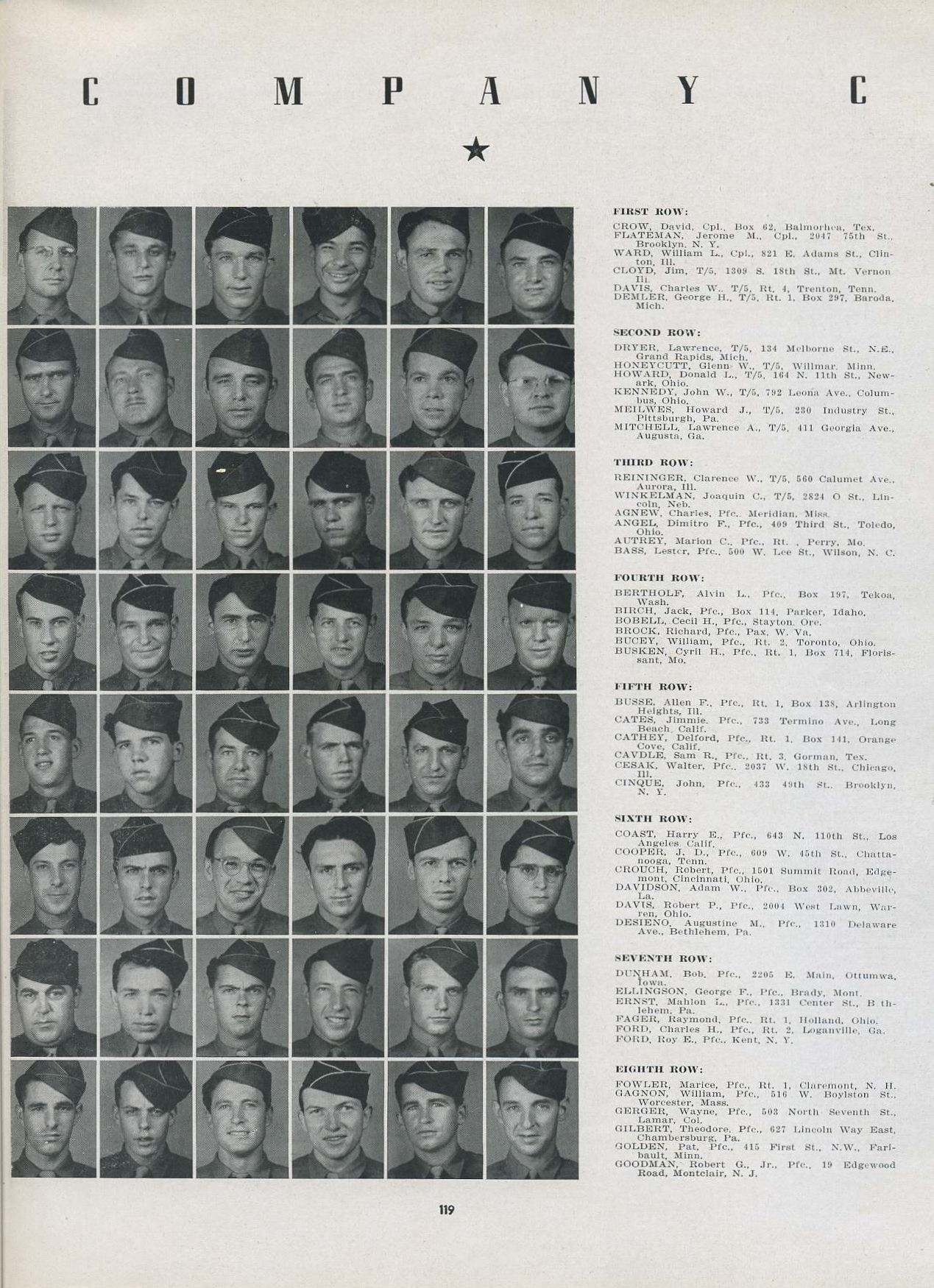
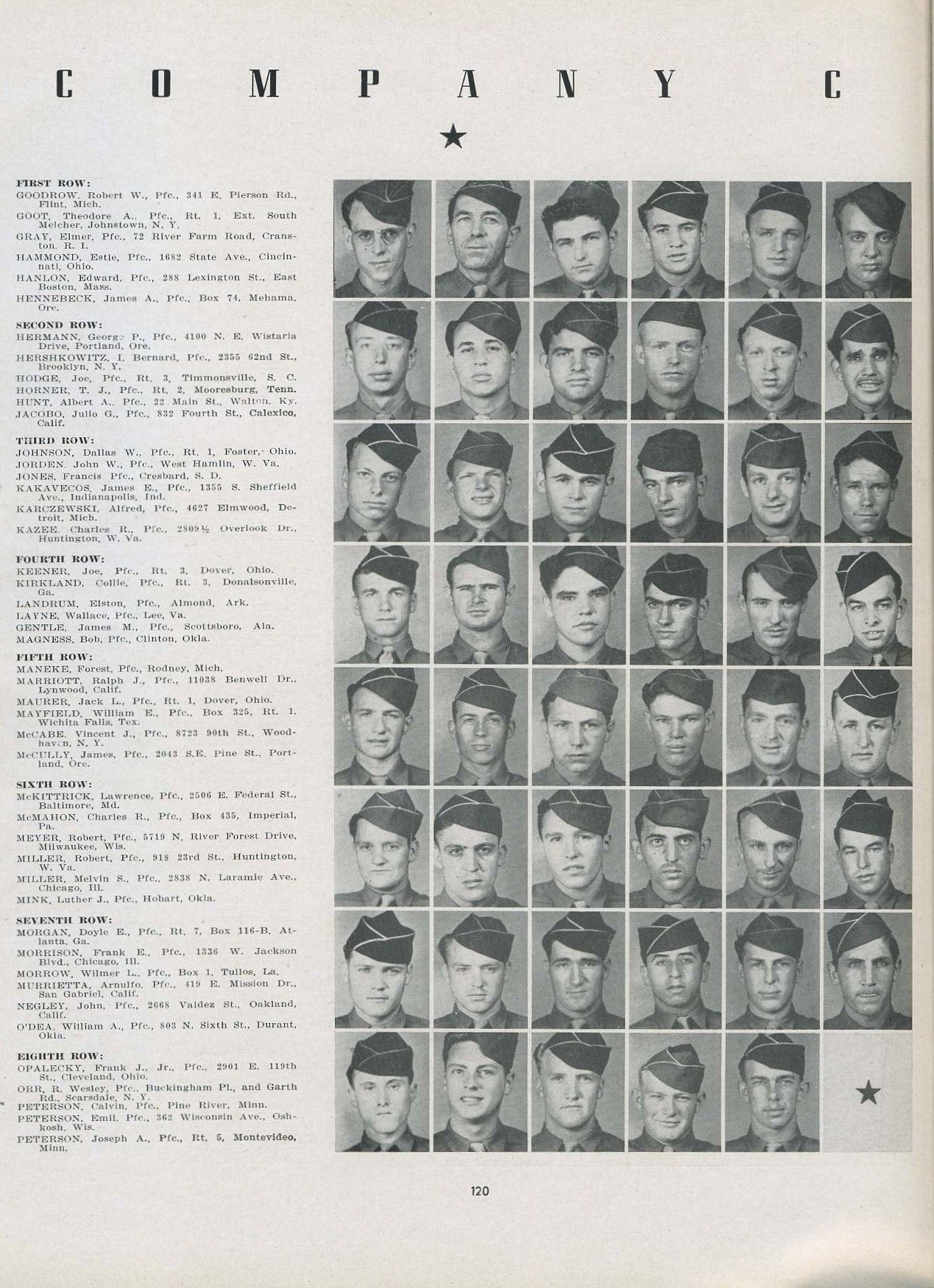
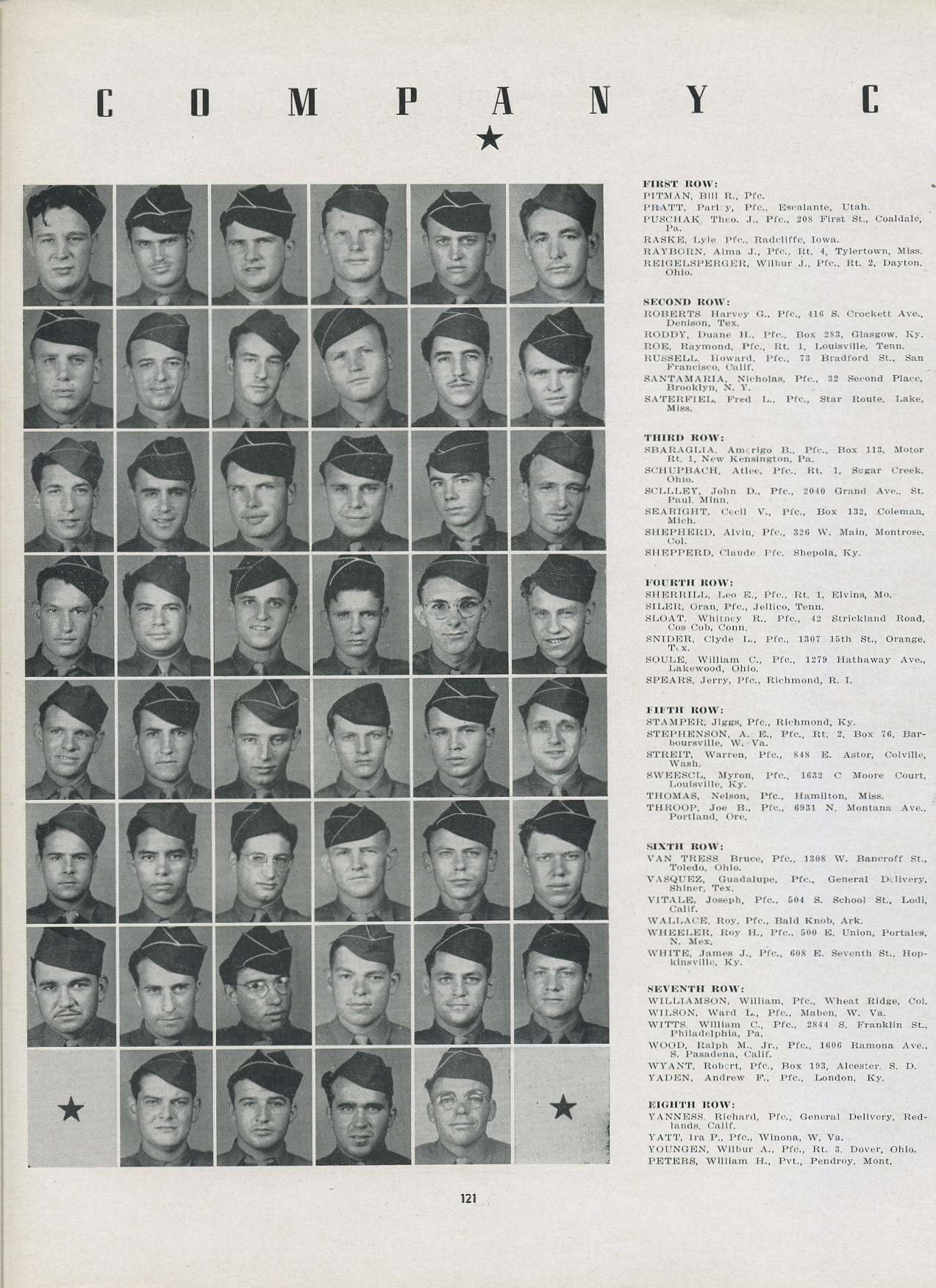
MOVEMENTS OF THE 59TH ARMORED INFANTRY BATTALION
Lynn Polgar
The 59th Armored Infantry Battalion arrived at LE HAVRE, France on 29 January 1945, disembarking on the morning of 30 January. It was then transported to an area in the vicinity of TOTES, France. The weather was very cold, and during the night about three inches of snow fell.
The Battalion Head Quarters was established in a Chateau at BOURDAINVILLE. The next few days were spent in improving the area and the living quarters for officers and men. Many enlisted men were billeted in barns, but managed to make them comfortable with the usual display of American GI ingenuity. The first and second weeks were confined largely to receiving, unpacking, cleaning and servicing TAT, organizational equipment and vehicles. A training program occupied most of the time from the second week until 16 March 1945.
On 15 March 1945 the Battalion as part of Combat Command ‘B’, received orders to prepare for movement to the vicinity of LUNEVILLE, France, and at 22:45 16 March 1945 the movement began as an administrative march. The Battalion bivouacked at SOISSONS on 17 March, at VITRLY on 18 March, and on the afternoon of 19 March closed into an assembly area south of AVRICOURT, France. The Battalion Command Post was established at LEINTREY. Maintenance, supply and administrative functions were carried out until 25 March.
At 00:30 26 March the Battalion marched to ZWEIBRUCKEN, Germany, where it occupied a large area south and east of ZWEIBRUCKEN. The mission was to police the area and support Military Government. Companies were located in widely separated locations, and conducted extensive mounted patrolling. The Battalion Headquarters was located at HOHFROSCHEN, near PIRMASENS, Germany. This mission was conducted for approximately one week, and was uneventful.
The Battalion left this location at 01:00 2 April 1945 and made a march to SOBERNHEIM, Germany. The mission again was to police, garrison, and reinforce the Military Government in the assigned area, and also to protect roads, bridges, and railroads in the area. The Battalion remained here through 5 April.
** On 4 April 1945 Combat Command ‘B’ was attached to VIII Corps and was ordered to move to the vicinity of ALSFELD, Germany to relieve elements of the 4th Armored Division. The Battalion departed at 09:57 5 April and closed into its assembly area east of ALSFELD at 21:15, 5 April, with Headquarters at BREITERBACH. On 6 April a move was made from BRETERBACH to OBEHELSBURGE, which was reached at 19:15, 6 April. At this time Combat Command ‘B’ was released from VIII Corps and attached to XX Corps. The Battalion remained at OBERHELSBURG until 8 April, during which time maintenance and re-supply were affected in preparation for combat.
Orders were suddenly received changing the assigned mission, and the Division was ordered to move to the vicinity of the RUHR POCKET. The Battalion, which by this time had been converted into an infantry task force by the addition of Company ‘A’, 24th Tank Battalion and the loss of Company ‘B’, 59th Armored Infantry Battalion, countermarched from OBERHELSBURGN to an assembly area southwest of ALTERKIRCHEN, closing at 05:45, 9 April 1945. Headquarters was established at LIMBACH where preparation for combat was immediately initiated and conducted during 9 and 10 April.
On 10 April the Task Force entered the Battle of the Ruhr by marching to the SIEG RIVER and closing near SIMBURGH at 16:25 that afternoon. The mission of the Task Force was to lead the Combat Command attack and to secure a crossing or crossing site across the AGGER RIVER. Light or any artillery greeted the leading elements of Company ‘A’ as they entered SKIGSING. A blown overpass in SEIGBURG blocked the advance temporarily, but a bypass was established through a railroad yard. Company ‘A’ at this time received the first casualties within the Task Force when an enemy mortar shell wounded two enlisted men and damaged a half-track. A new road block was encountered northeast of SIEGBURG, and a circuitous route was followed which brought the Task Force to the Autobahn. A further advance to the northeast brought the Task Force to the AGGER RIVER. The bridges had been blown, and the river was found to be unaffordable.
At 19:40 Company ‘A’ got across the river and established a small bridgehead, supported by the assault gun and mortar platoons. The crossing was made under mortar, artillery, and heavy flak fire from the vicinity of TROISDORF. Several of these guns were silenced by the assault gun and mortar platoons. Company ‘C’ crossed the river at 20:40 to the right of Company ‘A’. Company ‘B’ reverted to the Battalion for the bridgehead only, and crossed the river between ‘A’ and ‘C’ Companies, extending the bridgehead. After the bridgehead was secure, attached engineers from Company ‘B’, 124th Armored Engineer Battalion began construction of a pontoon bridge, which occupied them throughout the night.
At 07:30, 11 April, while the bridge was still being completed, Company ‘B’ moved forward to widen the bridgehead. It soon encountered small groups of enemy, and took its first prisoners at this time.
On completion of the bridge, the Task Force passed through and our forces withdrew from their bridgehead position and prepared to follow. The crossing was made without incident and the Task Force followed the Tank Task Force for the better part of the day. It received intermittent artillery and mortar fire and removed two road blocks at ELSDORF which had been by-passed. The leading elements reached VINOST at 20:30, but the Battalion Headquarters and elements behind it had become detached while passing through RATH. Considerable small arms fire had been encountered by them in the streets of RATH, and at the same time heavy artillery and mortar fire began to fall on the town. The troops where were caught in this town were reorganized, and moved forward to rejoin the forward elements of the Task Force at VINGST shortly after daylight on 12 April.
At 10:45, 12 April the Task Force moved toward DUNNWALD. After proceeding about four miles, the leading unit was ambushed in a village which had been displaying many white flags. The resistance, consisting chiefly of automatic weapons, was quickly eliminated and the Task Force then moved rapidly to the outskirts of DUNNWALD. At this point the column was delayed by a defended road block. As the first platoon of Company ‘C’ attempted to reduce it, the enemy counterattacked down two parallel streets. The counterattack was repelled only after bitter fighting, in which the above platoon lost four men killed and five men wounded. The Task Force assembled at DUNNWALD that night, under intermittent mortar fire.
Also on 12 April, the trains of Combat Command ‘B’ were ambushed by a strong and well organized enemy, estimated to be at least 250 men. The 4th platoon of Company ‘A’, which was attached to Head Quarters, Combat Command ‘B’, became heavily involved in this action. The platoon suffered nine casualties in the first few minutes but assisted in repelling the attack and in taking a large number of prisoners. The Transportation platoon of Service Company also took part in this action and suffered heavily, with four drivers killed and six wounded. It was only by extremely hard fighting that the Trains were saved from destruction.
The Task Force next received orders to attack to the northeast, and moved out from DUNNWALD at 14:20, 13 April, with Company ‘A; and a tank team in the lead. As the leading elements approached KEMPER, a road block barred the main route and was by-passed. Indications of enemy activity soon began to appear, and as the column approached EKMPEN a rifle squad half-track was hit by two panzer Faust. A large number of automatic weapons opened up from the houses, forcing the remainder of the platoon to deploy at once. Other elements of the Company moved up and began advancing into the town. In the leading platoon, five men had been killed and eight wounded. Further casualties were caused by heavy enemy artillery fire, and the leading infantry elements withdrew sufficiently to get artillery support. By this time darkness was approaching and a defensive position was established just outside the town. Our artillery and mortars shelled the town throughout the night. Company ‘A’ lost eight men killed and nineteen wounded in that day’s action. The entire Task Force had been under heavy enemy artillery fire throughout the afternoon and received several casualties from it, particularly in the Battalion Headquarters.
On the following morning Company ‘C’ launched a dismounted attack at 07:00, in the face of heavy resistance. By 13:30 it had advanced approximately 1,500 yards through three villages. Considerable trouble was encountered by enemy groups infiltrating into houses on the flanks and sniping from them. A section of three tanks which had moved forward with the leading elements were also hard hit, two of them being knocked out by 88 fire, with two men killed and two wounded. The enemy had a particularly strong artillery and anti-tank position on a high ridge 2,000 yards to the northeast. As Company ‘C’ approached ROTHRICH, it was ordered to hold at that point, as the mission was being changed.
On 13 April the trains had remained in DUNNWALD. On both 13 and 14 April they came under constant artillery fire, and at 17:30, 14 April were moved to DELLSRUCK. They operated from DELLBRUCK for the remainder of the Ruhr Battle.
The Combat Command had been ordered on 14 April to change direction and attack to the north, with METTMANN as its objective. Our Task Force was initially to follow the Tank Task Force. The assault gun and mortar platoons were attached to the leading Task Force, and at 17:00 on 15 April Company ‘A’ was also detached and placed with the leading Task Force to secure a bridge at OPLADEN. The remainder of the Task Force coiled in SCHLEBUSCH on the 15th.
On the following morning the attack from OPLADEN soon became a rout and the Task Force then dashed swiftly to HAAN. At HAAN, the Task Force was ordered to swing northwest and utilize secondary roads to reach the objective, the leading Task force having been held up along the main axis. After proceeding about 3 miles the leading tank was knocked out by a large caliber weapon, apparently 150mm, and the Task Force again had nosed into a strong artillery–anti-tank position. These guns were soon spotted, but could not be engaged by our artillery. They were successfully by-passed, however, and the Task Force then proceeded to its portion of the objective at METTMANN. During this advance, a tremendous number of PW’s were taken, which no one could count or even estimate at the time, and many allied nationals were freed in METTMANN alone. METTMANN was continually shelled by the enemy on the night of 16 April, but the fire was unobserved and did little damage.
On the morning of 17 April Company ‘C’ and Company ‘A’, 24th Tank Battalion were detached and placed under the command of G-2, XVIII Corps for a special mission.
The remainder of the Task Force moved from METTMANN and occupied its portion of a stop line near EGGERSCHEIDT. Later that same day it moved to GROSSENBAUM, out of DUISBURG, where the Battalion coiled. By then the Battle of the Ruhr had ended.
The Task Force moved out from GROSSENBAUM at 23:10, 18 April and closed into an assembly area south of the SIEG RIVER at 07:00, 19 April, with headquarters at LIMBACH, where it had previously been prior to the Battle of the Ruhr. The 19th and 20th were spent in maintenance and re-supply and in resting the troops for a march to the southeast to join the Third Army.
At 00:20, 21 April, the Task Force left on a long march to BAMBERG. It moved to HANAU, where it stopped for a rest at 13:15. The march continued at 19:10, via BAMBERG, to an assembly area in the vicinity of GERBERSBEG, which was reached at 17:00, 22 April. The next three days were spent in preparation for further combat, and on 24 April all officers and platoon sergeants were addressed by the Army Commander, General GEORGE S. PATTON, JR.
At 21:30, 26 April the Task Force moved to a more forward assembly area and closed at PRUTTHA at 06:00, 27 April. At 15:00, 27 April it left PRULTHA and marched south and east toward the DANUBE RIVER below REGENSBERG. The 274th Armored Field Artillery Battalion joined the Task Force at MITTENDORF, in direct support for the next operation. At 19:20 crossed the REGEN RIVER and proceeded to the DANUBE. At 00:20, 28 April the leading unit crossed the DANUBE and proceeded to MOOSHAM, where the Task Force completed coiling at 03:30. Heavy rains were making secondary roads and trails difficult for armored vehicles by this time. At 06:30 the Task Force moved out on secondary roads, attacking southeast toward the ISAR RIVER. The weather continued rainy and it became necessary at one time to reverse the Task Force and place another team in the lead in order to get on a different road network. The advance was as rapid as terrain would permit. Spasmodic mortar and small arms fire harassed the leading elements near BOER-HAFTHAUSAN, but was quickly overcome. Heavy high velocity fire was encountered near DUNHARDT, and the leading team was temporarily stopped by well dug in infantry along the KLEINELAADER RIVER. After this resistance had been eliminated, the column was temporarily broken at VIERHOFEN by bad roads which had mired a large number of vehicles. At this time the trailing elements were subjected to heavy high velocity fire, medium battery of the 177th Field Artillery Battalion knocked out four 88’s and the column then closed up. Just prior to this, the Task force had surprised an airfield at SALCHINGE, and detached a unit to destroy the planes. Later in the day four enemy artillery planes flew over, but quickly left in a hail of machine gun fire. The Task Force coiled at LILLING at 19:00, after having sent out reconnaissance in force to seize any intact bridges over the ISAR RIVER. The enemy blew every bridge on its being approached by our troops.
At approximately 11:00 Companies “A’ and ‘C’ were detached and sent to the Tank Task Force to establish a bridge head across the ISAR RIVER. Companies ‘B’ and ‘C’ crossed over the partially demolished railway bridge at PLATTLING at 15:45. The bridgehead was successfully established in the face of considerable resistance from small arms, mortar and large caliber artillery. At 22:00 the command of the bridgehead operation reverted to this Task Force. Company ‘A’ remained in a reserve location on the west bank of the river. Troops occupying the bridgehead were relieved by another unit at 16:00, 30 April.
At 20:40 this Task Force crossed the ISAR RIVER and moved rapidly southeast to OSTERHOFEN. A road block was encountered at this point, but was not defended as had been previously reported. Instead, the town was lighted up like a Christmas tree and crowds of people lined the sidewalks, cheering and shouting.
The column then changed direction to the southwest, and kept moving throughout the night. By daylight it had progressed 32 miles, with no opposition.
Just prior to daylight at JAGENDORF, a number of anti-tank guns and flak guns were found in the streets unmanned. Company ‘C’ was assigned the mission of destroying these guns and cleaning out the town. One hundred fifty prisoners were taken.
Just at daylight the leading elements ran into trouble at MALGERSDORF, which has since come to be known as ‘HELL’S CORNER’. The lead tank was knocked out by a panzer Faust, and four 88mm guns were seen on a ridge dominating the entrance to the town. The leading elements quickly deployed, after a second tank had been knocked out, and brought heavy fire to bear on the 88 positions, and on parts of the town from which small arms fire was being received. The guns were all knocked out and the leading elements then changed direction to the southeast again. Succeeding elements continued to receive intermittent fire at this town as they passed, but the town finally was completely reduced.
The attack proceeded to a point 3 kilometers north of FALKENBURG, where a large culvert had been blown, temporarily stopping the advance. This was soon by-passed, and the leading elements advanced toward FALKEBURG under cover of artillery fire. As the attack turned west in front of MALKENBURG two 88 guns fired on the leading tanks. In a brilliant display of gunnery, these tanks spotted the guns and destroyed them with one round each before they were able to fire again.
The Task Force then moved unopposed to the INN RIVER, crossing at EISENFELDEN on the INN RIVER at 23:40, 2 May. On 3 May Company ‘B’, 59th Armored Infantry Battalion, reverted to the Task Force and, at 11:00, crossed the INN RIVER in assault boats, pushing on unopposed to NEU-OTTING. It was relieved on 4 May, and returned across the river. The Task Force has occupied EISENFELDER and vicinity since that date and on 6 May moved its headquarters to its present location at SCHLOSSORING.
__________________________________________________________________________________________________________________________________